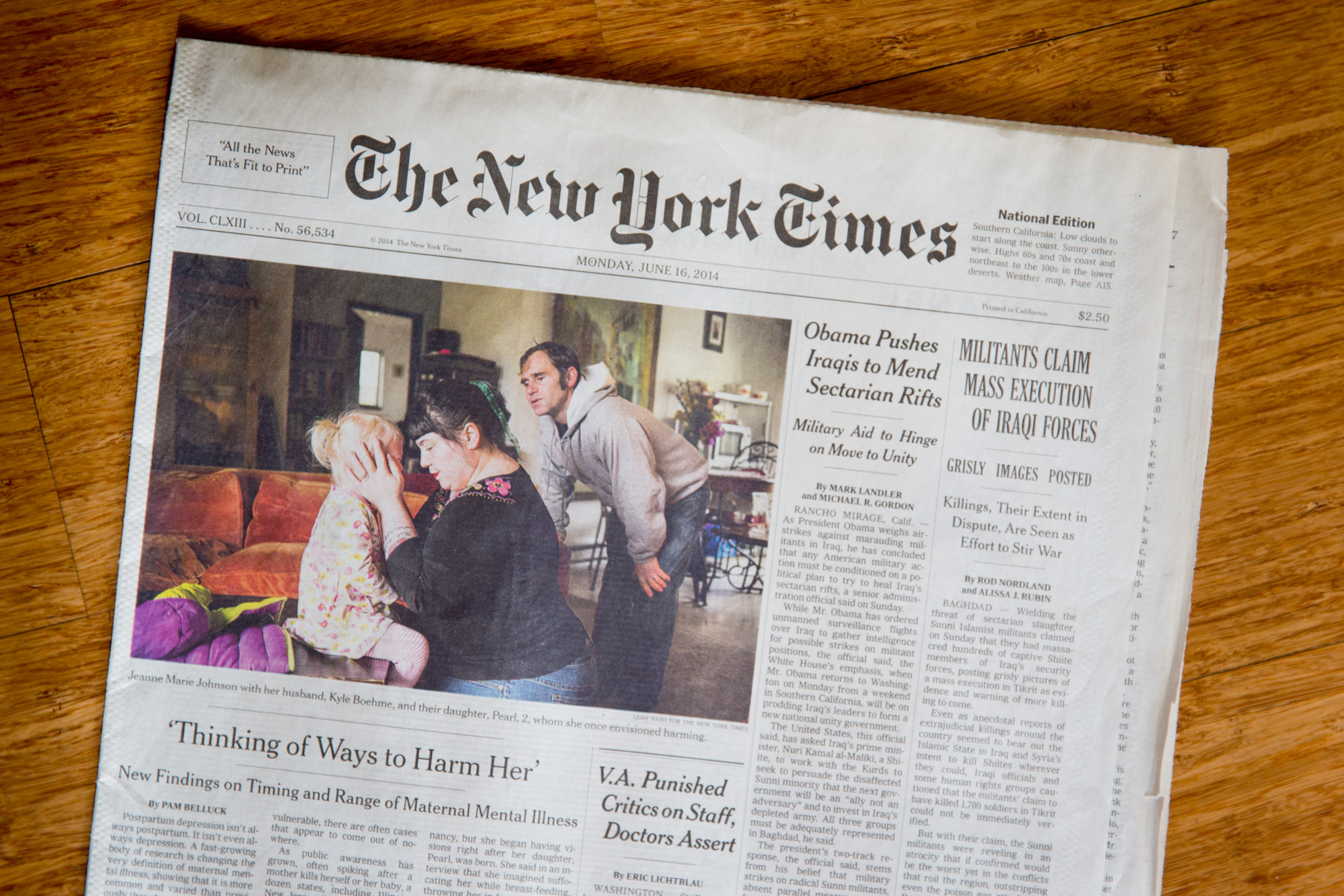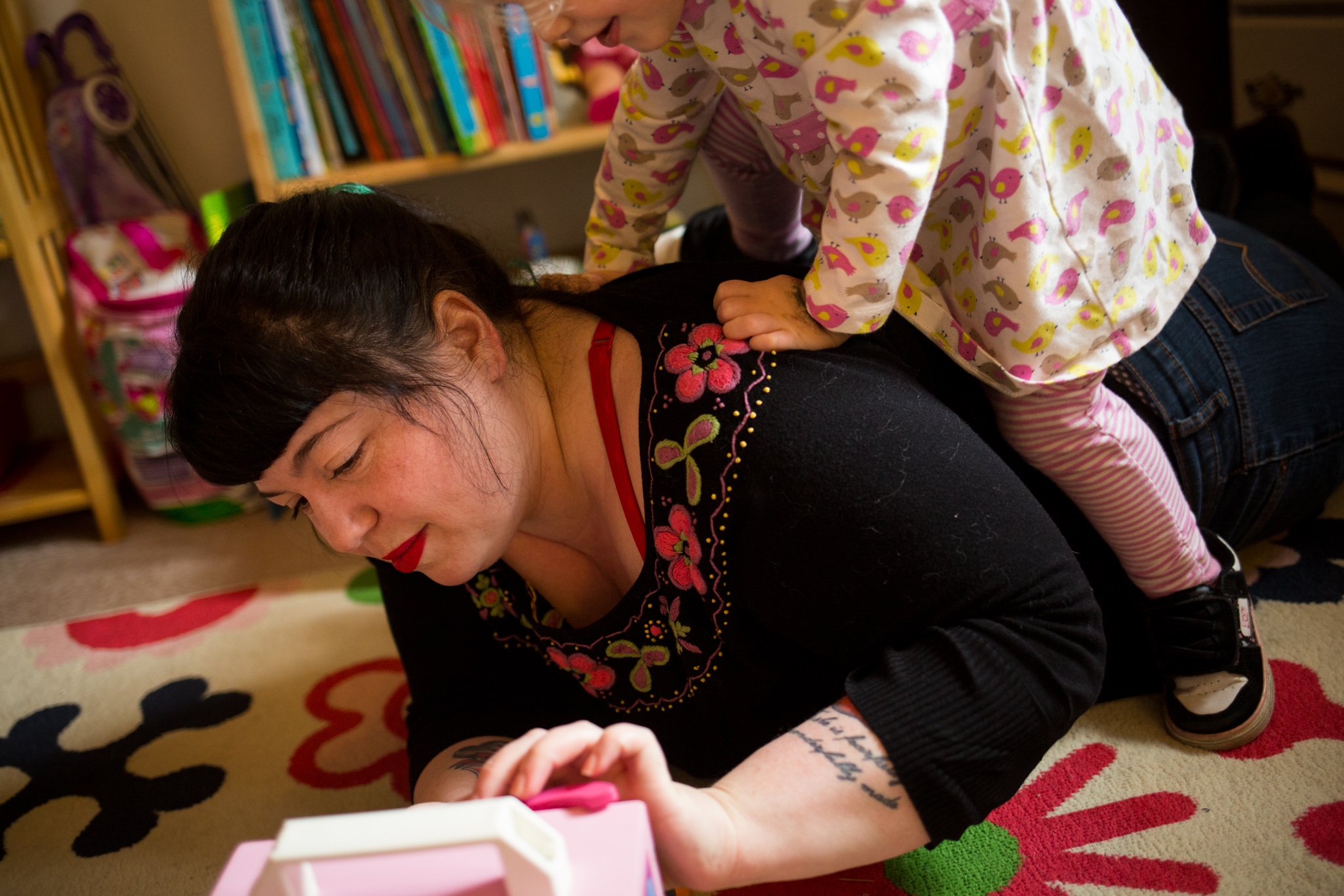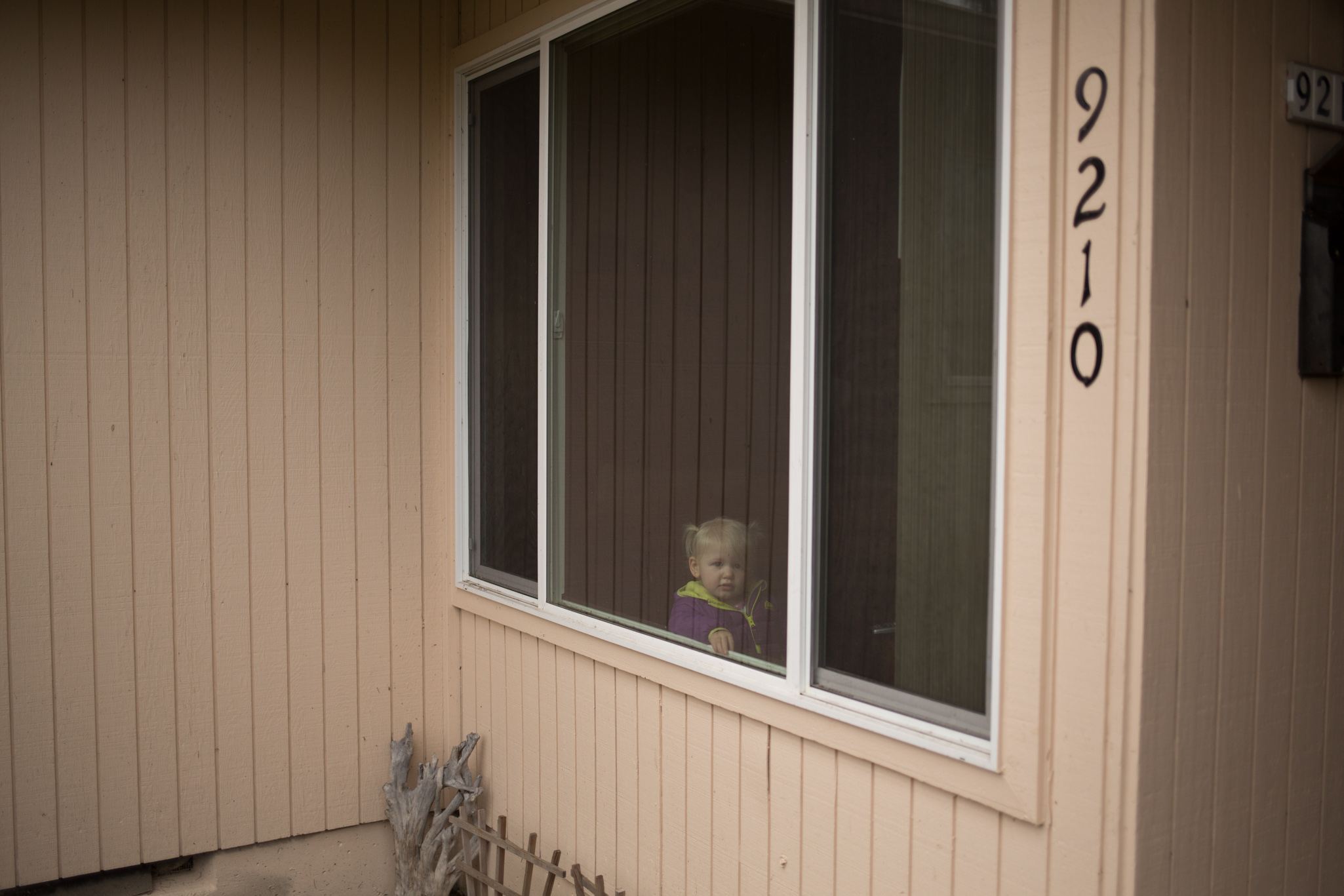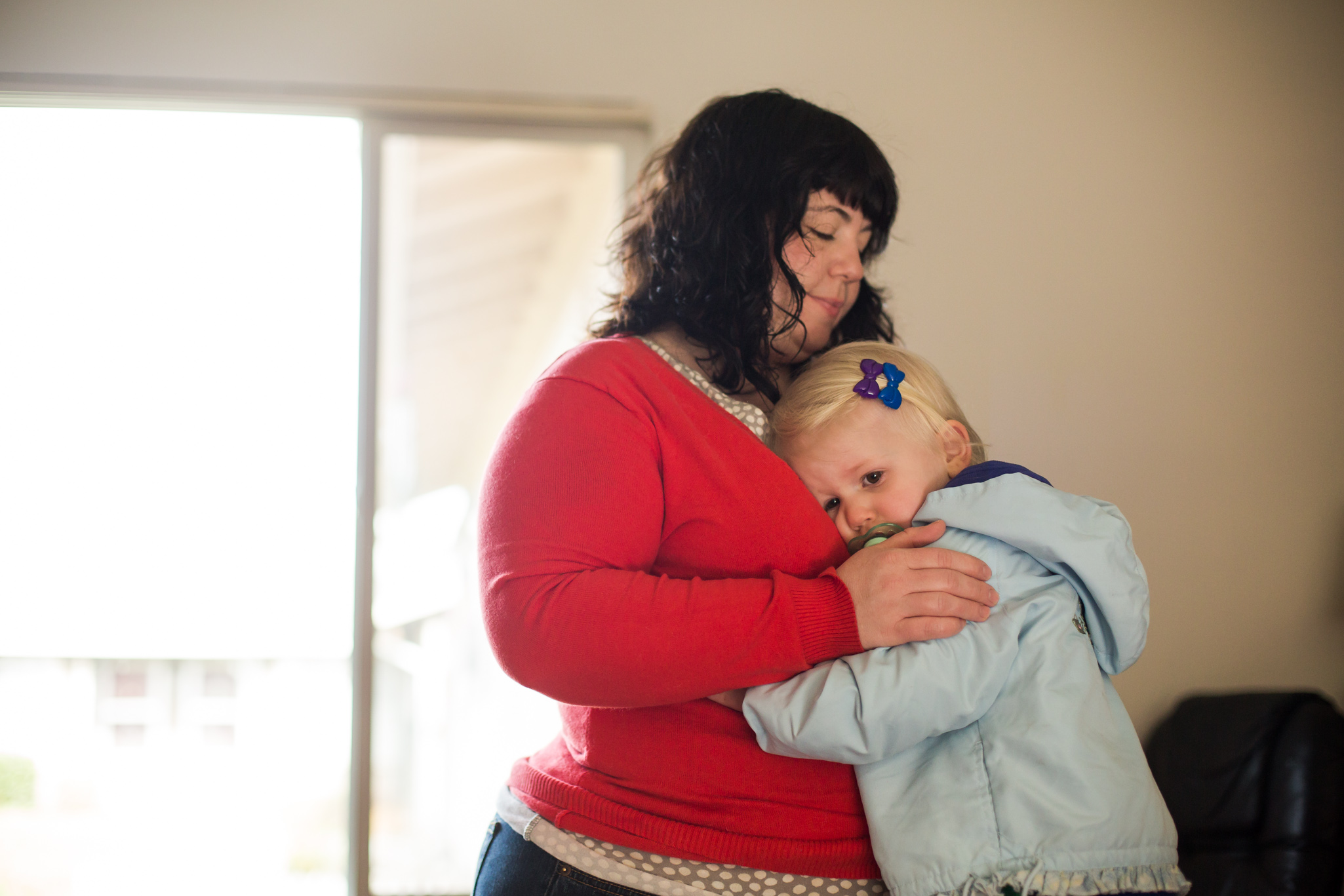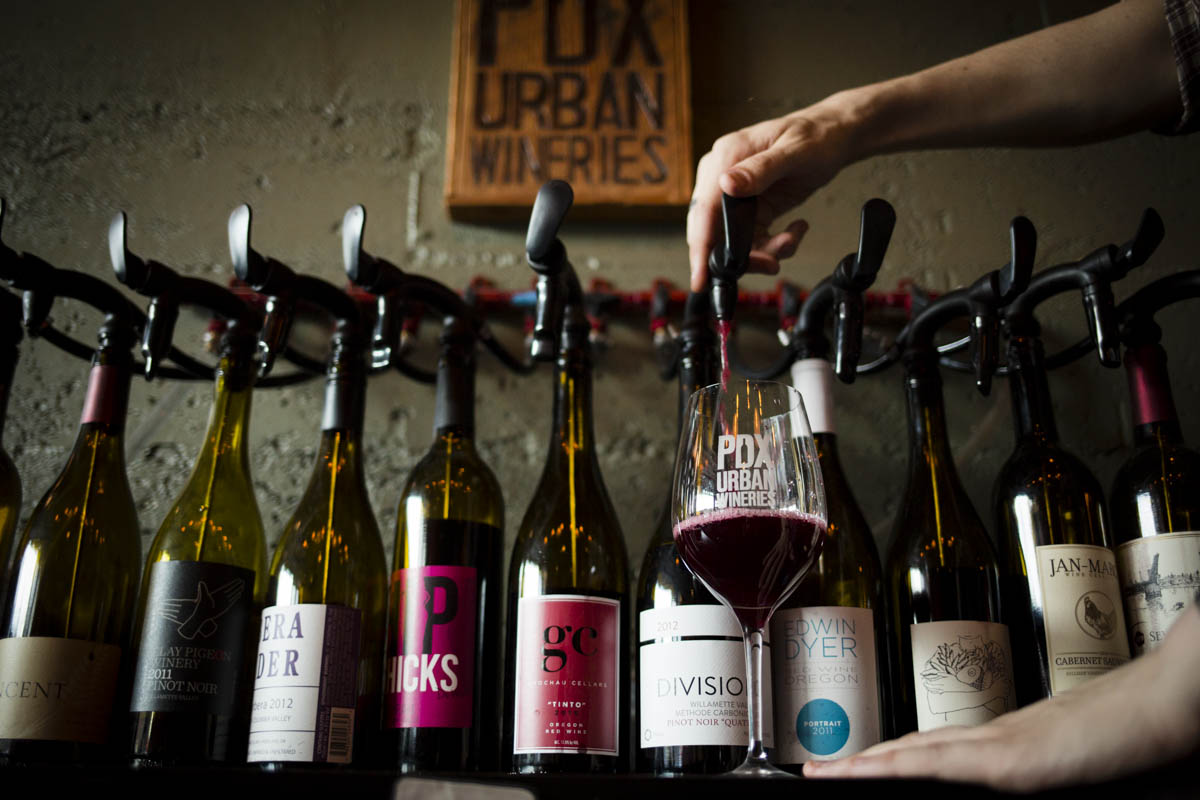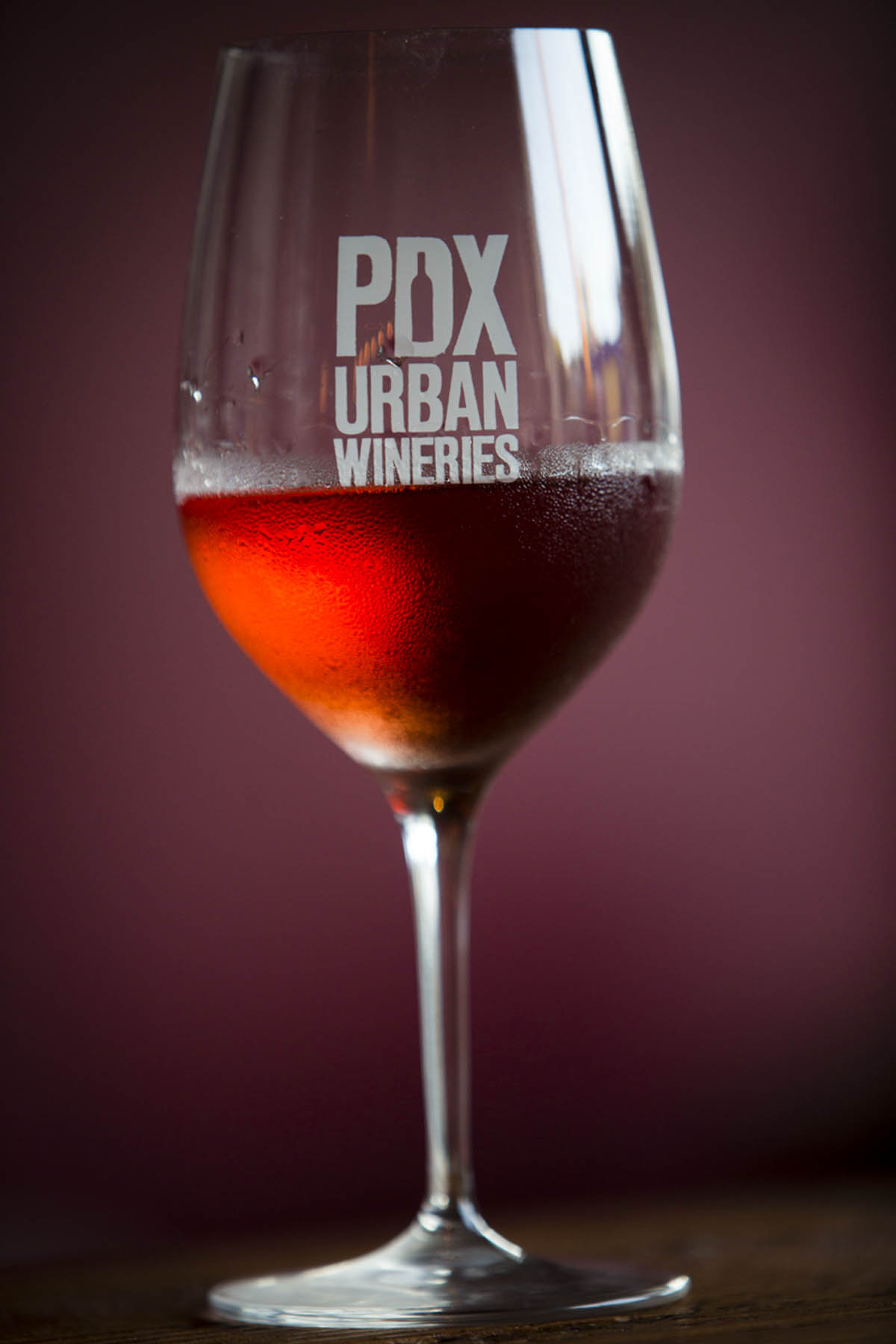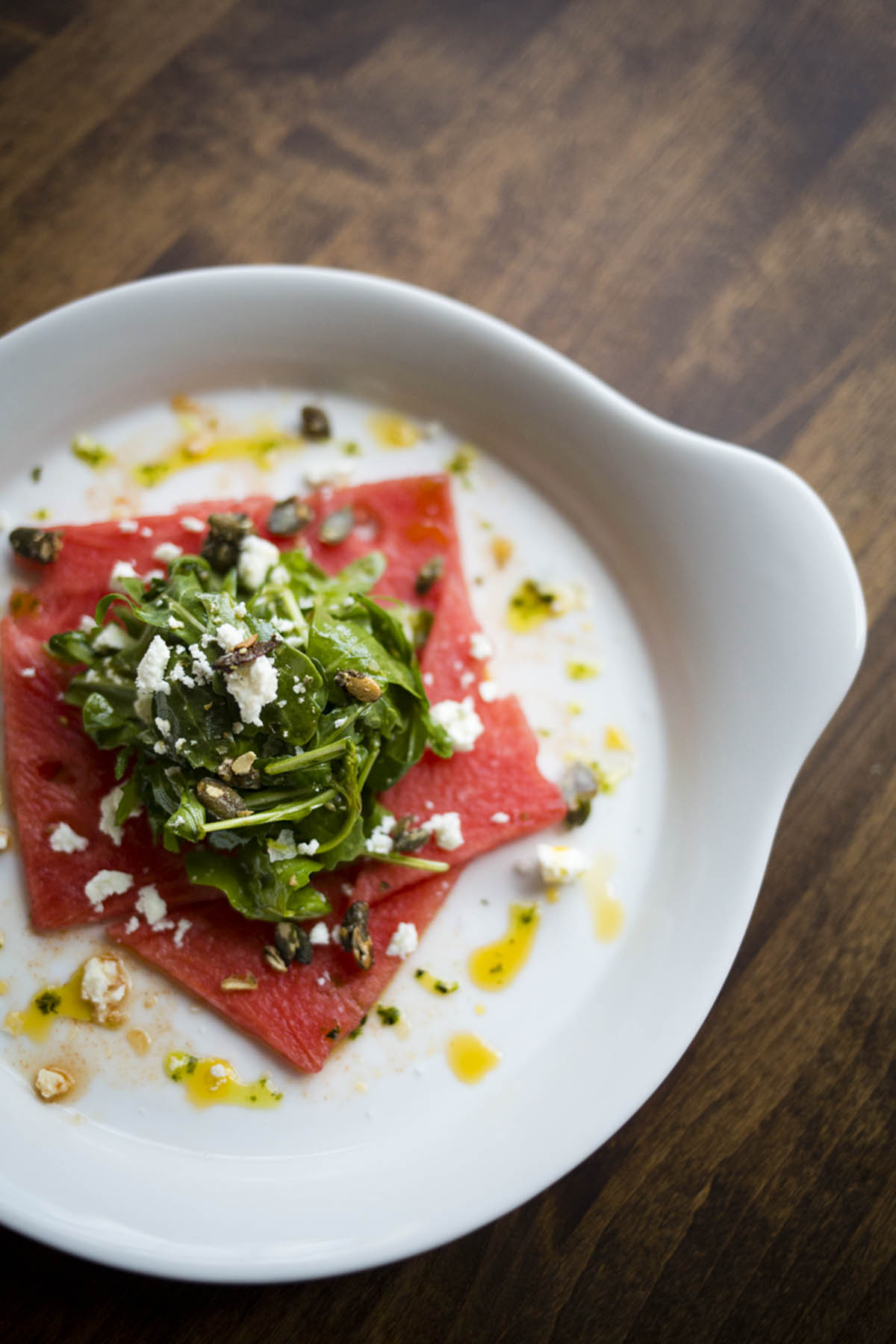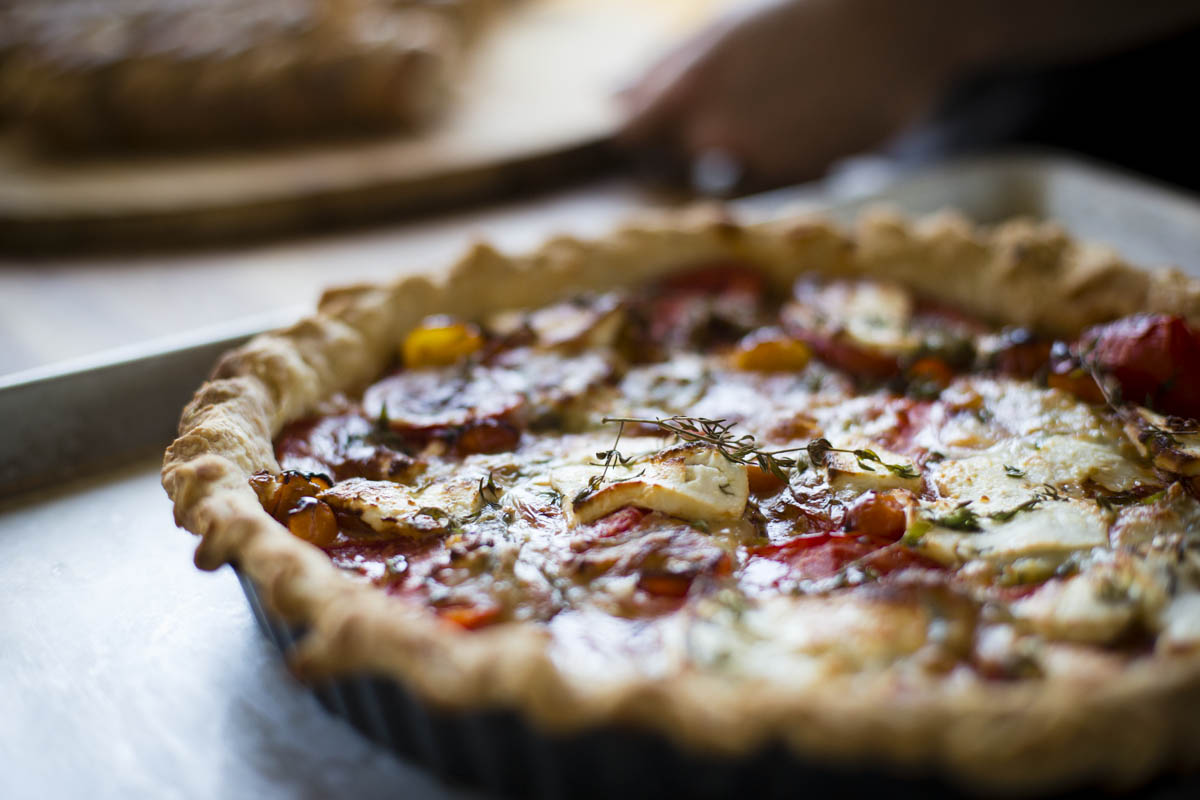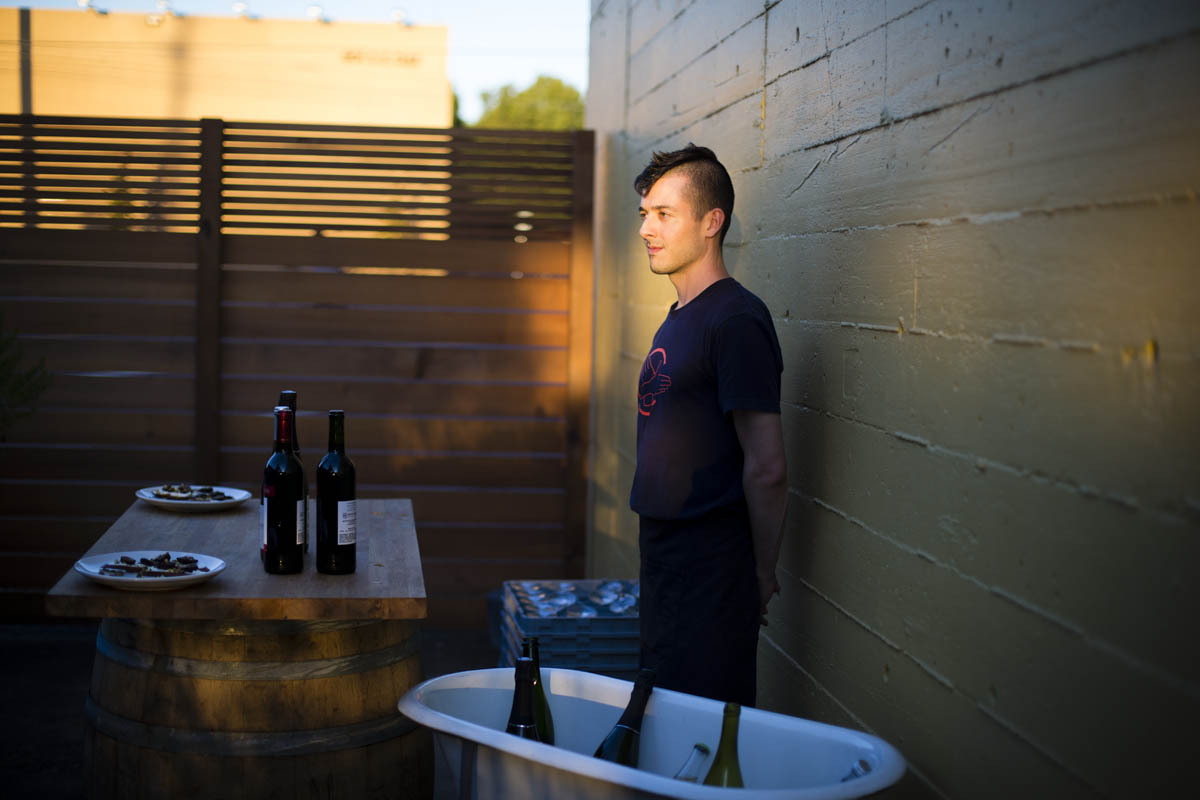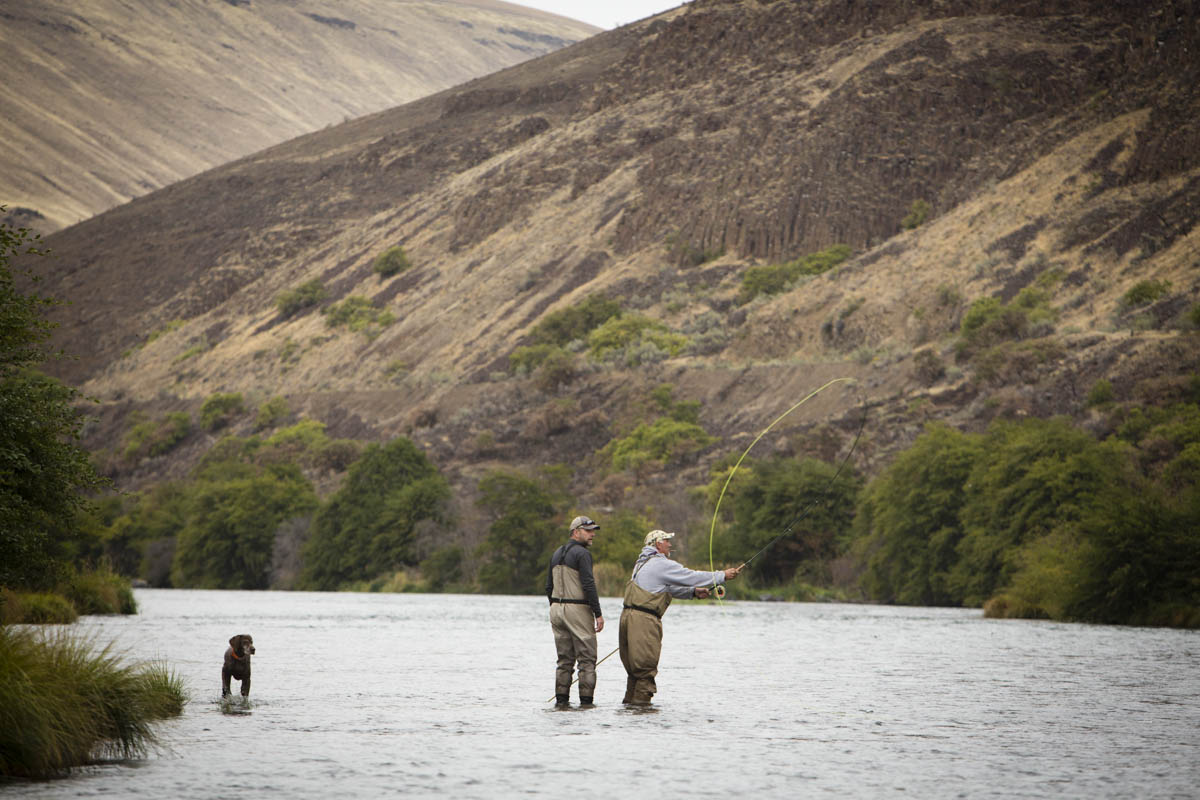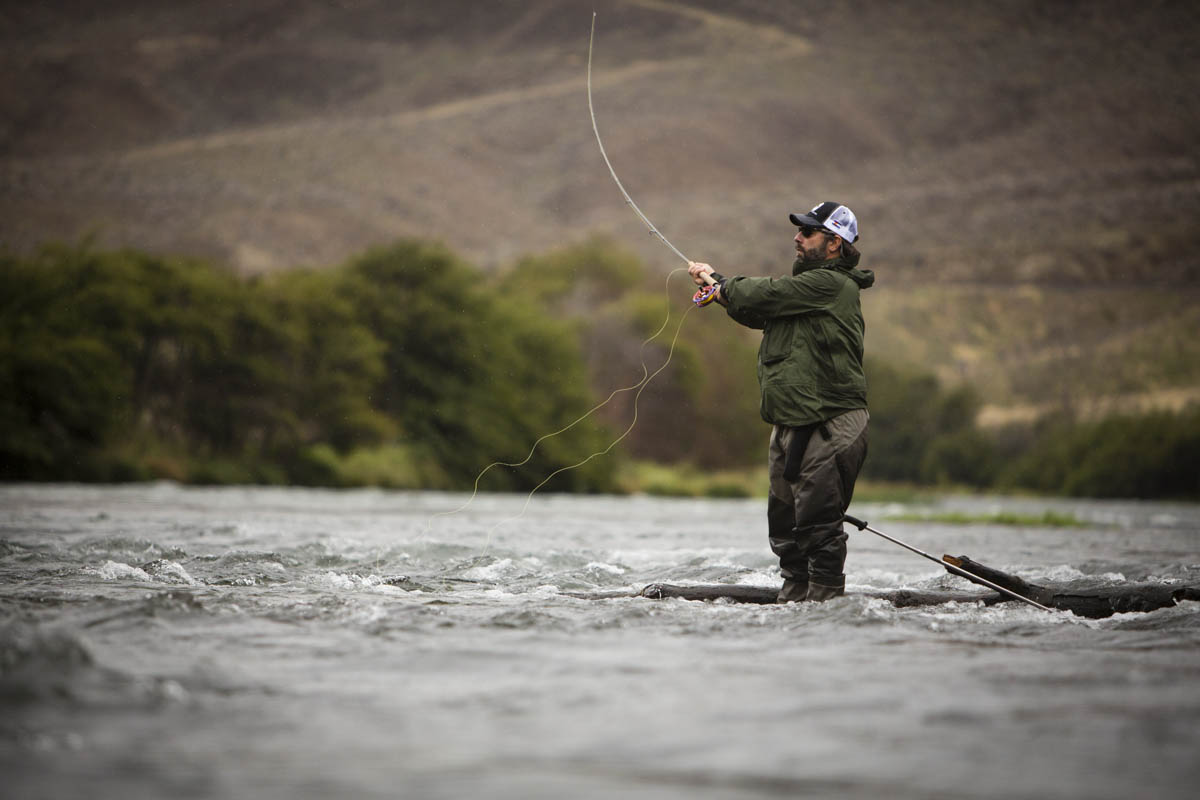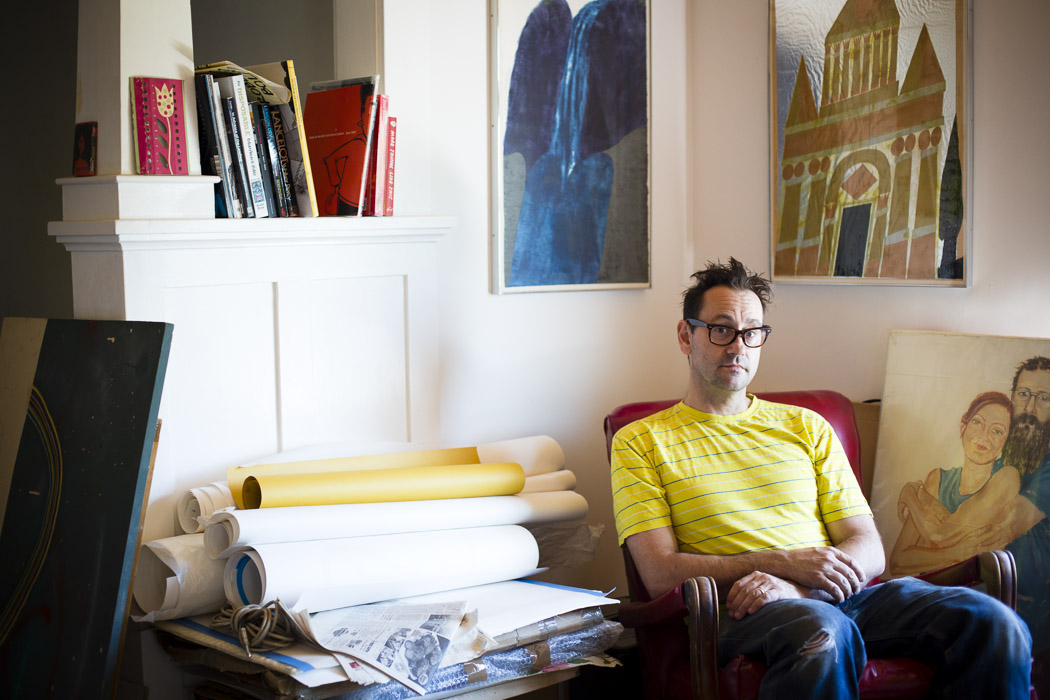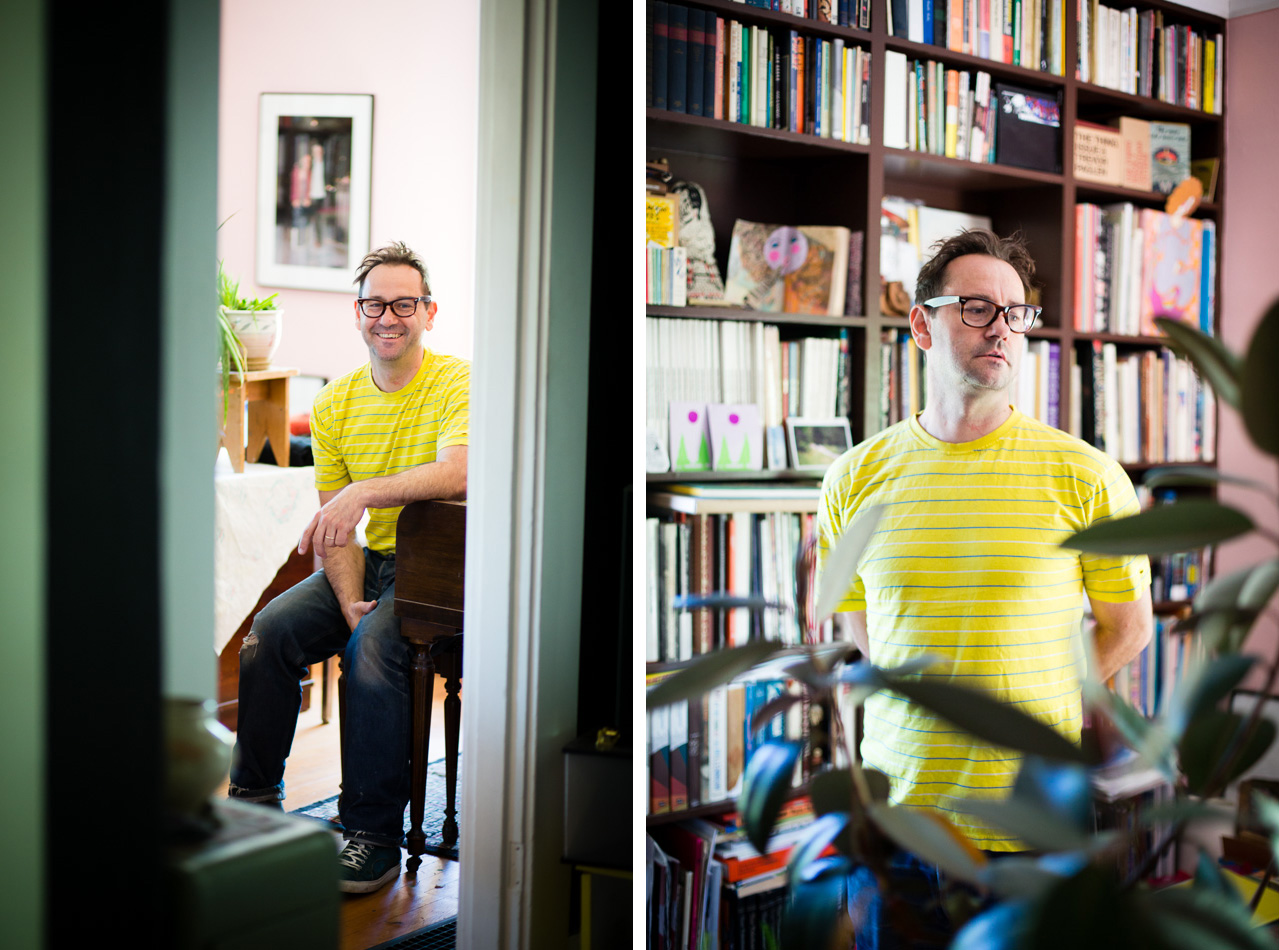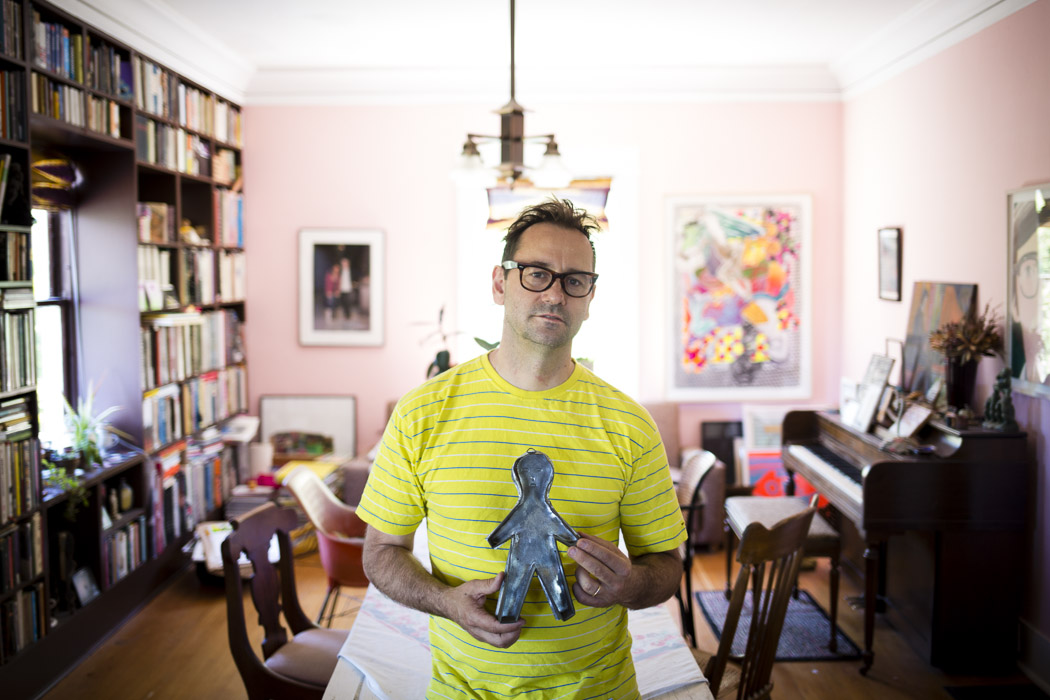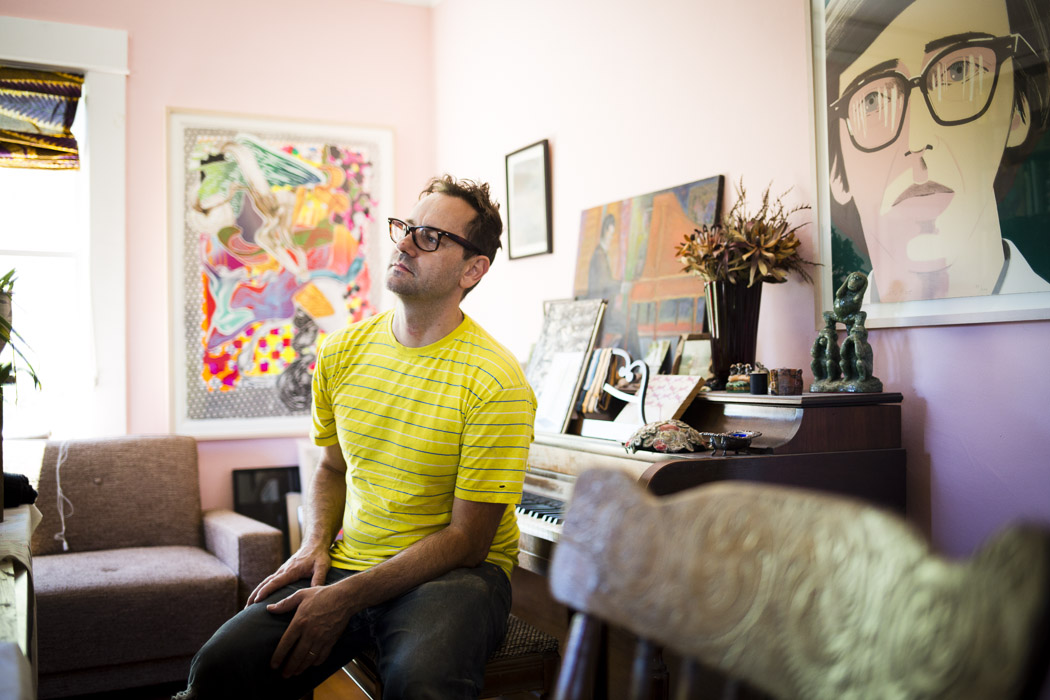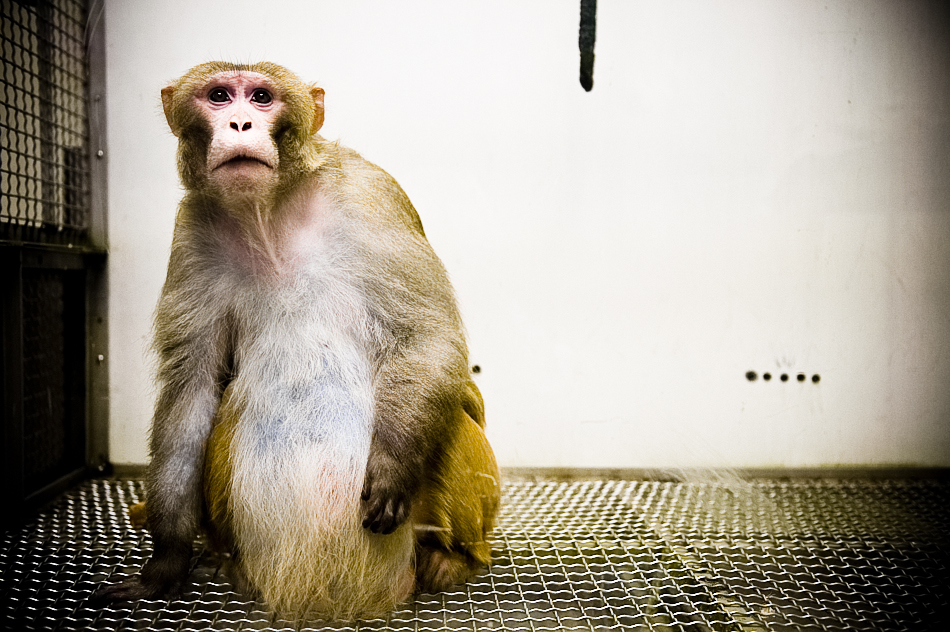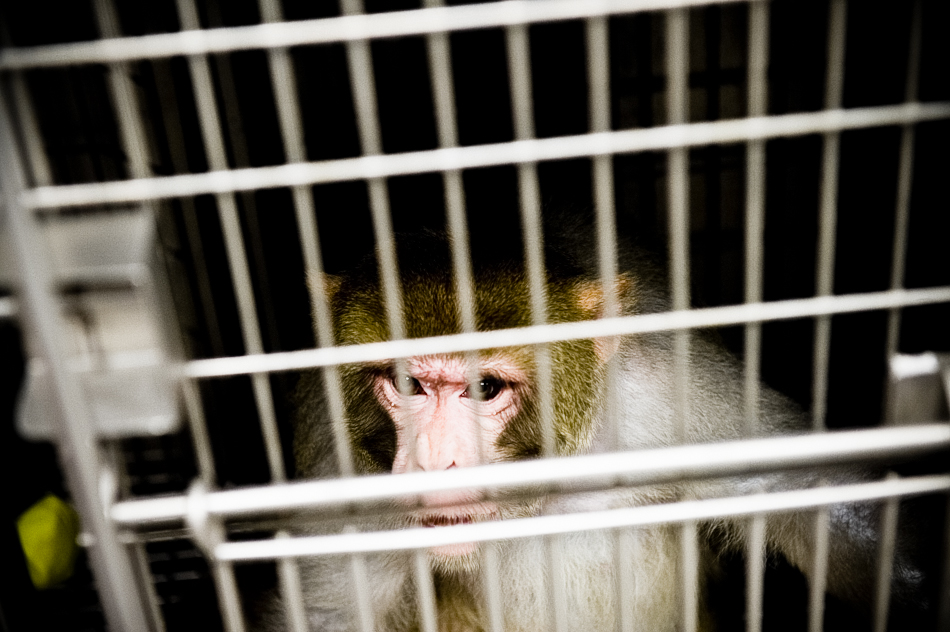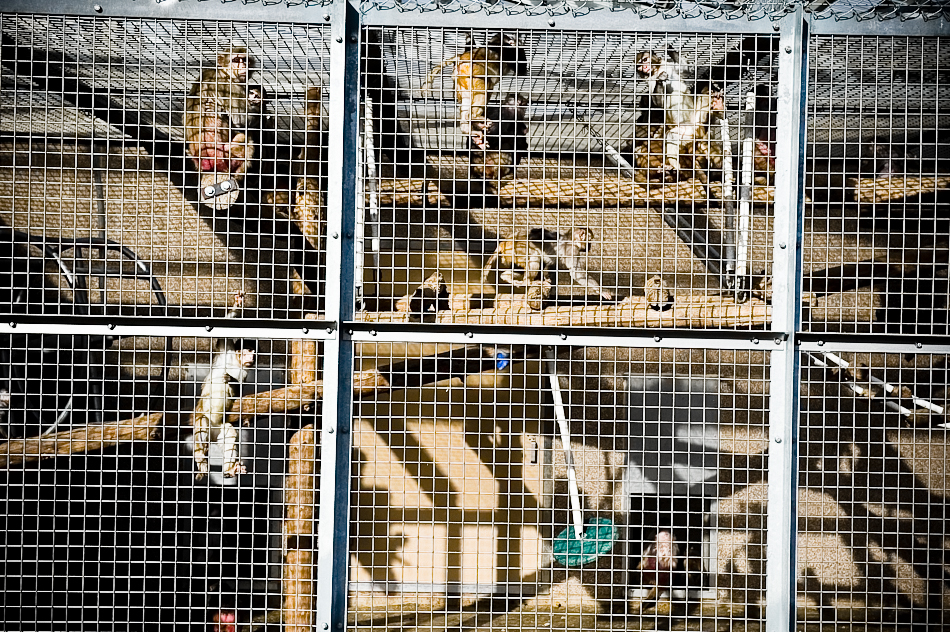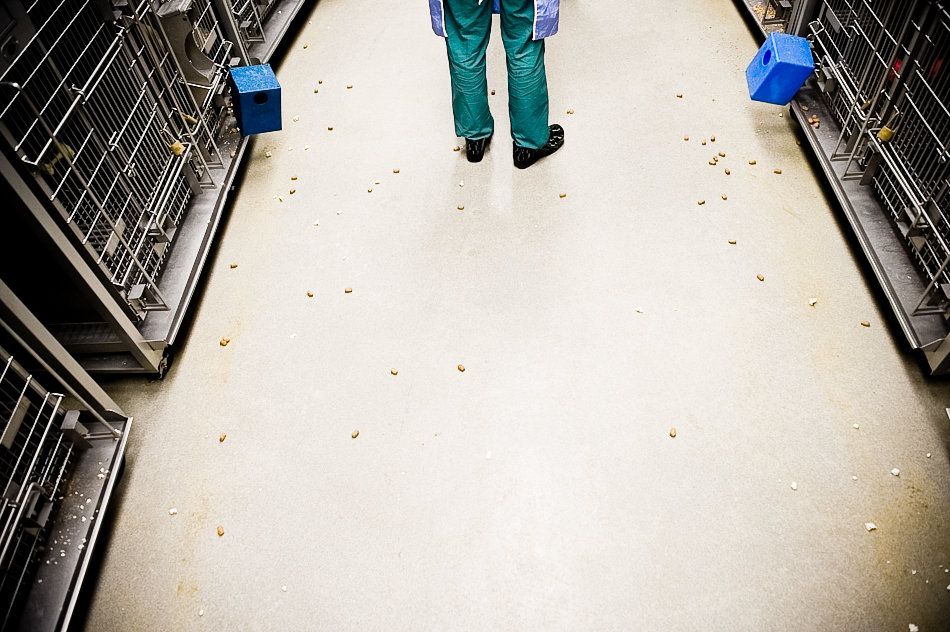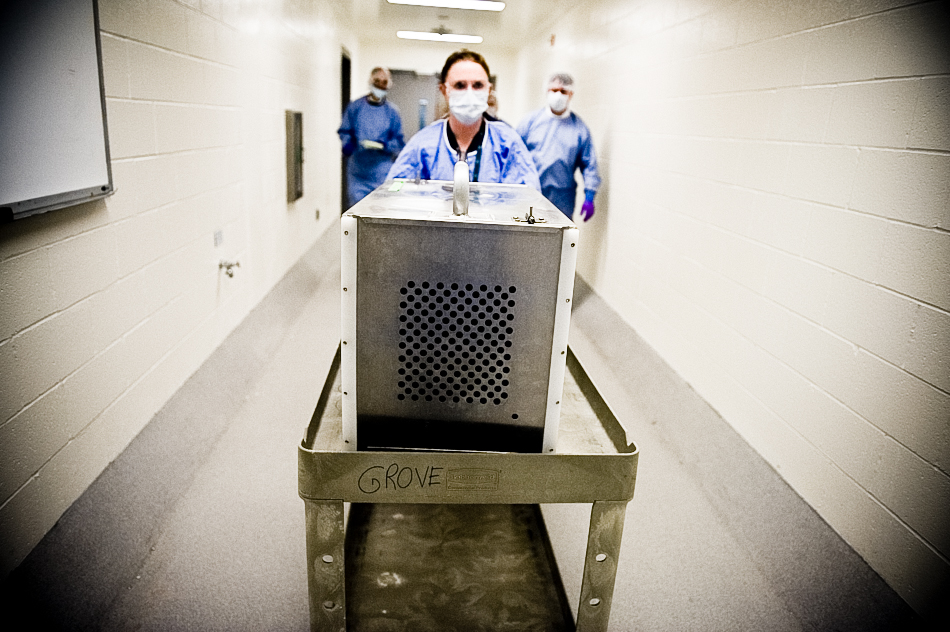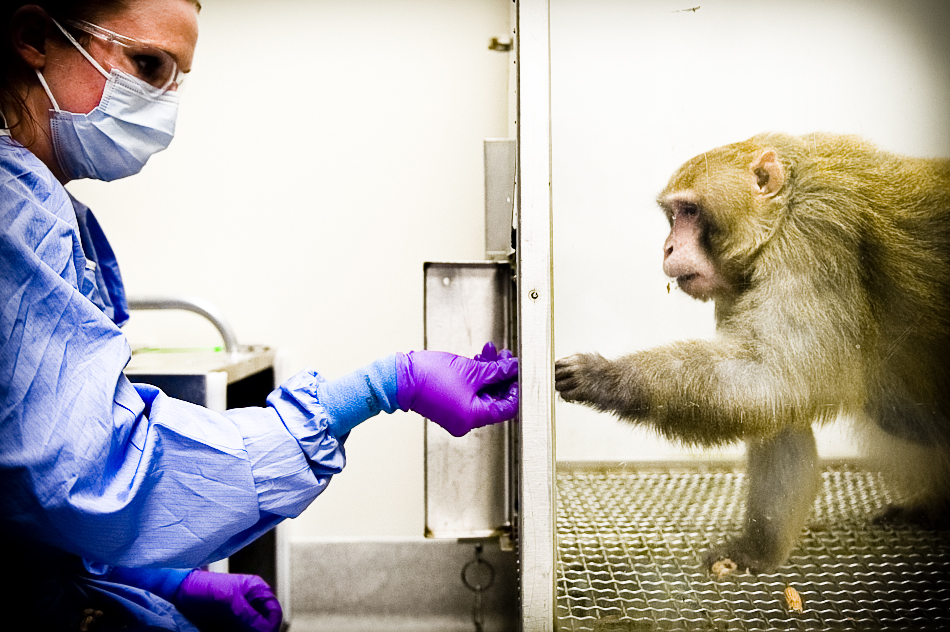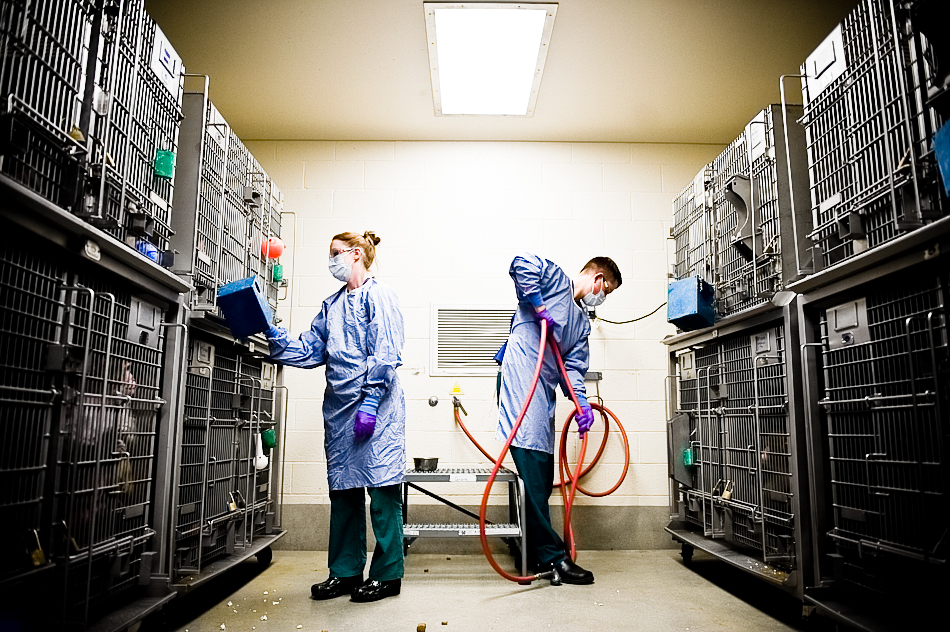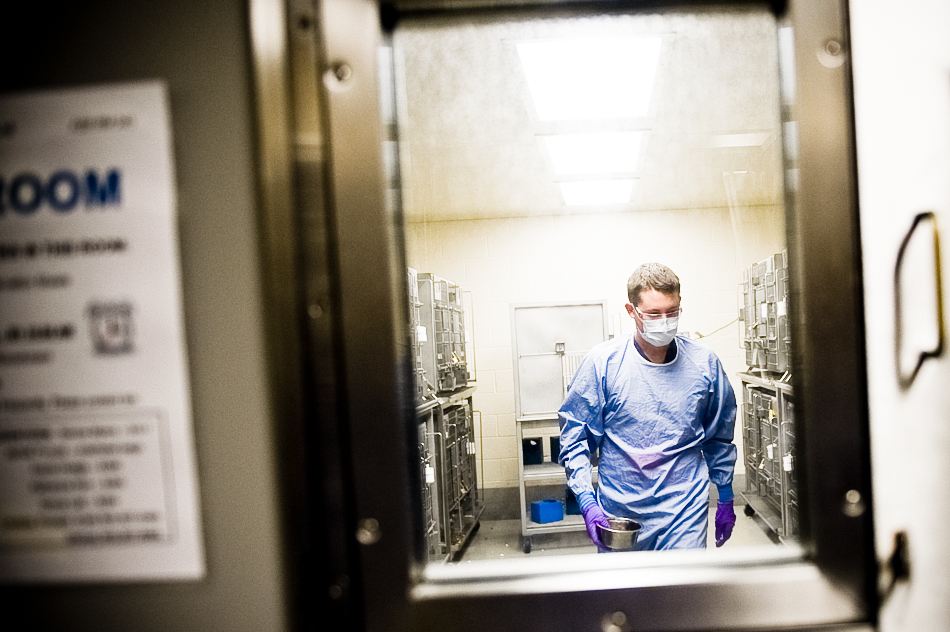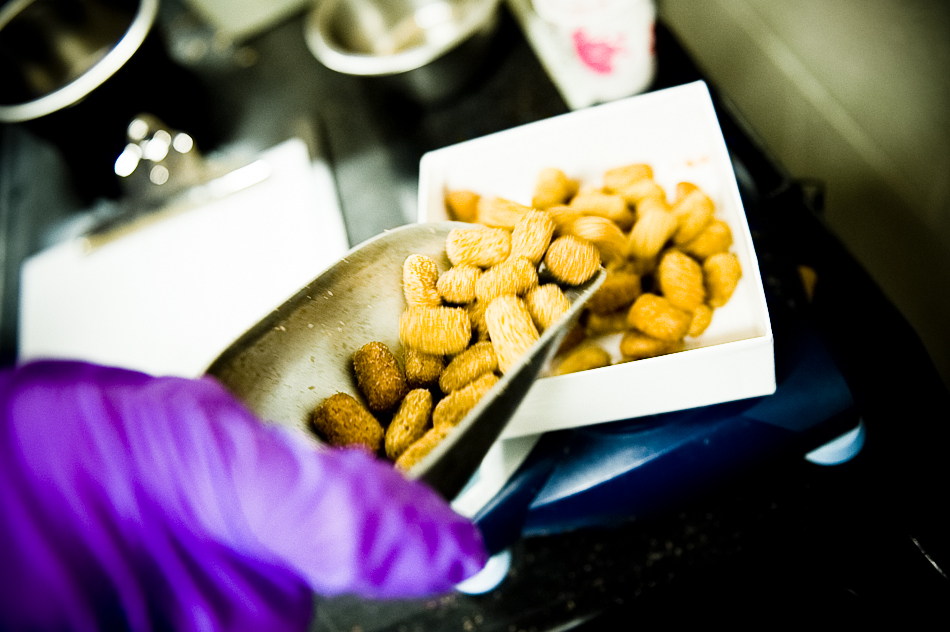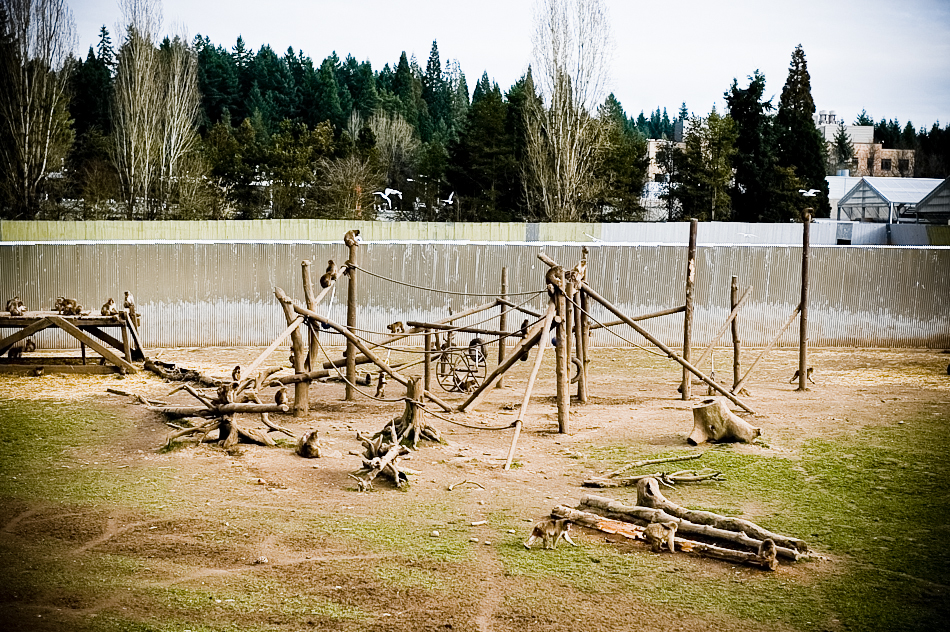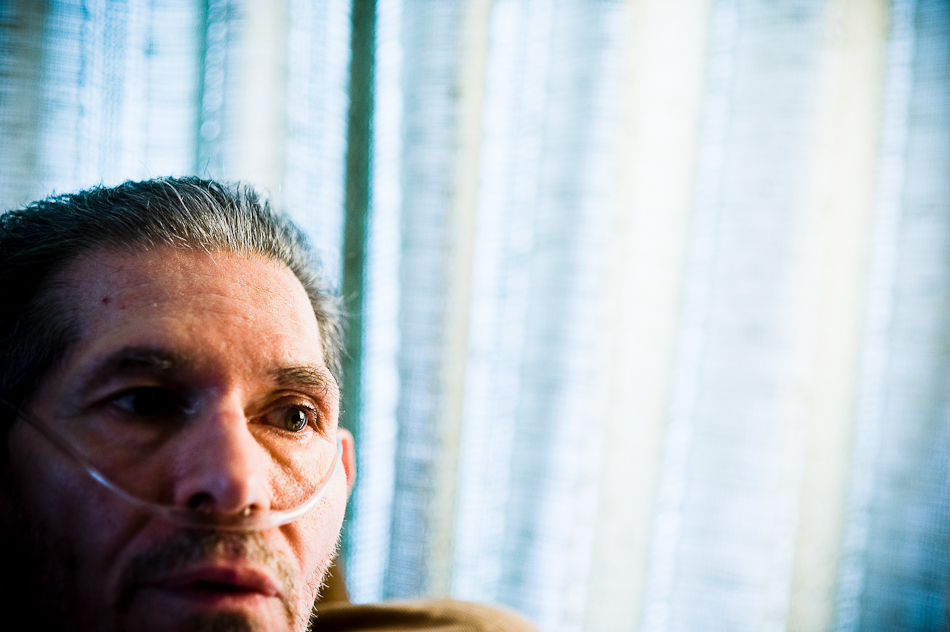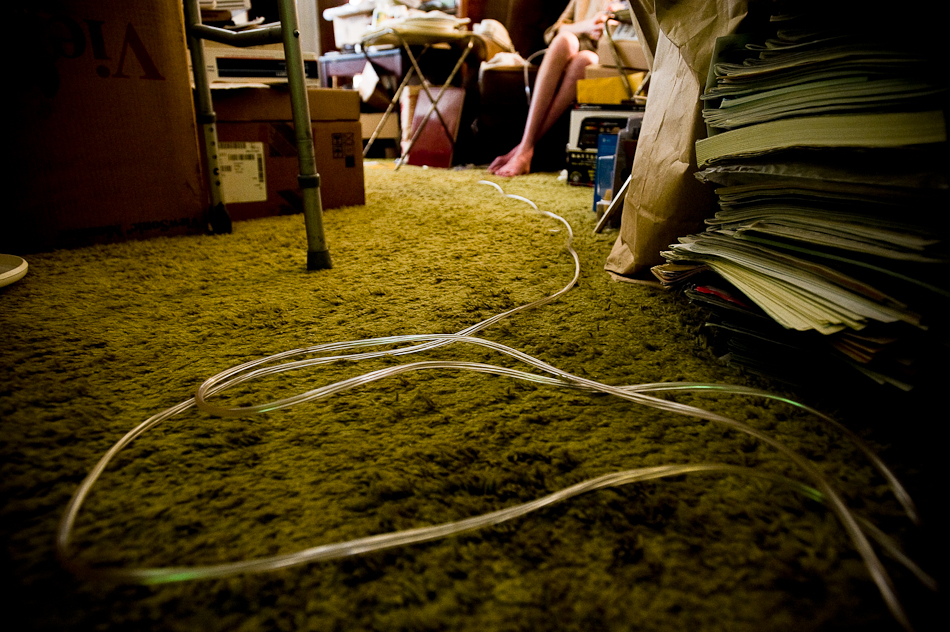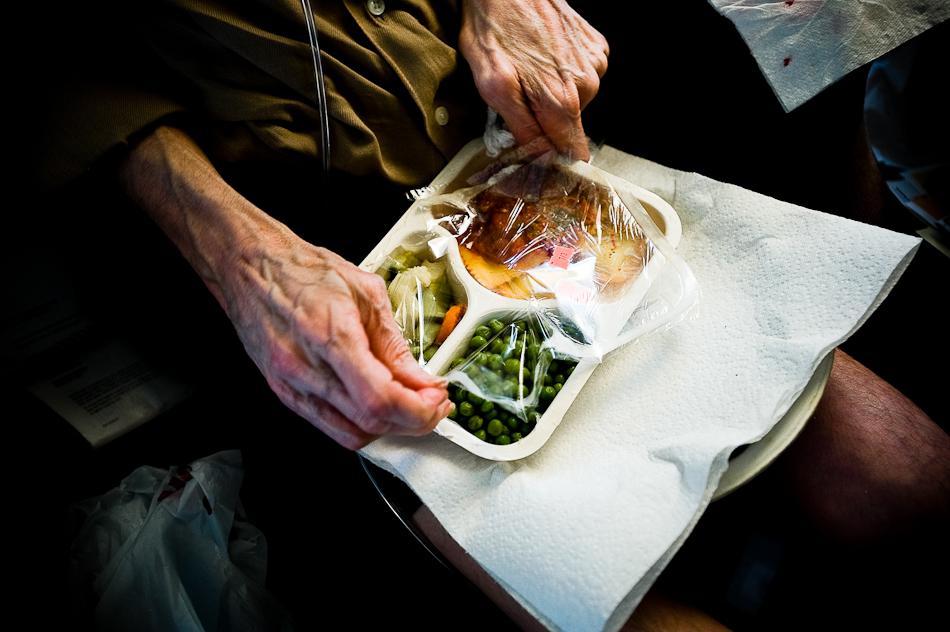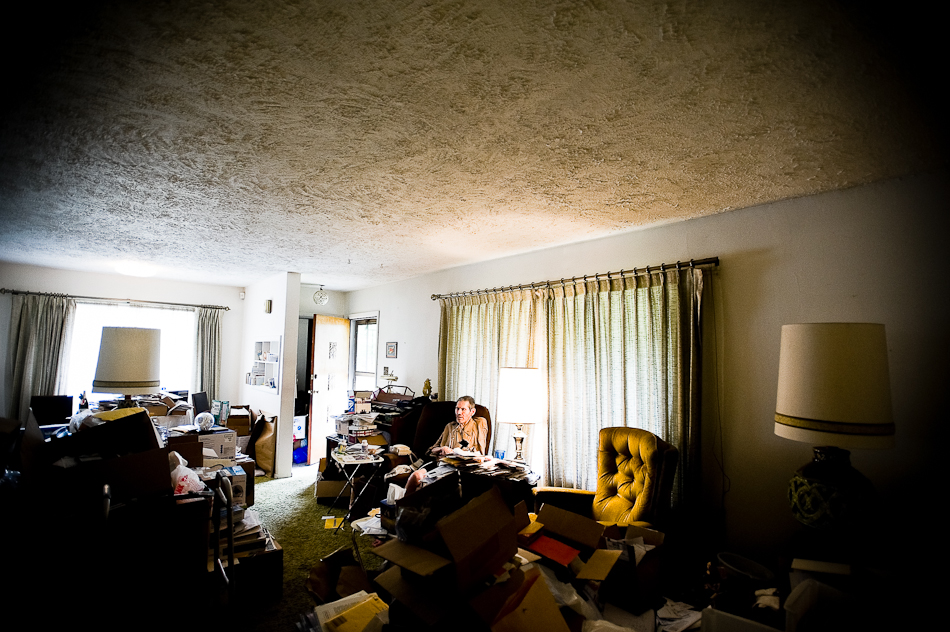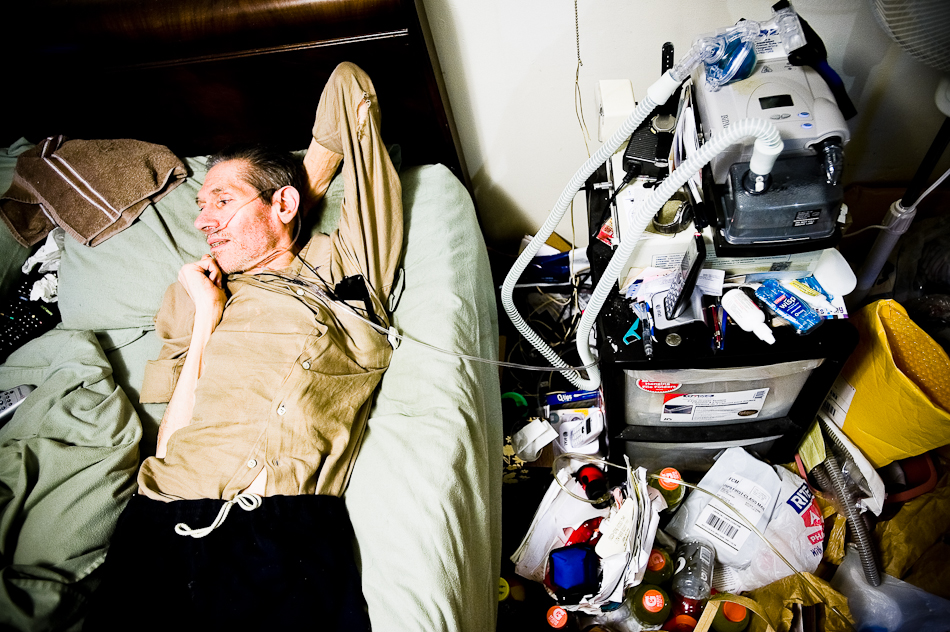There are some assignments that make me love my job. This one, about Postpartum Depression for the New York Times, was one of those. It was a project that really stayed with me, mostly because of my subject. Jeanne Marie Johnson was so open with me and the writer about something so incredibly personal and difficult. And I clearly wasn't the only one that she moved with her bravery, BuzzFeed listed it as one of their top 9 stories of the week, and the NYT Opinion Page for the NYT was hopping. One of those days when I feel like I may have made a tiny bit of difference in this great big world.
New York Times
Schizophrenia
Photographed an amazing story about early onset Schizophrenia that ended up on the cover of the Washington Post. Basically the Behavior Health Services at the PeaceHealth Sacred Heart Medical Center are trying to figure out ways to help teens with signs of Schizophrenia way before they ever have a psychotic episode. The program involves a two-year course of socialization, family therapy, job and school assistance, and sometimes medication. Now some of this may sound super fancy, but what it actually, literally can turn out to be is taking a kid to the music store and talking to him about his day. Crazy, right? The counselor I photographed used his love of music and comic books to connect with his teenage male patients, and as a way to get them out of house and interacting with the world around them. As someone with a psychology degree, I was pretty blown away by the simplistic brilliance of this. It made me realize two things. One, that you can never underestimate the power of human connection, and two, that so many of us just aren't getting enough of it.
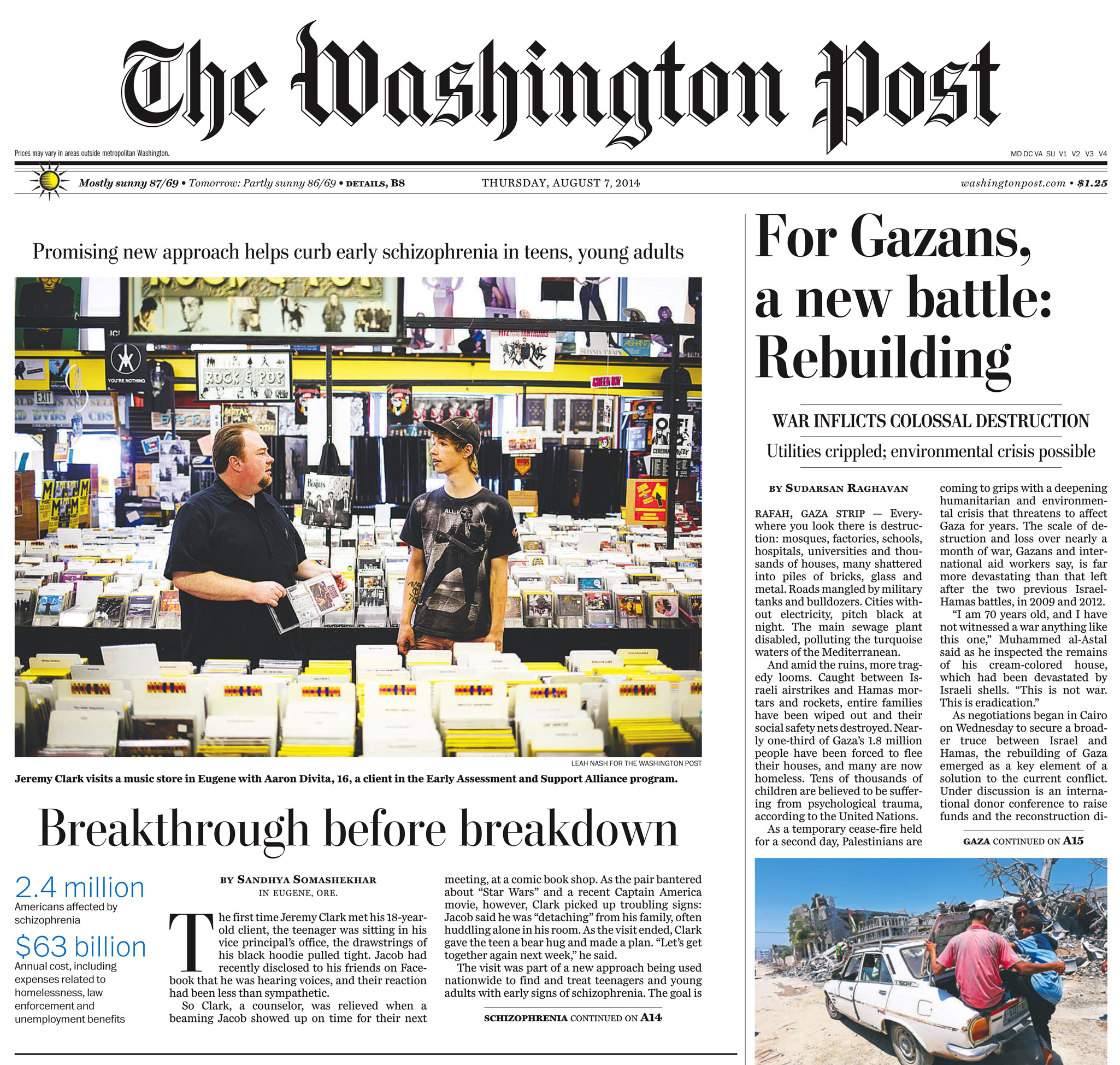
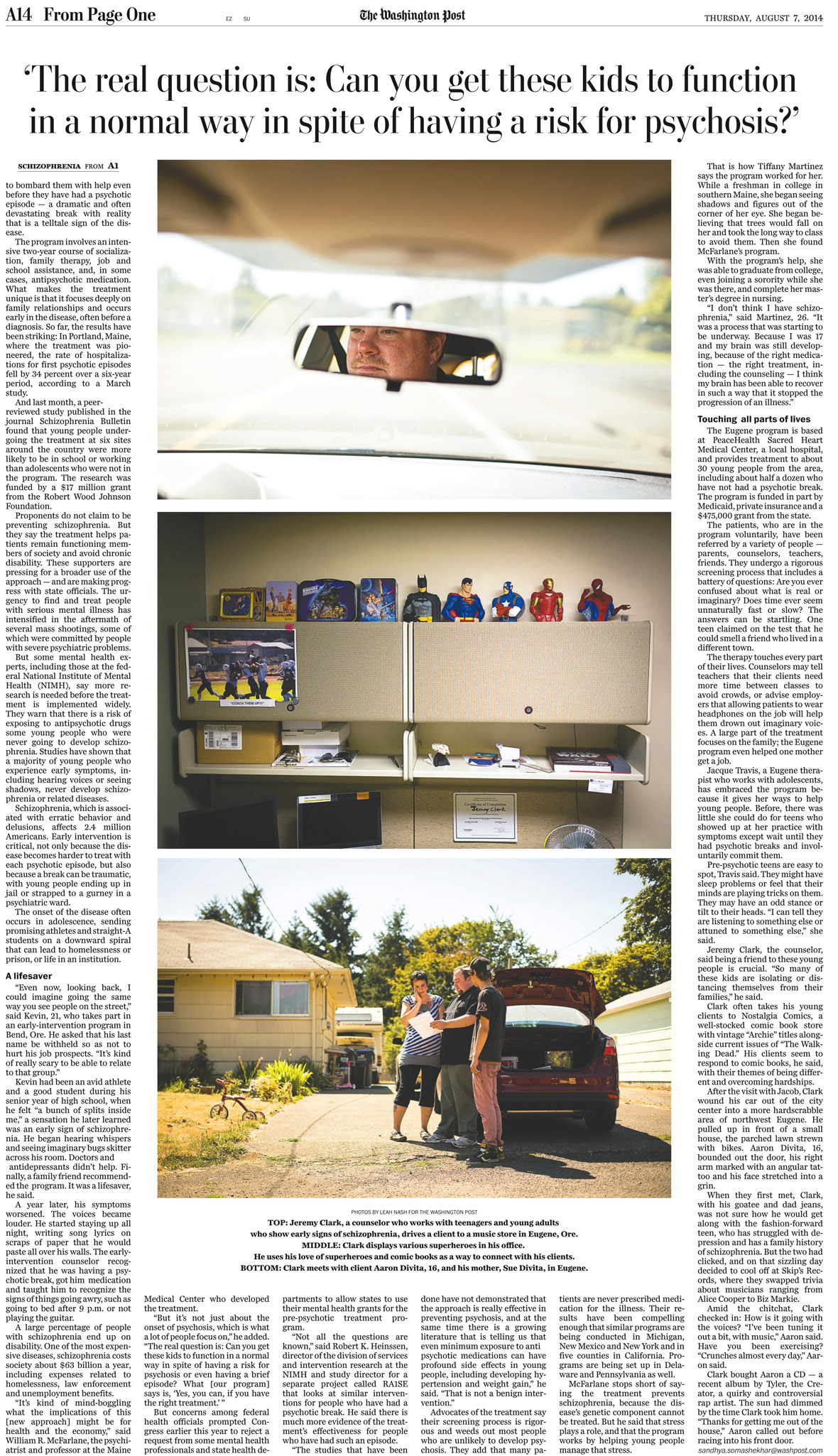
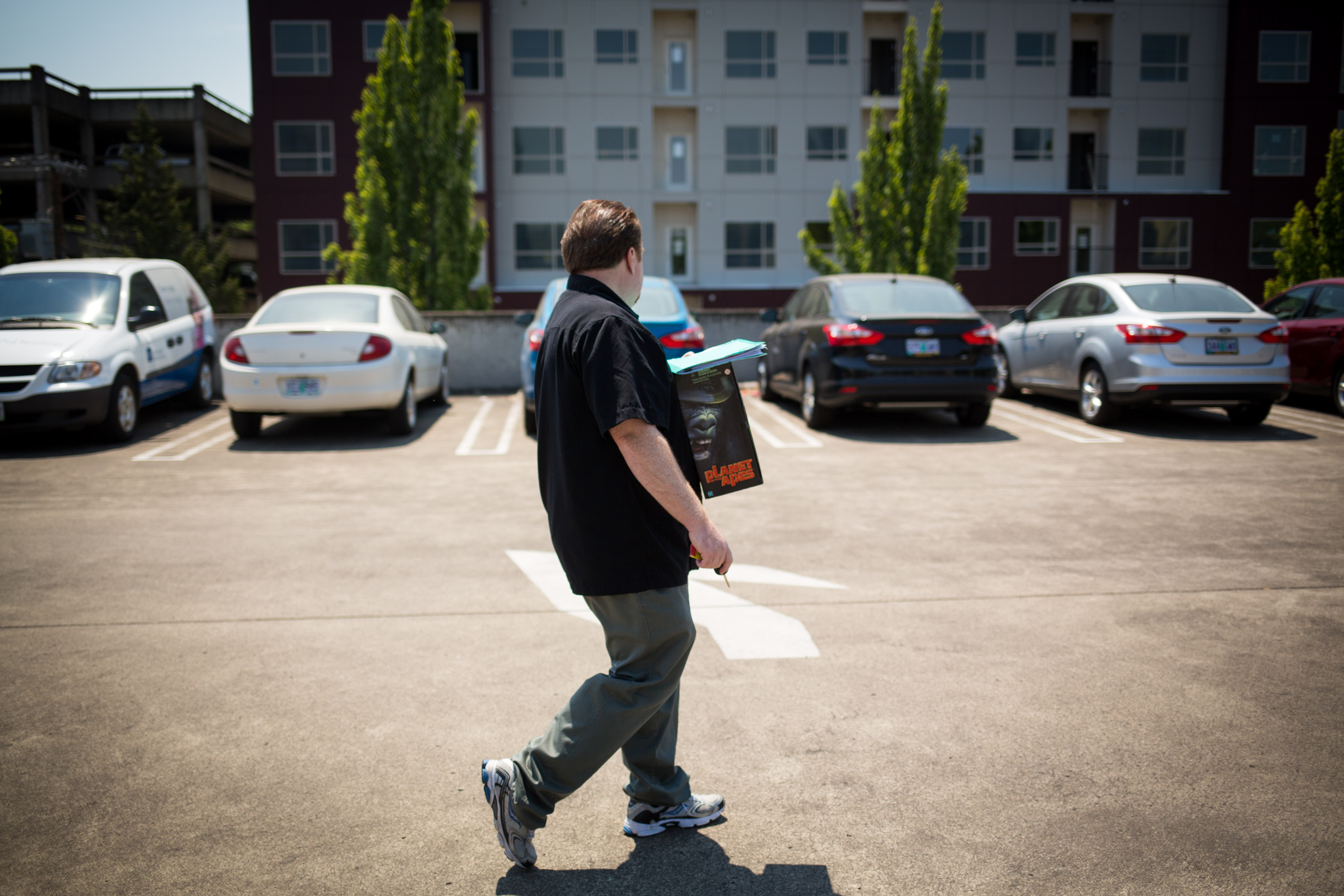

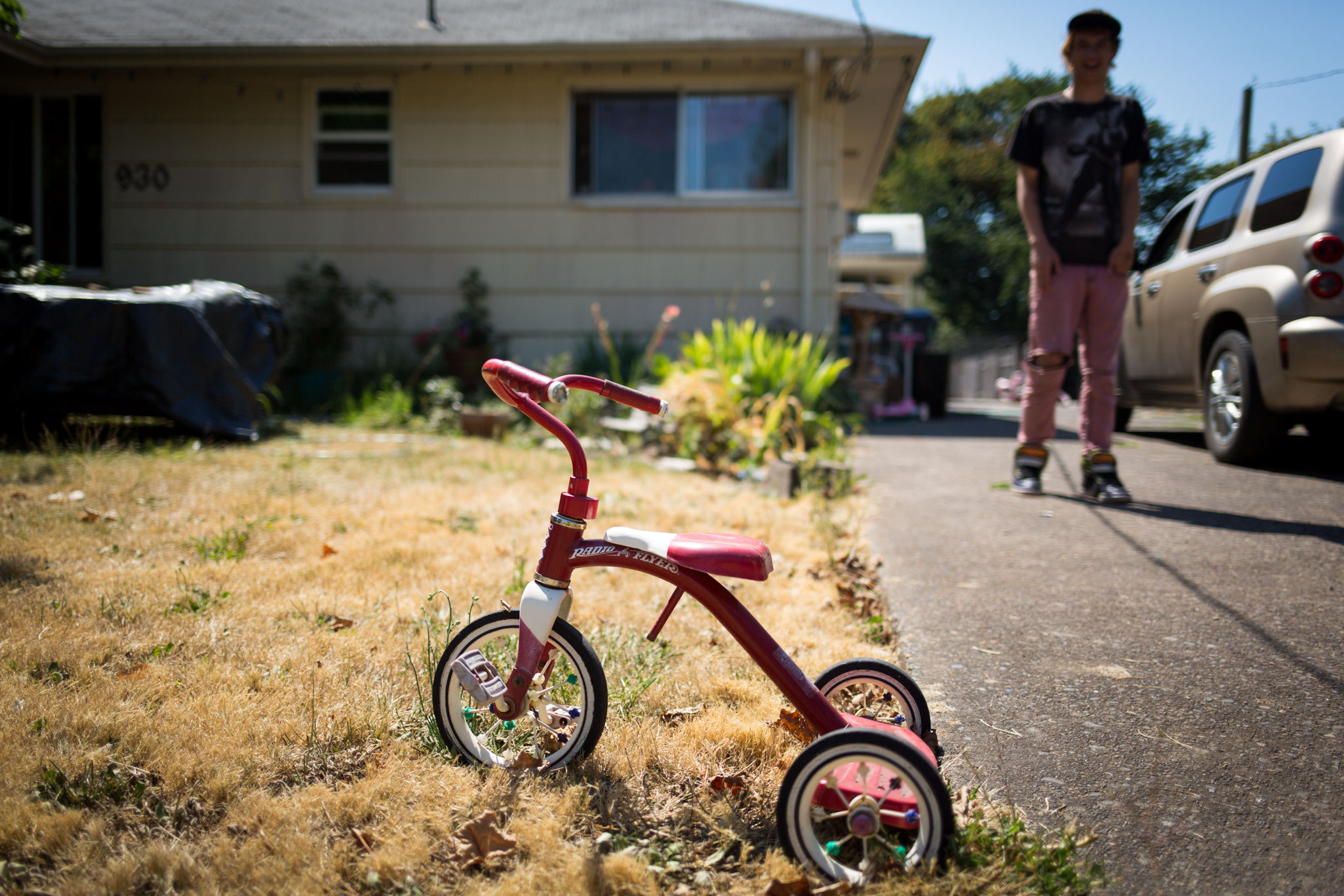
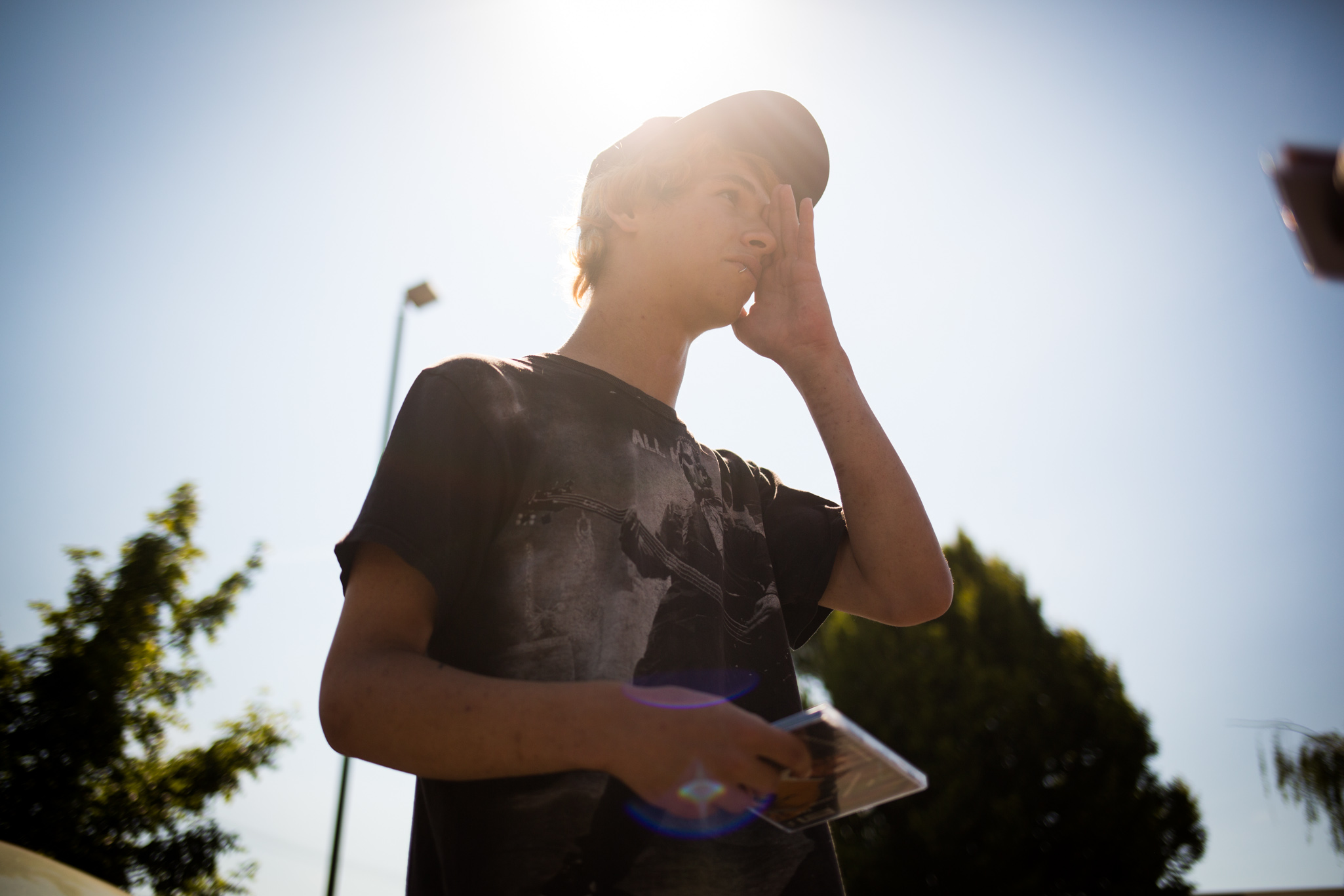
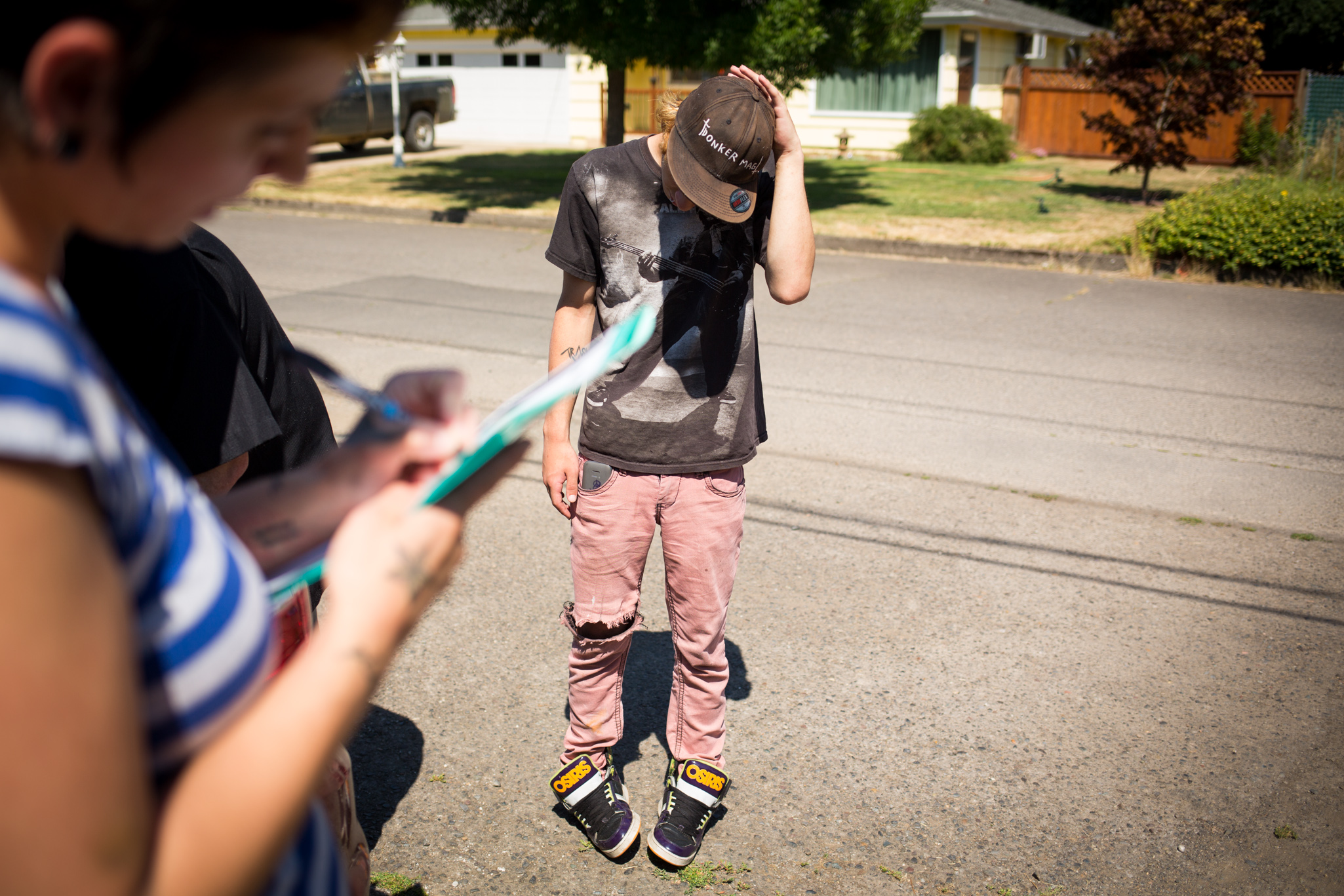
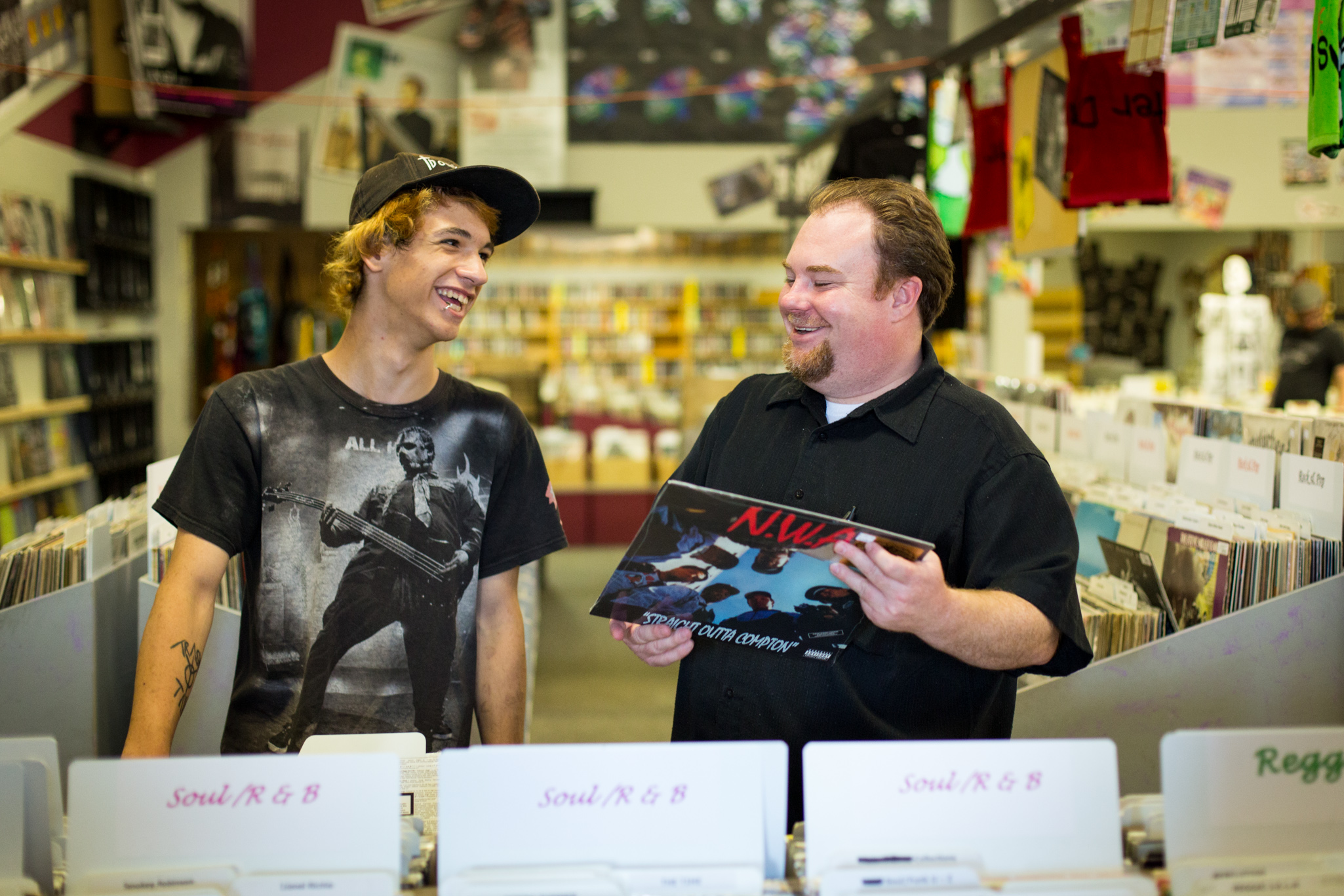
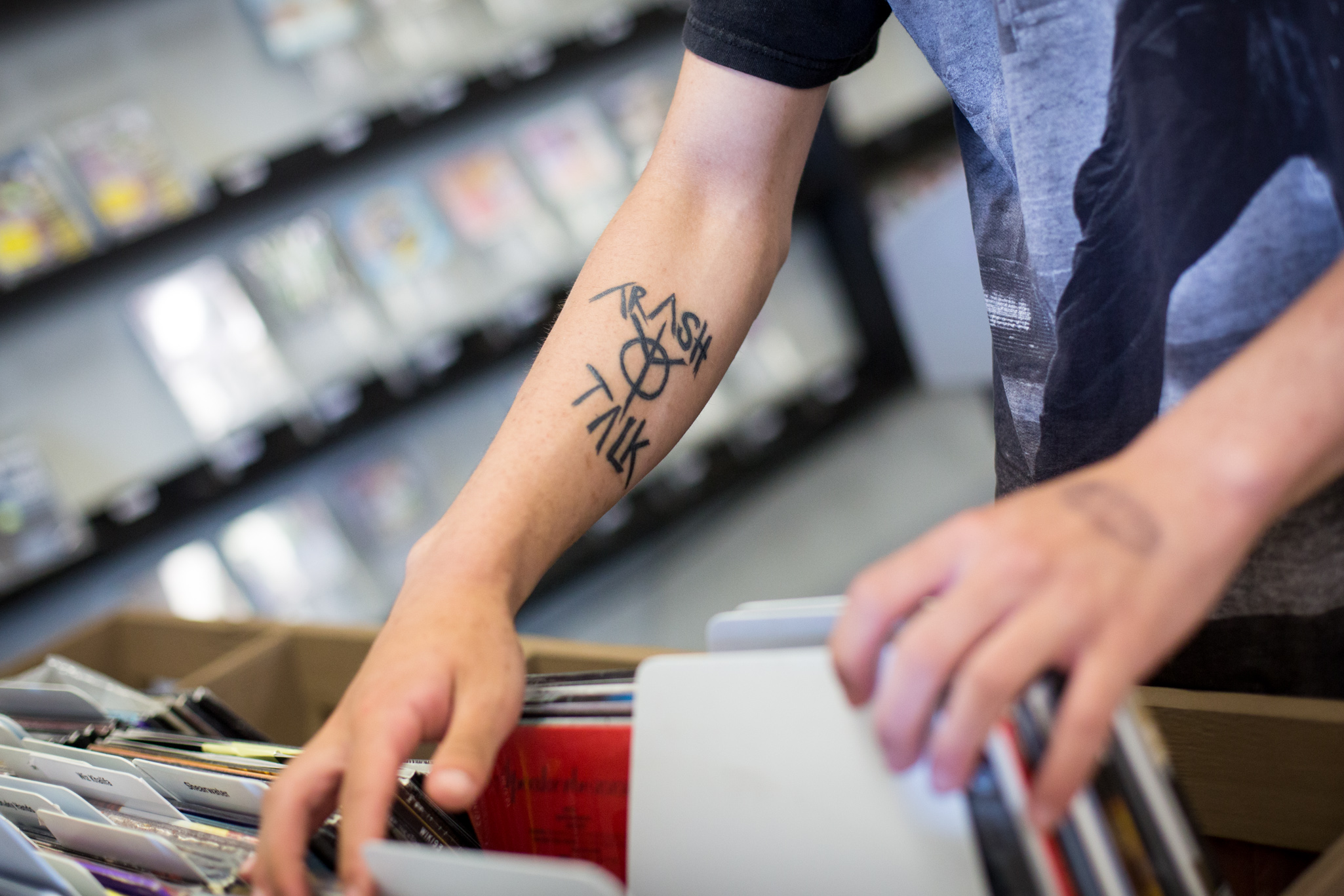
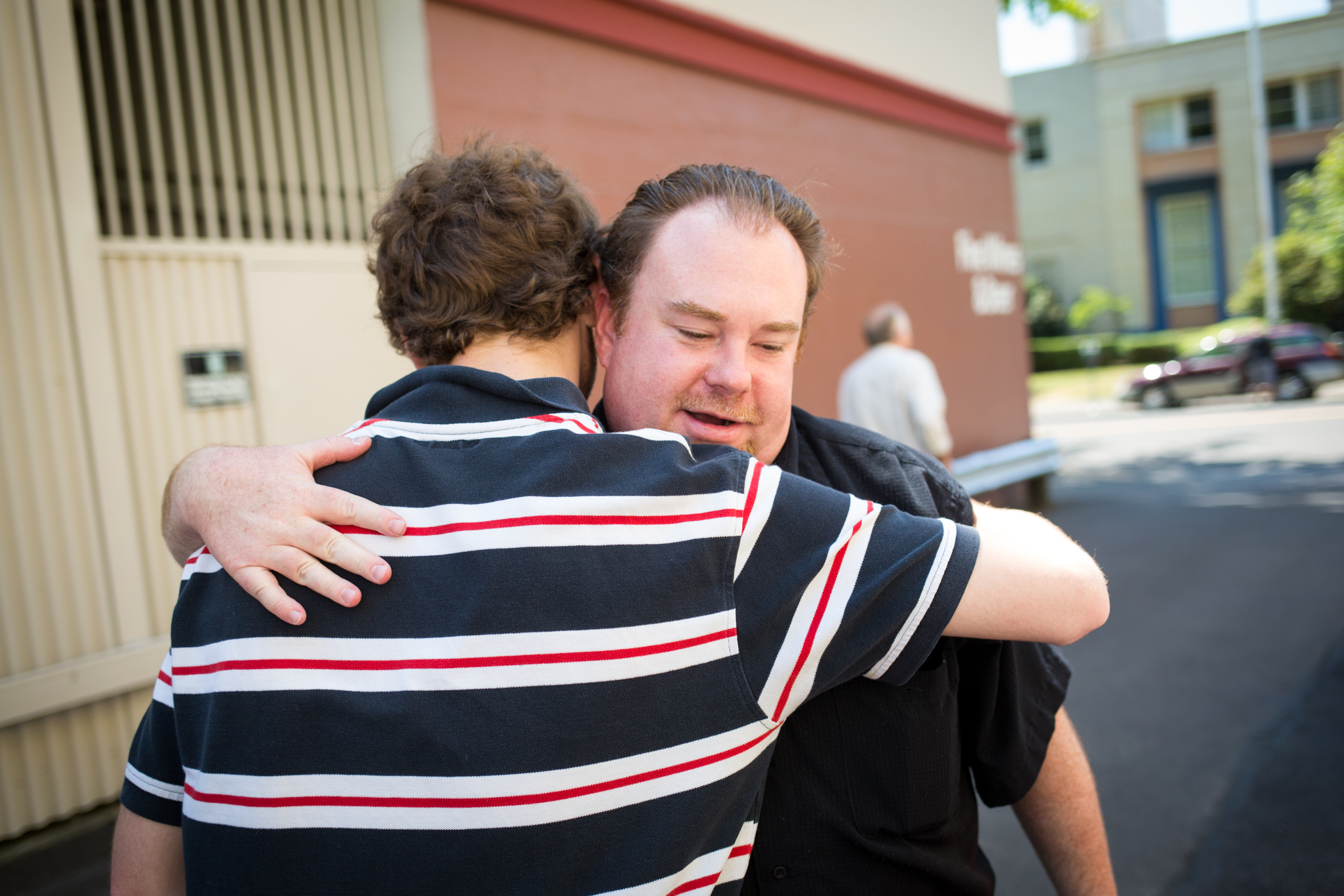
Paternity Leave - New York Times Story
Spent the day with Todd Bedrick and the fam for a New York Times Story about Paternity Leave. Todd works at Ernst & Young LLP, so got to spend a little time in the 9 to 5 (though no suit and tie- this is Portland, after all). Then home for some adorable father and daughterness. Todd and his wife Sarah, who is a teacher, were a pretty picture perfect family; there was dinner, playtime, bath time, then a little purple-polka-dot-story-time and finally bed. After that he washed his wife's breast pump accouterment and showed me his engagement photo album. What a champ. In the article Todd mentions how much his time at home with his new baby really helped him bond with her. Which only makes sense. Sweden has figured it out. Close to 90% of Swedish fathers take paternity leave. Why does it take us so long?
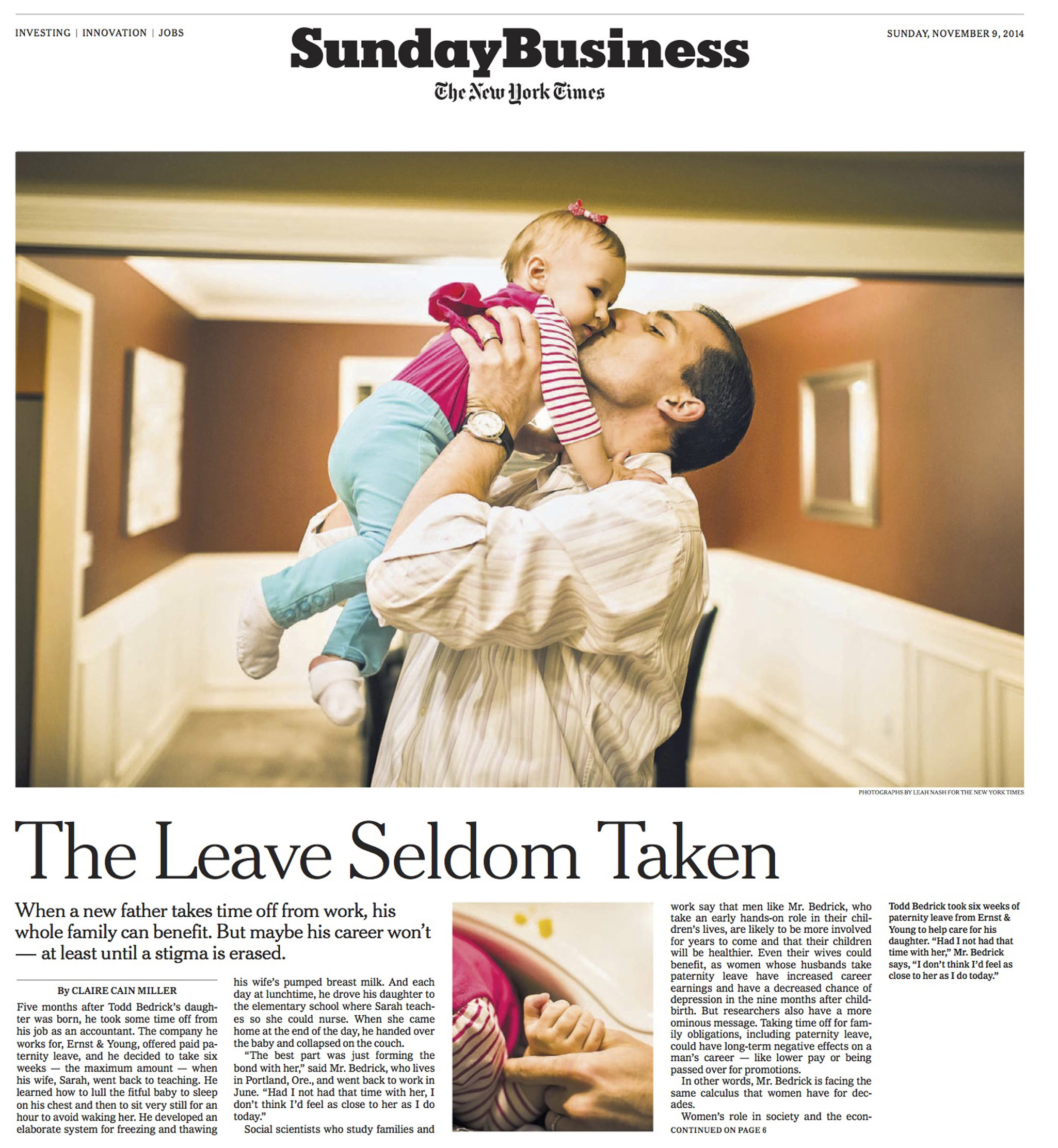
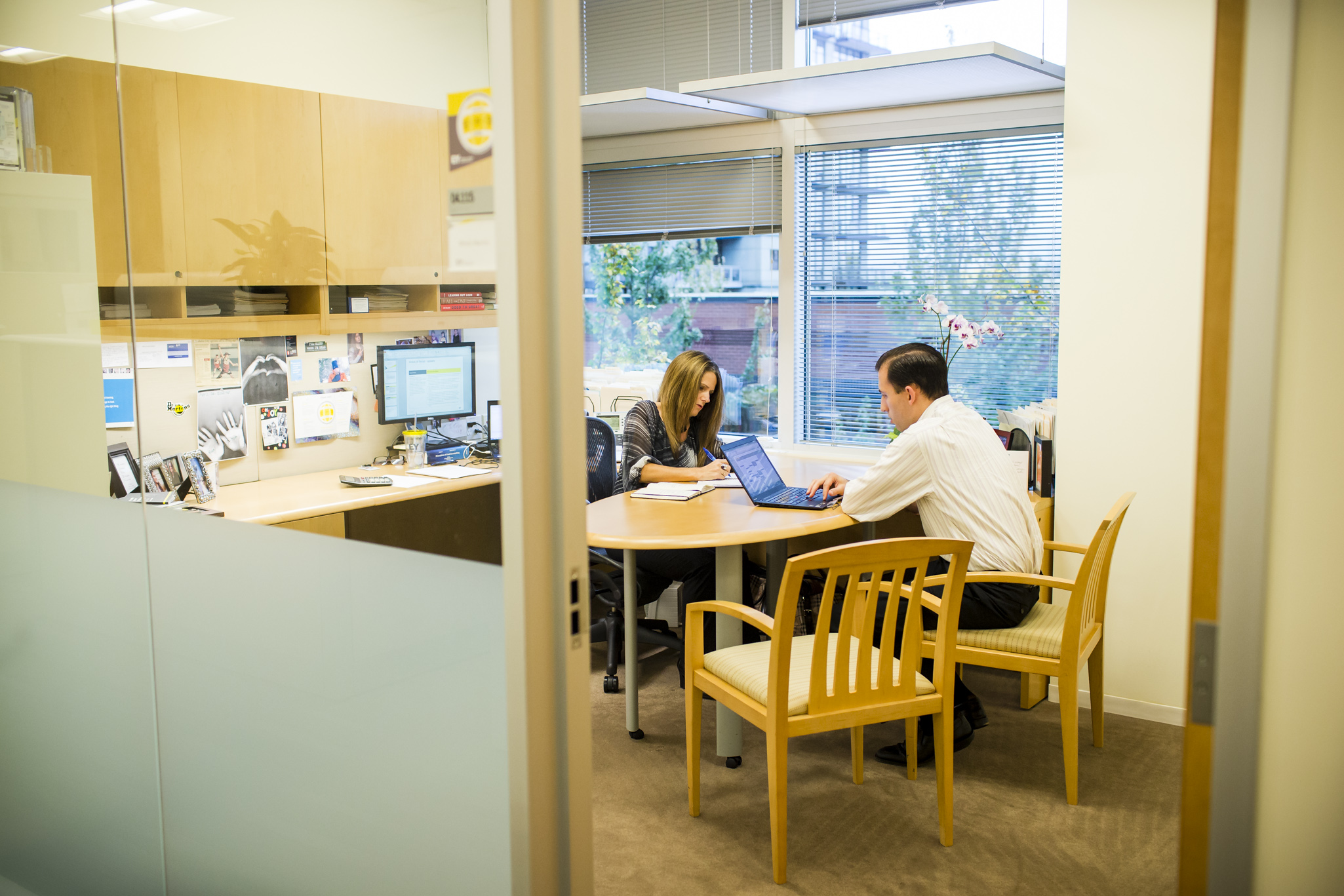
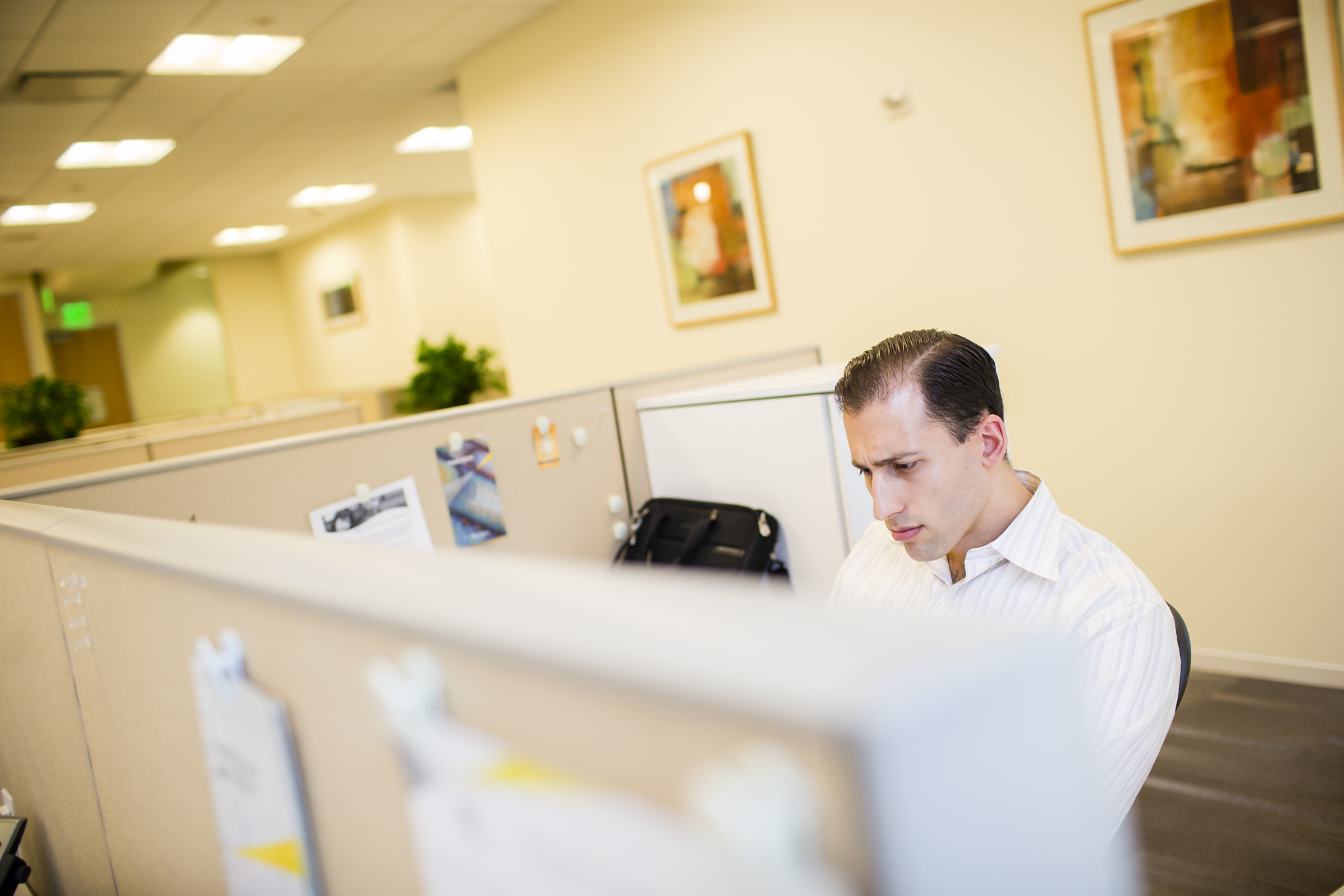
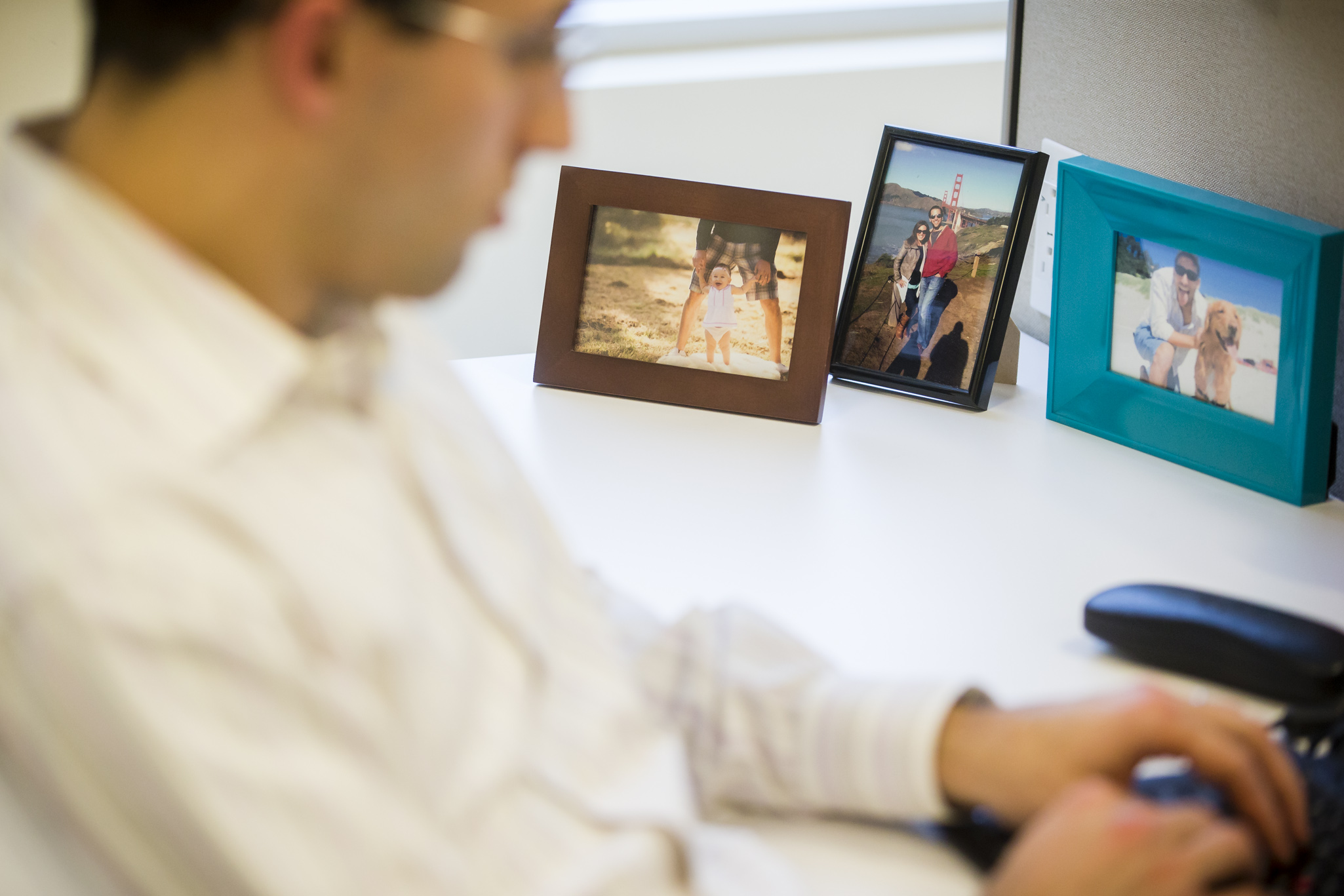

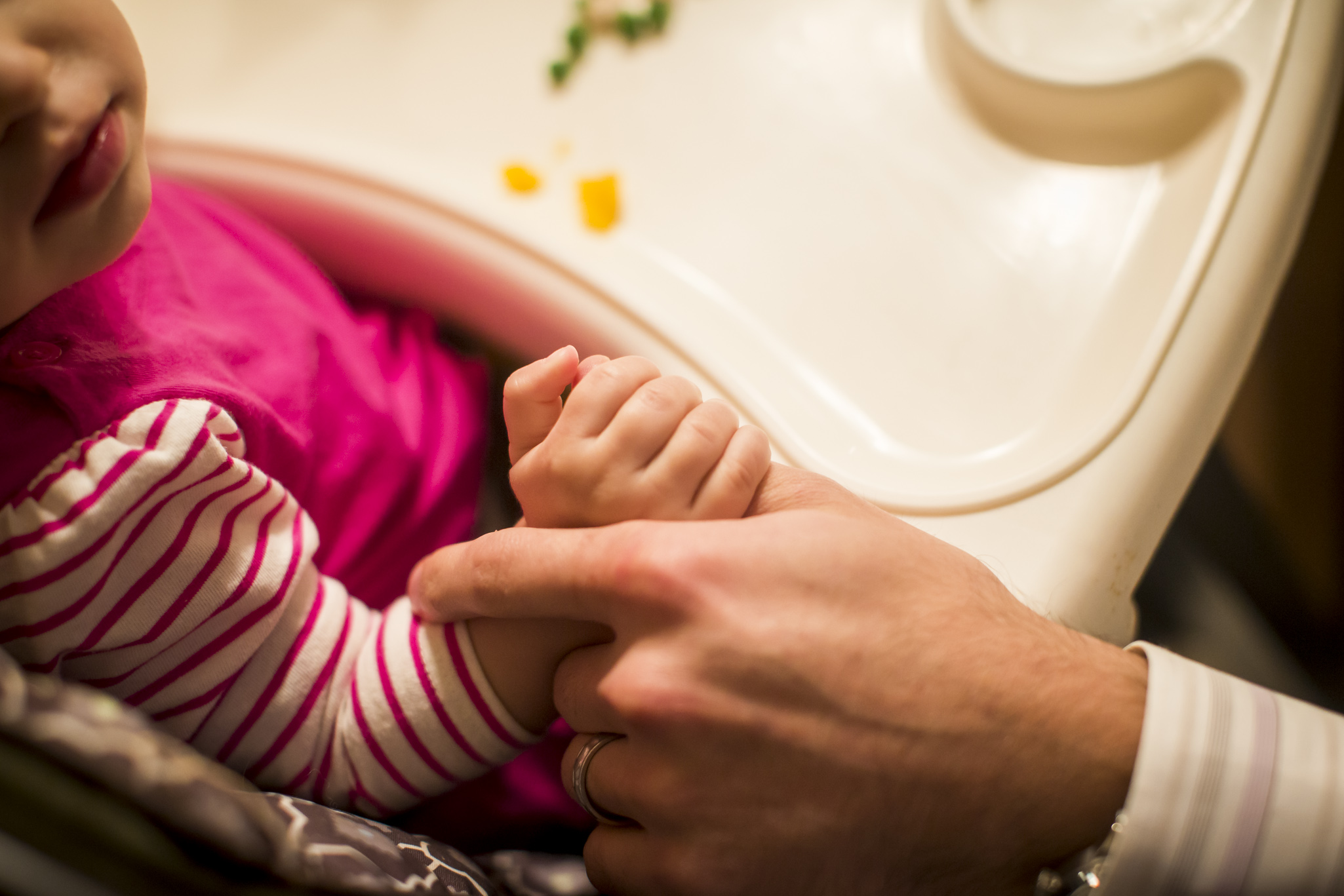
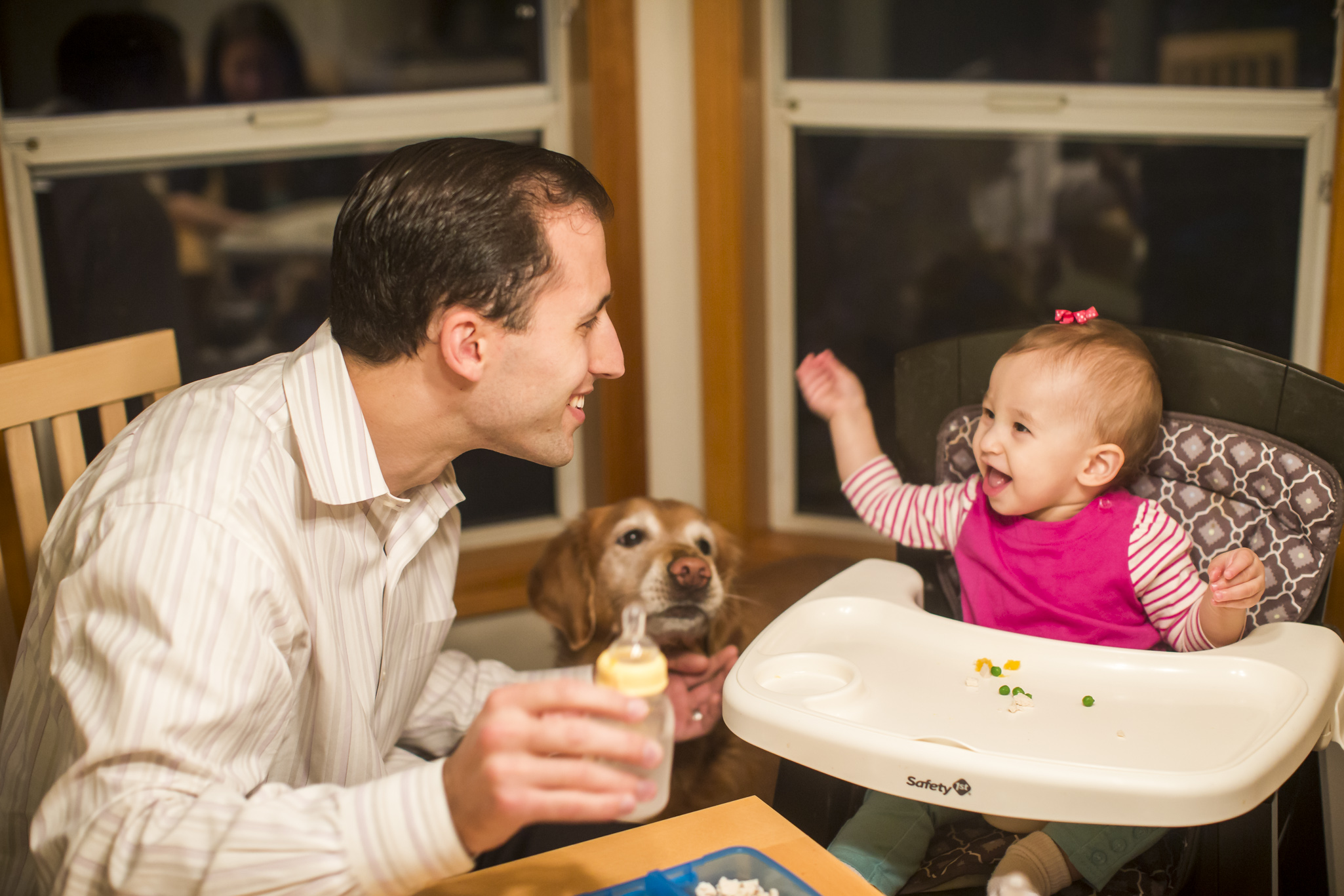

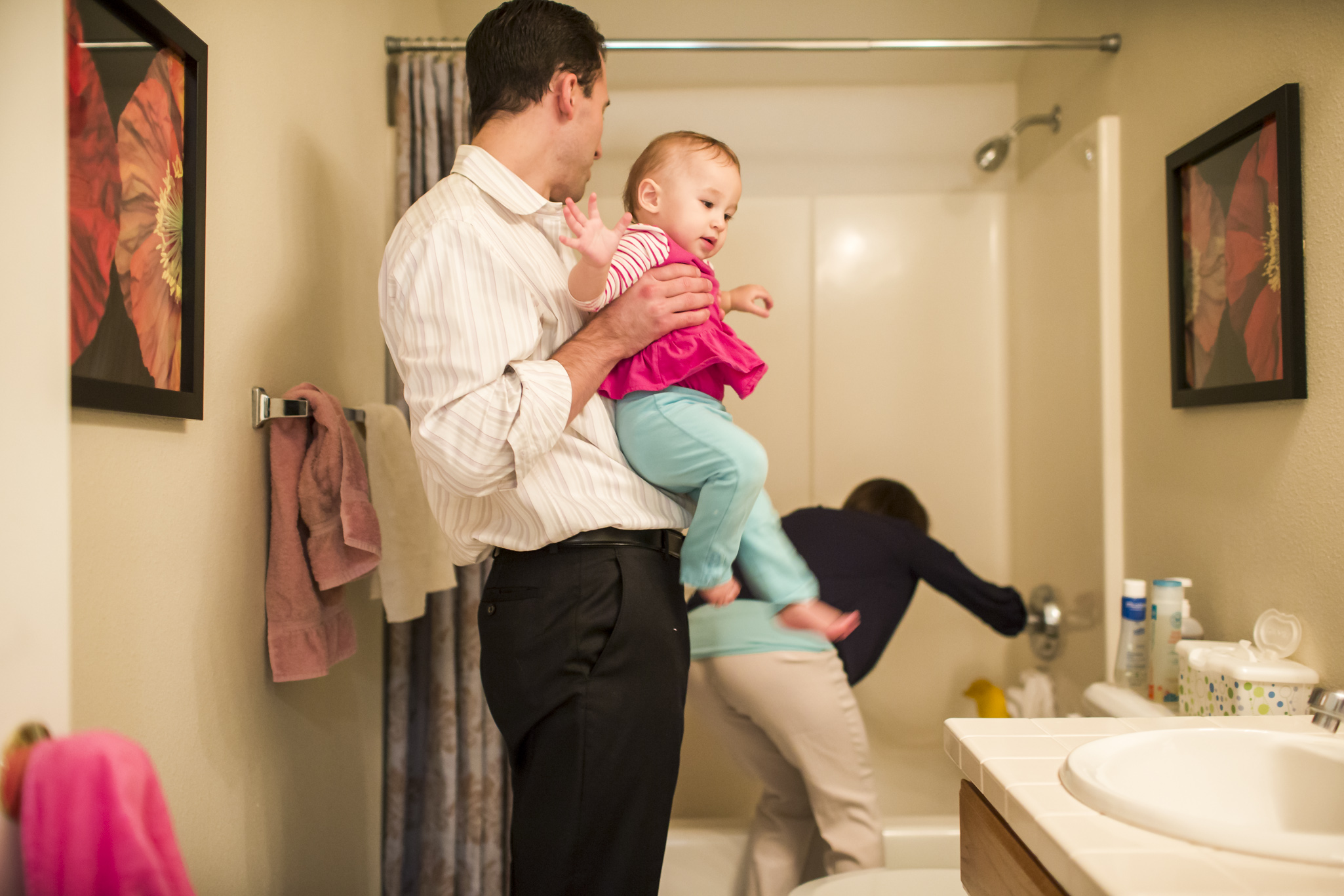

Portland Corporate Portrait - Lawyer Robert S. Banks Jr. for the NYT's
Popped over to the Banks Law Office to photograph Robert S. Banks for a New York Times article. Robert was a great guy, and even thought to bring a prop to the shoot (his tres chic Coach brief case). The tone of the article was pretty serious (his client unsuccessfully opposed the removal of her complaint against her former broker whose regulatory file included 41 customer complaints and a job termination!) and so we needed his vibe to match. Luckily, he seemed to have the tough lawyer look down.



Portland Urban Wineries for the NYT's
Somewhere along the line I have become the de facto, "Portland food, lifestyle and travel" photographer for the New York Times. And if you've read the NYT lately, you realize that is a job that keeps me rather busy. People in Portland now joke about it, when I mention who I'm working for, "Oh, man, they are doing another story about us?" is the response I get. And I understand that. Sometimes I feel that living the good life Portland is a secret I'd rather not share. Unfortunately, I think the cat may be out of the bag. Damn you, Fred and Carrie. Below are some outtakes from a recent Urban Wineries shoot I did for the paper which included stalking the tannin soaked halls of the Southeast Wine Collective, Clay Pigeon Winery, ENSO Urban Winery and Tasting Lounge, and Sauvage at Fausse Piste. Gotta love that urban terroir.
Pickathon 2014
Spent the first weekend of August how we always do, photographing the amazingness that is Pickathon, a four-day music festival located on the 80-acre Pendarvis farm in Happy Valley, just about 30 minutes outside of Portland. Now in its 16th year with six, count them...six, different music venues, the festival focuses on sustainability and the best part is they have eliminated single use cups, bottles, dishes and utensils and been plastic free since 2010! This year, the New York Times decided to stop by and get in on the West Coast love and being so gracious, we decided to join them.
Ate some great food, did a little dancing, saw more incredible acts then we could mention, though here is a feeble attempt....The Sadies, Nickel Creek, Mac DeMarco, Diarrhea Planet, Possessed By Paul James, Valerie June, The War On Drugs, Blind Pilot and even managed to take a photo or two.

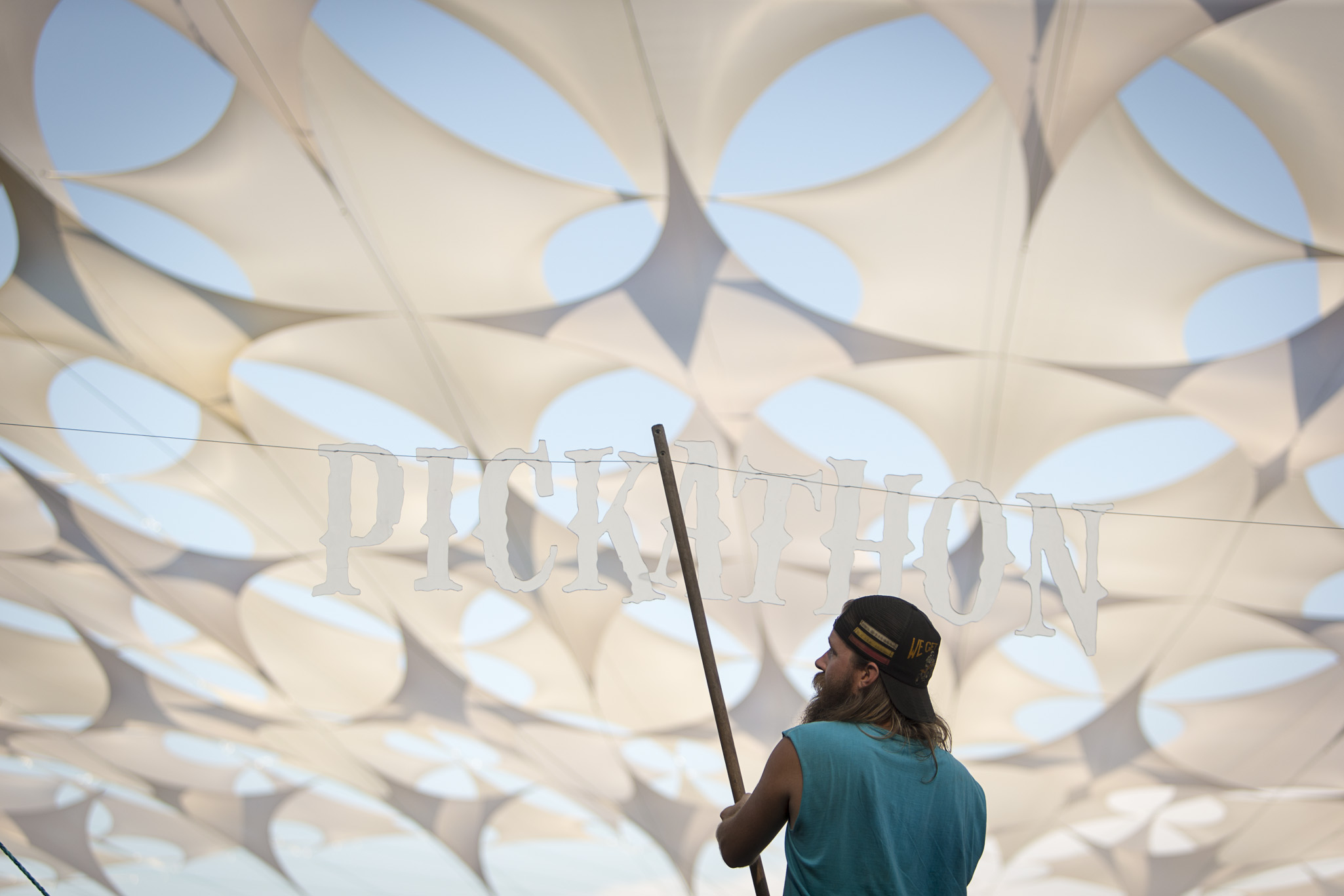
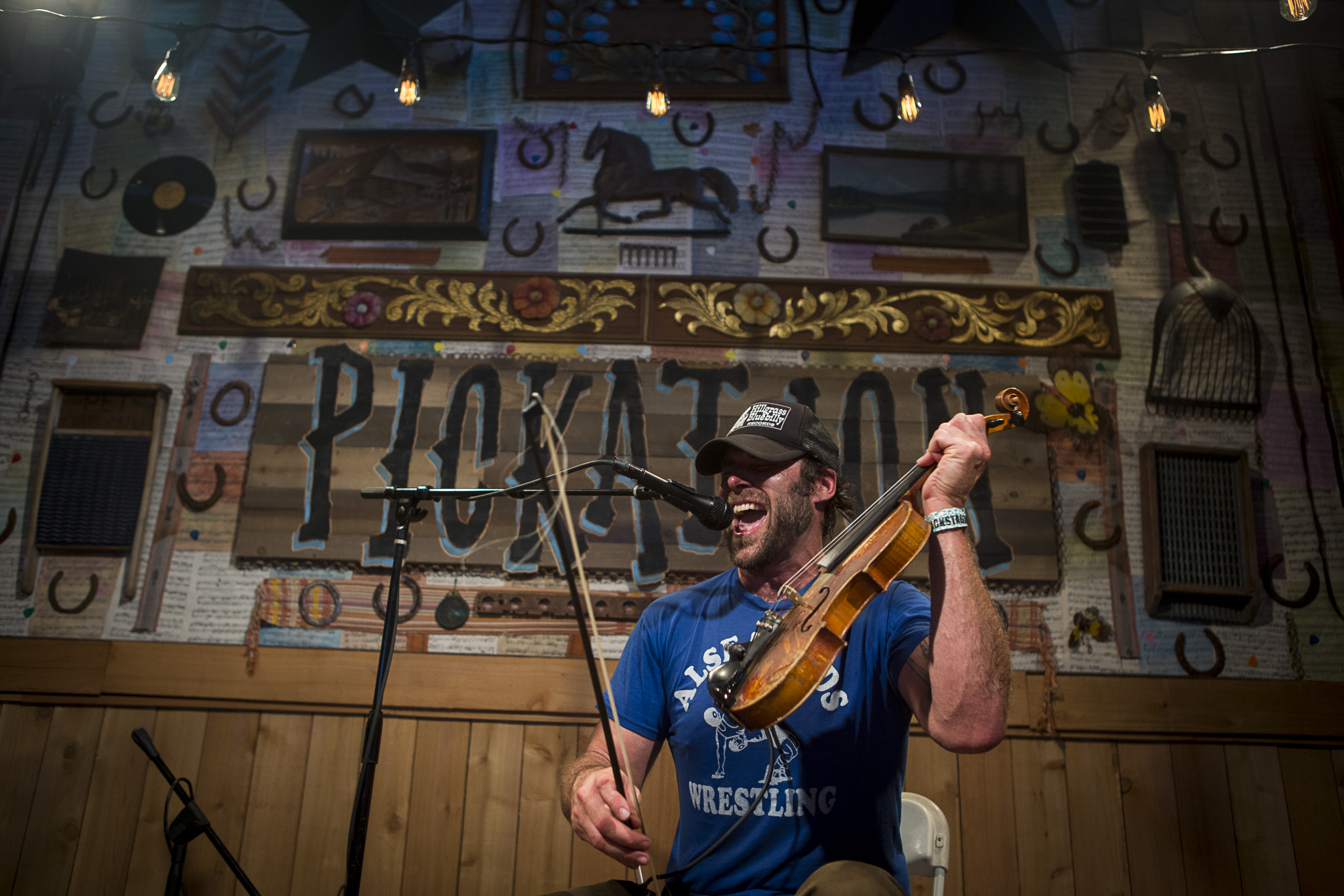
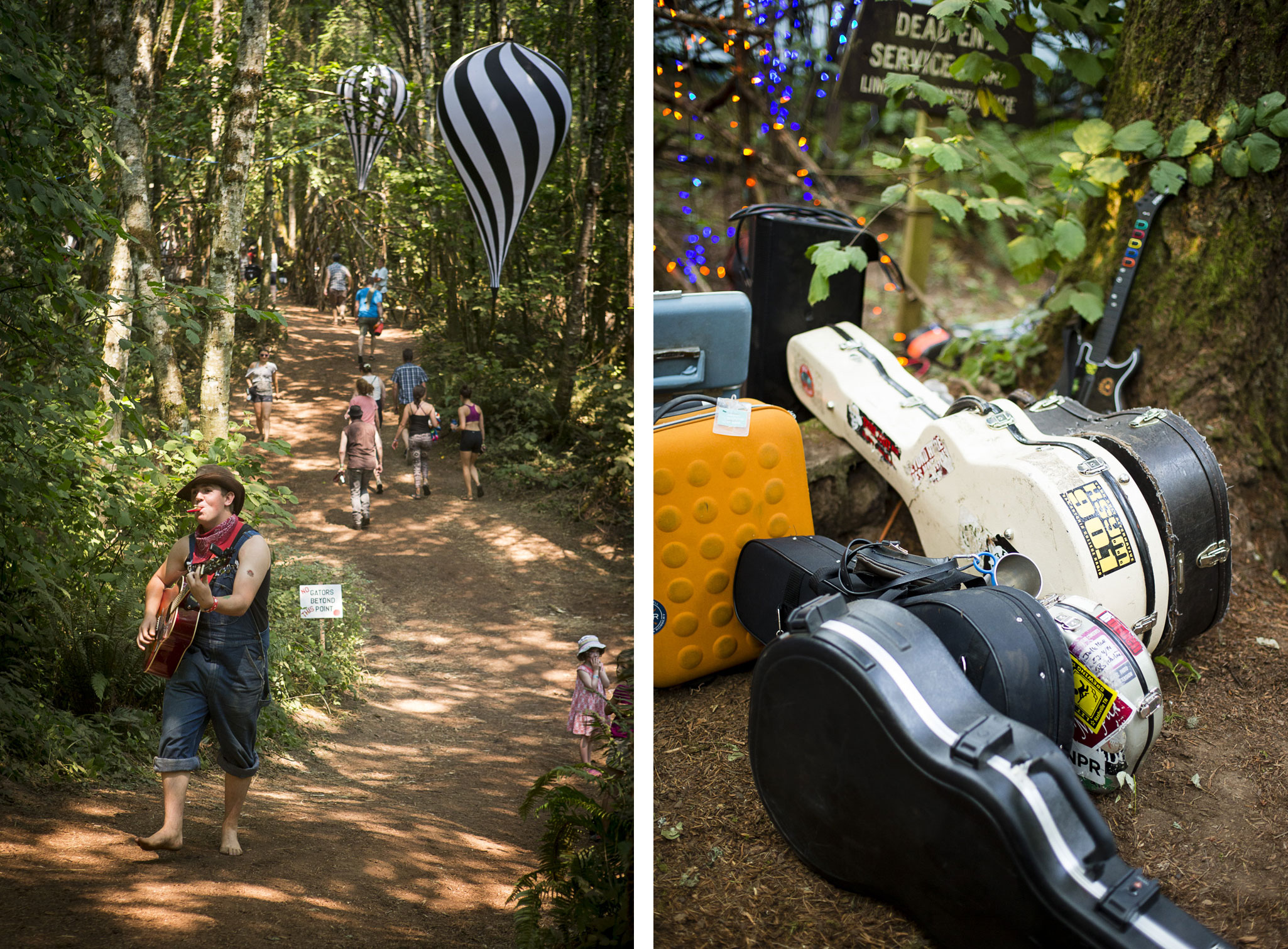
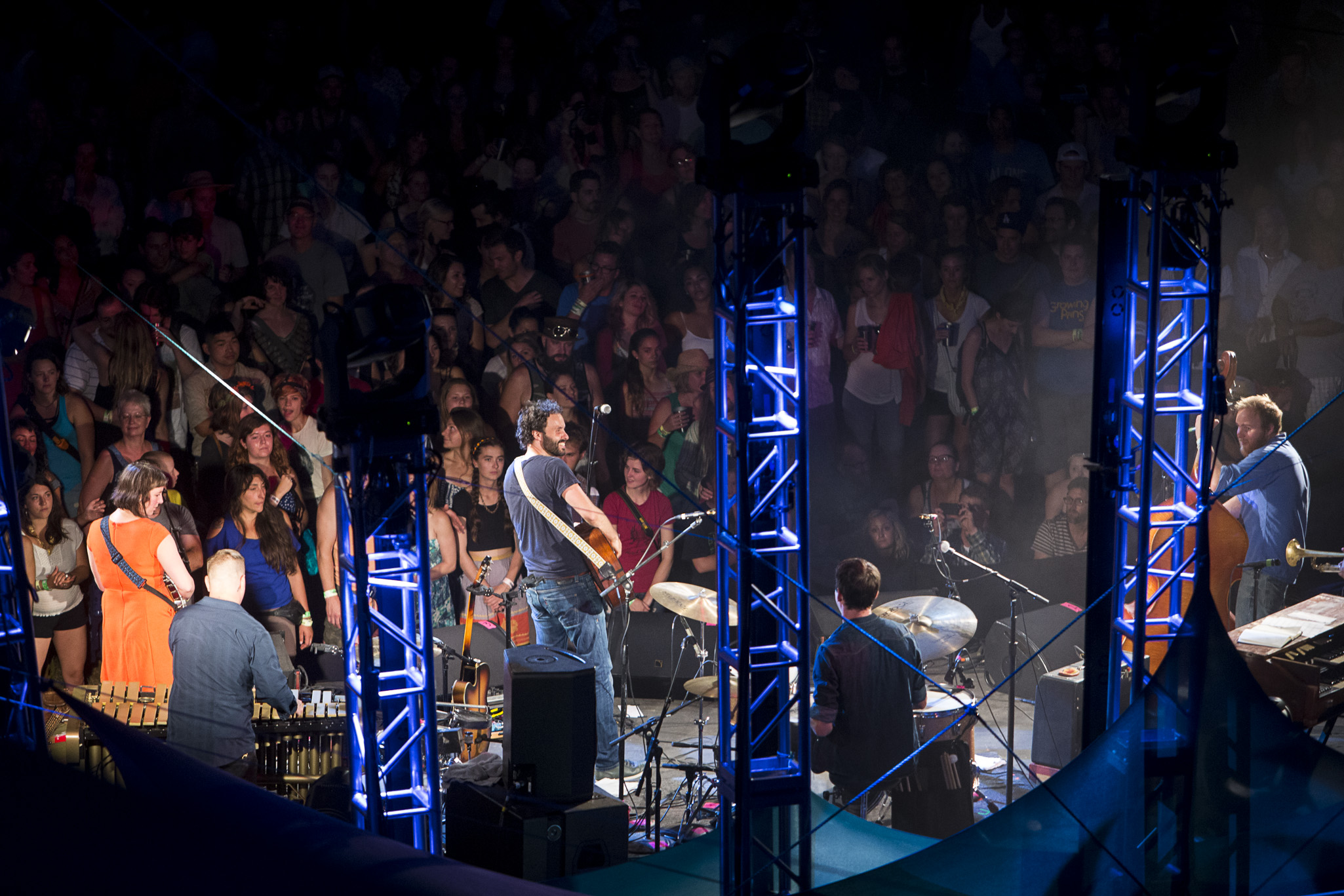
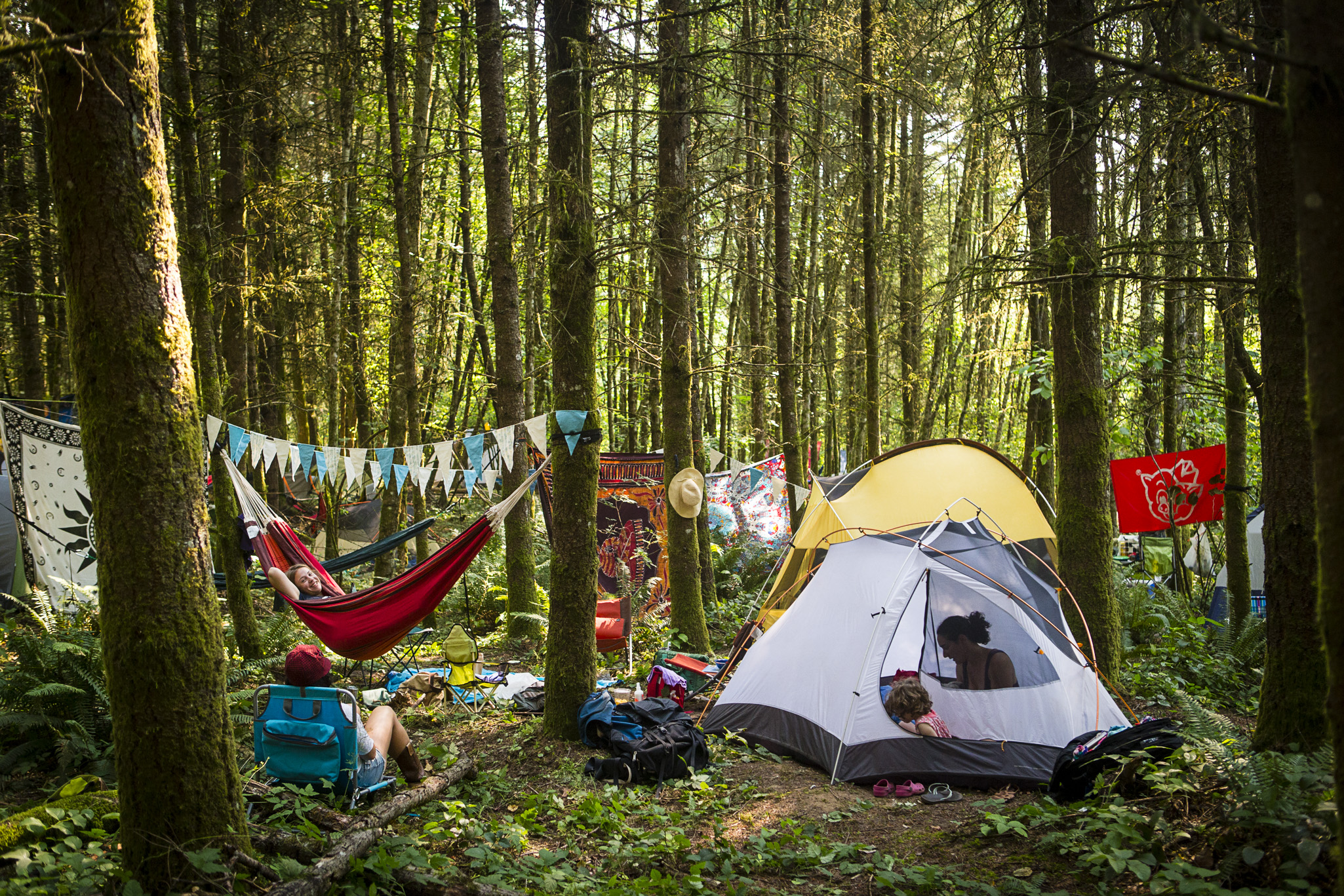
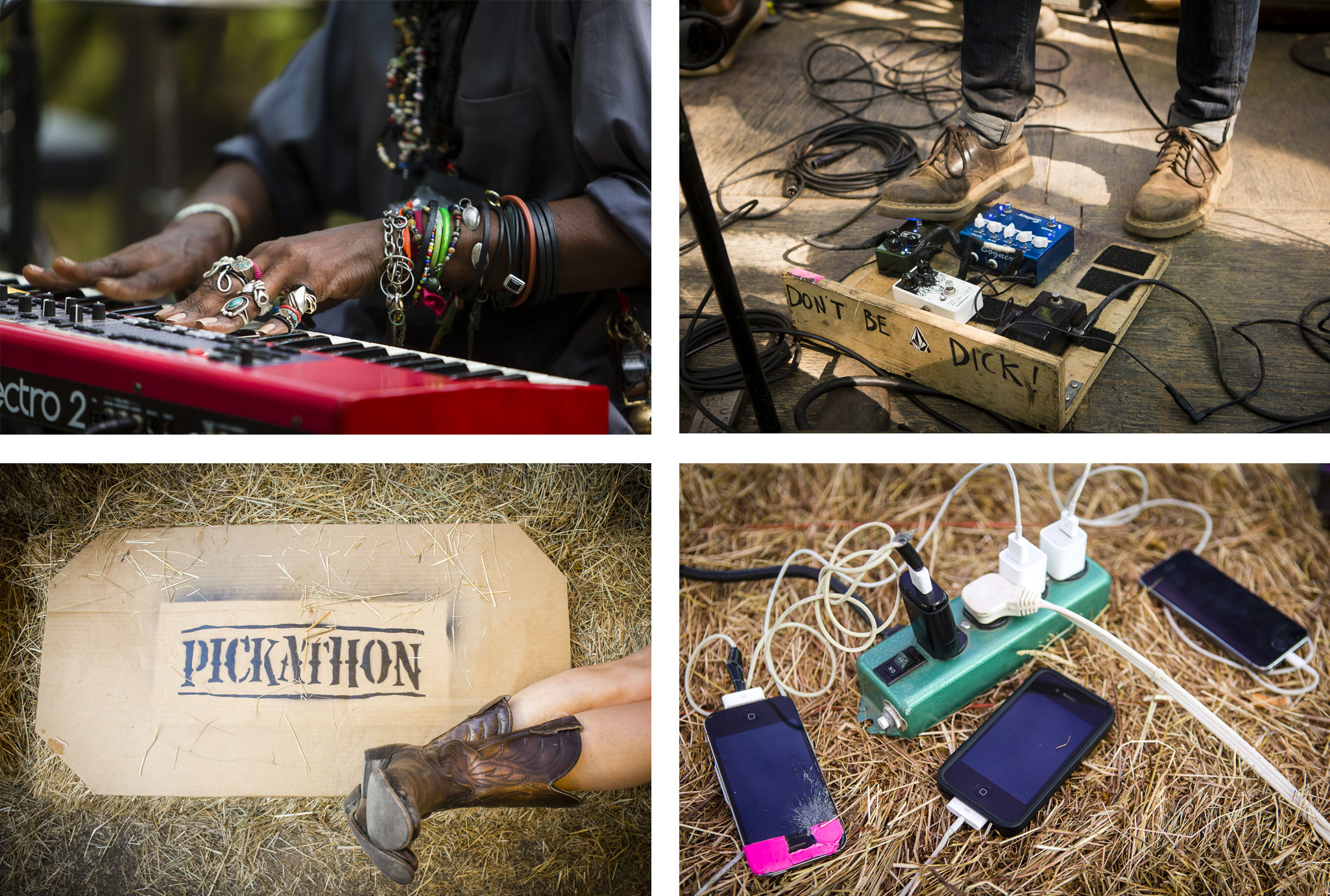



Portland Timbers' v. Sounders for the NYTimes Travel Section
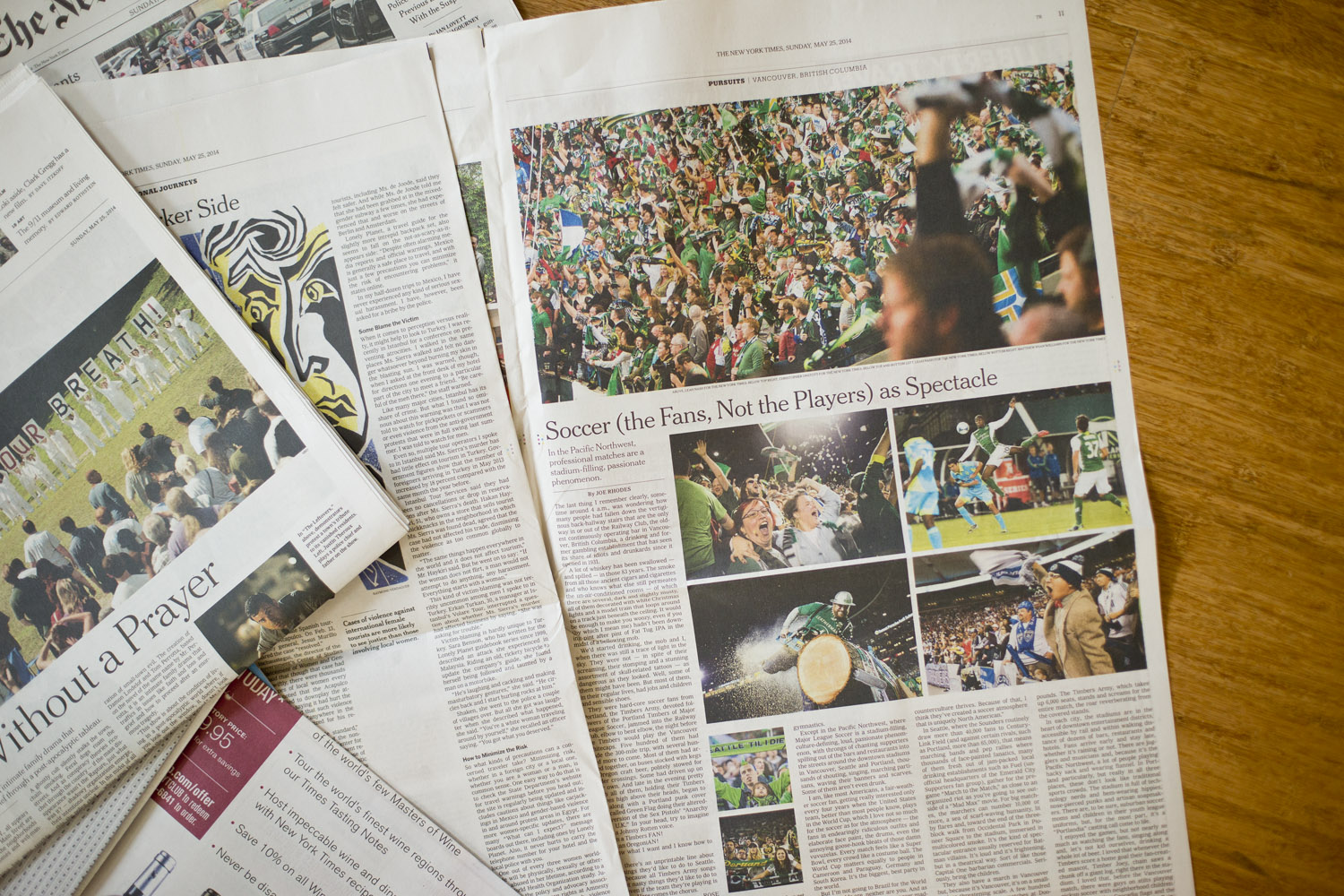 Last fall Christopher Onstott, Jan Sonnenmair and I all banded together to shoot a little NW soccer action for the New York Times Travel Section. Those Timbers Fans are not messing around. Many of them slept in line overnight to be the first ones in the stands. Not to mentions the costumes, the Timbers Army, the green smoke and those ubiquitous scarves. In some ways the fans are way more interesting to watch than the soccer itself (and way more fun to photograph). The game we shot they ended up beating the Sounders 1 to 0, which means the green smoke was flying. In a city with not a ton of professional sports options (and the Blazers will break our hearts every time) and not a ton of what I would call your typical sports fan, it is so amazing to see Portland rally around soccer.
Last fall Christopher Onstott, Jan Sonnenmair and I all banded together to shoot a little NW soccer action for the New York Times Travel Section. Those Timbers Fans are not messing around. Many of them slept in line overnight to be the first ones in the stands. Not to mentions the costumes, the Timbers Army, the green smoke and those ubiquitous scarves. In some ways the fans are way more interesting to watch than the soccer itself (and way more fun to photograph). The game we shot they ended up beating the Sounders 1 to 0, which means the green smoke was flying. In a city with not a ton of professional sports options (and the Blazers will break our hearts every time) and not a ton of what I would call your typical sports fan, it is so amazing to see Portland rally around soccer.

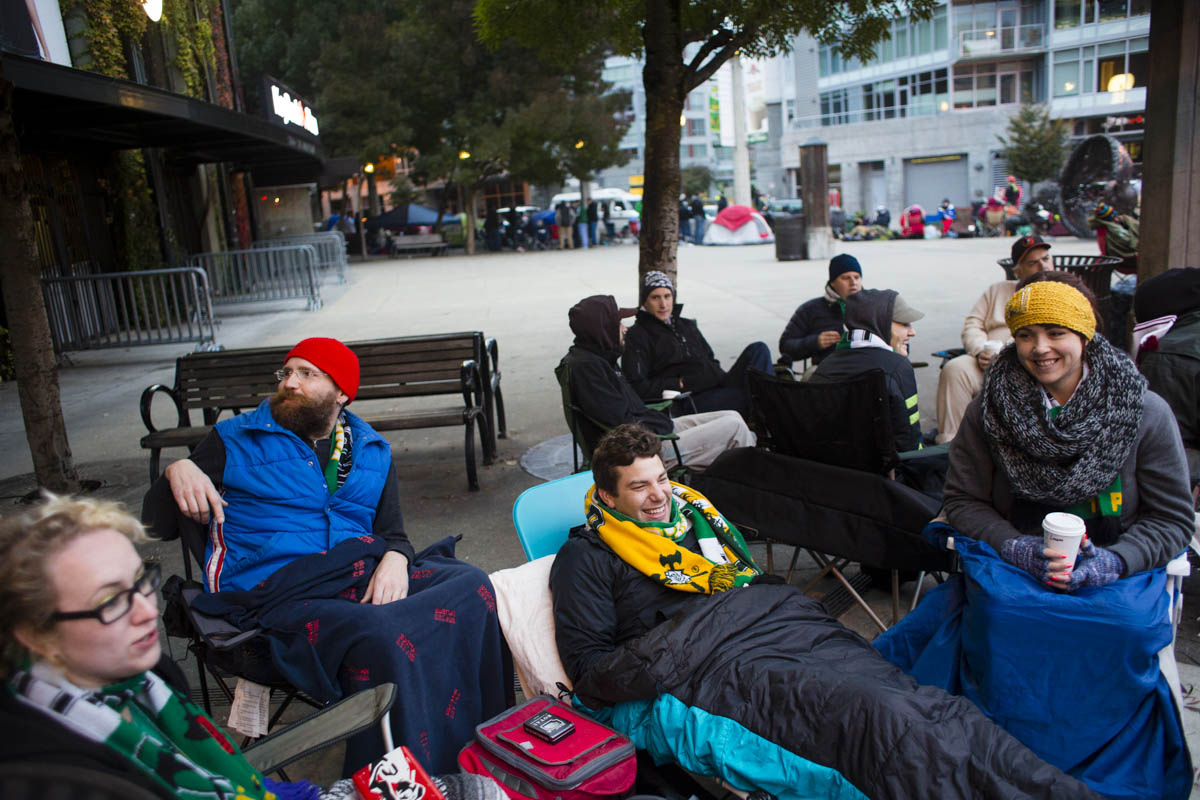


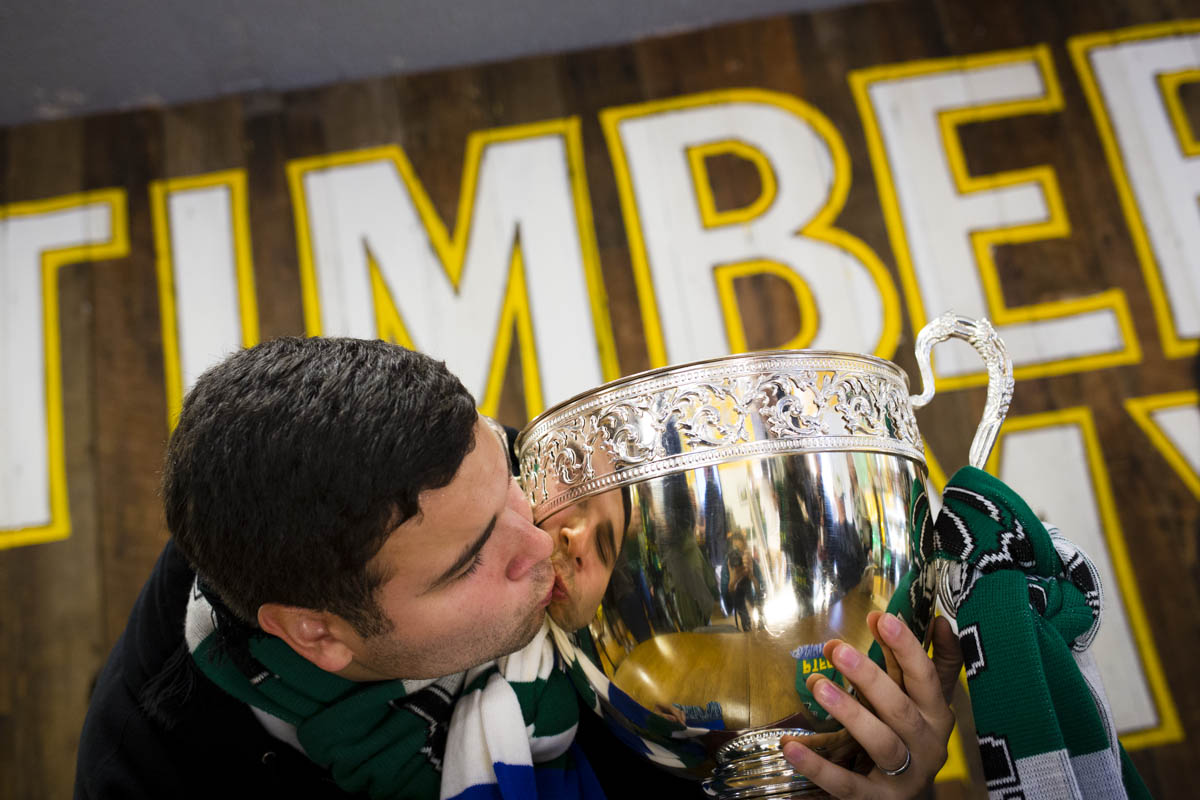

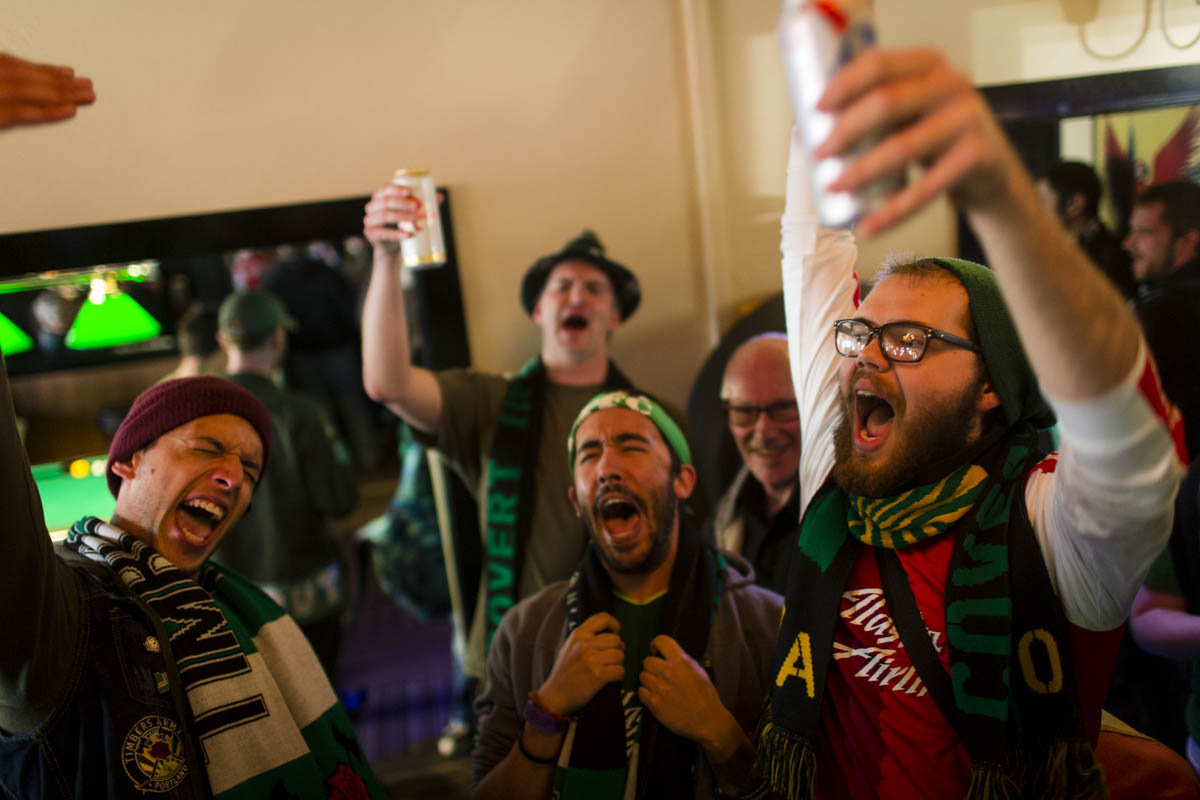
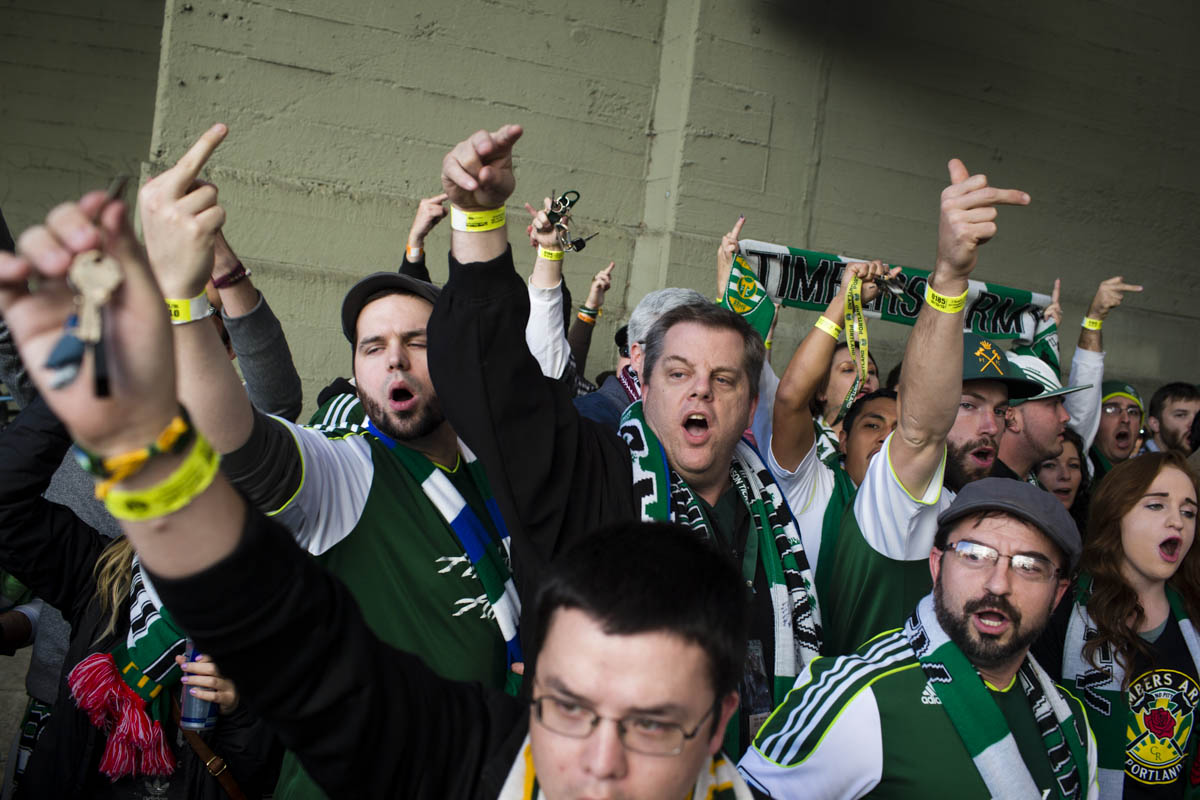
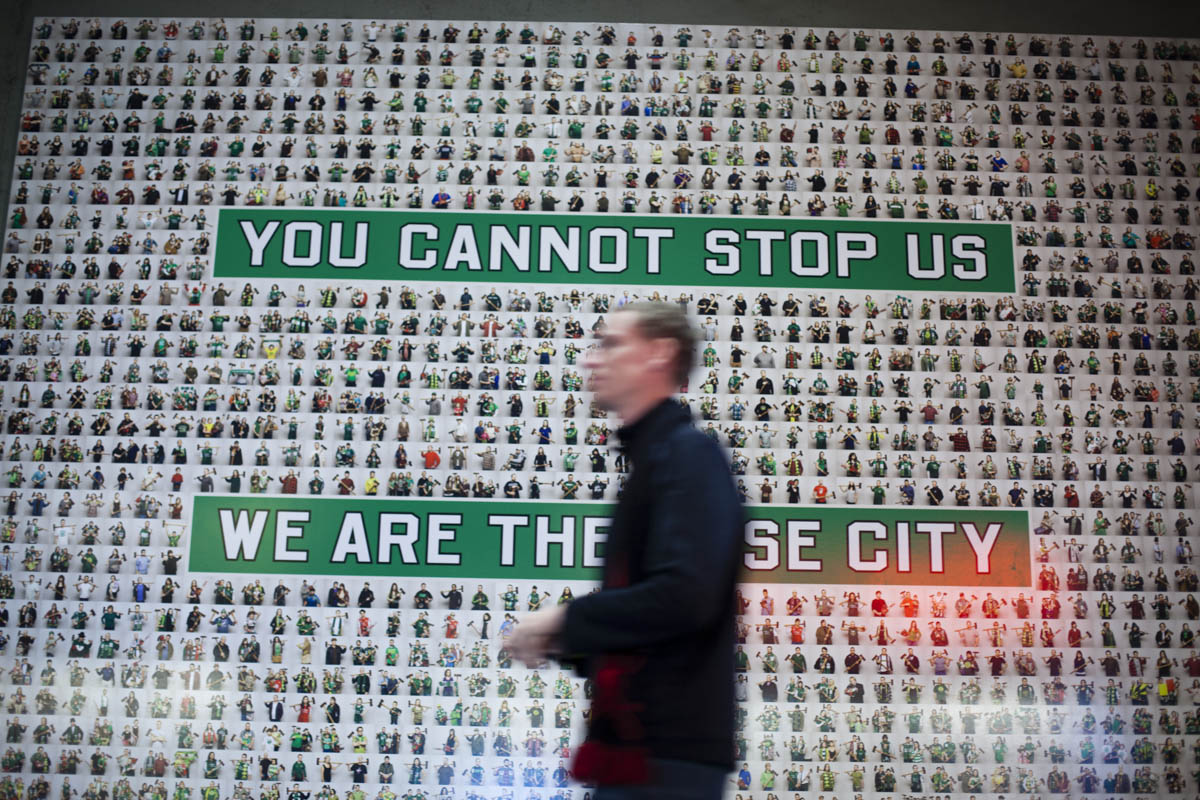

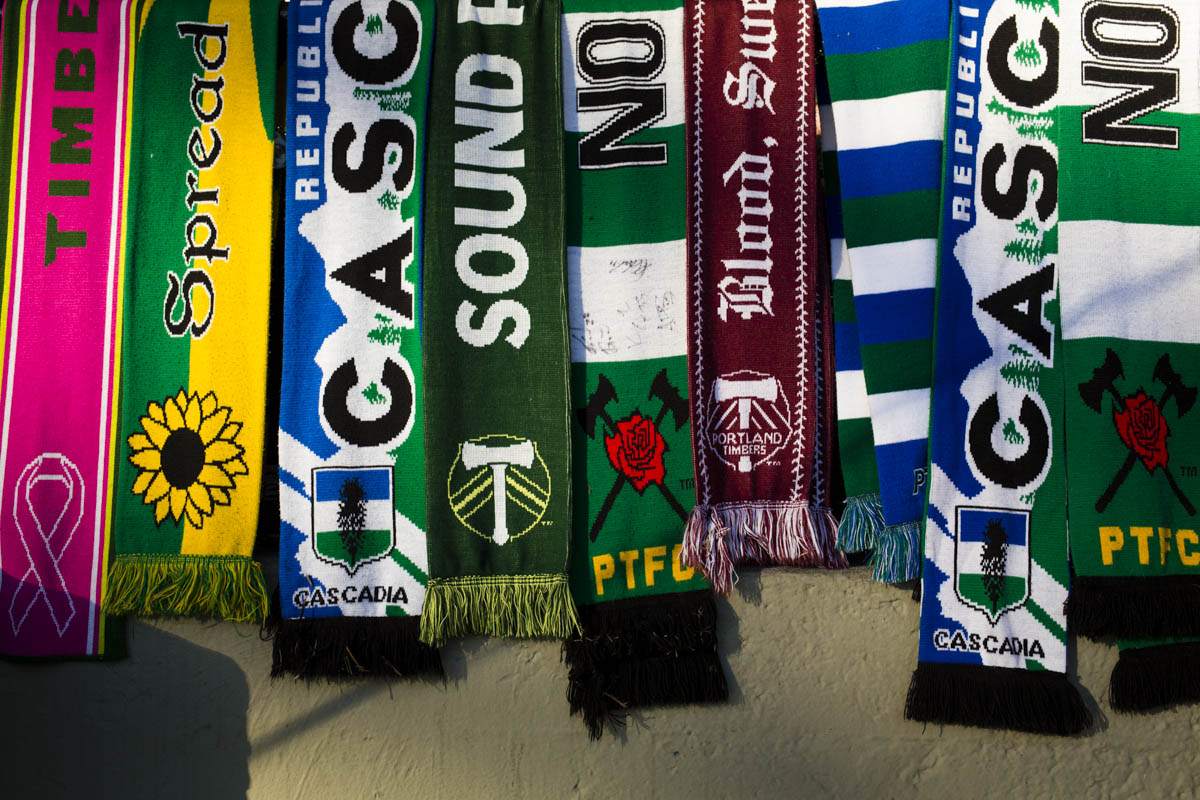





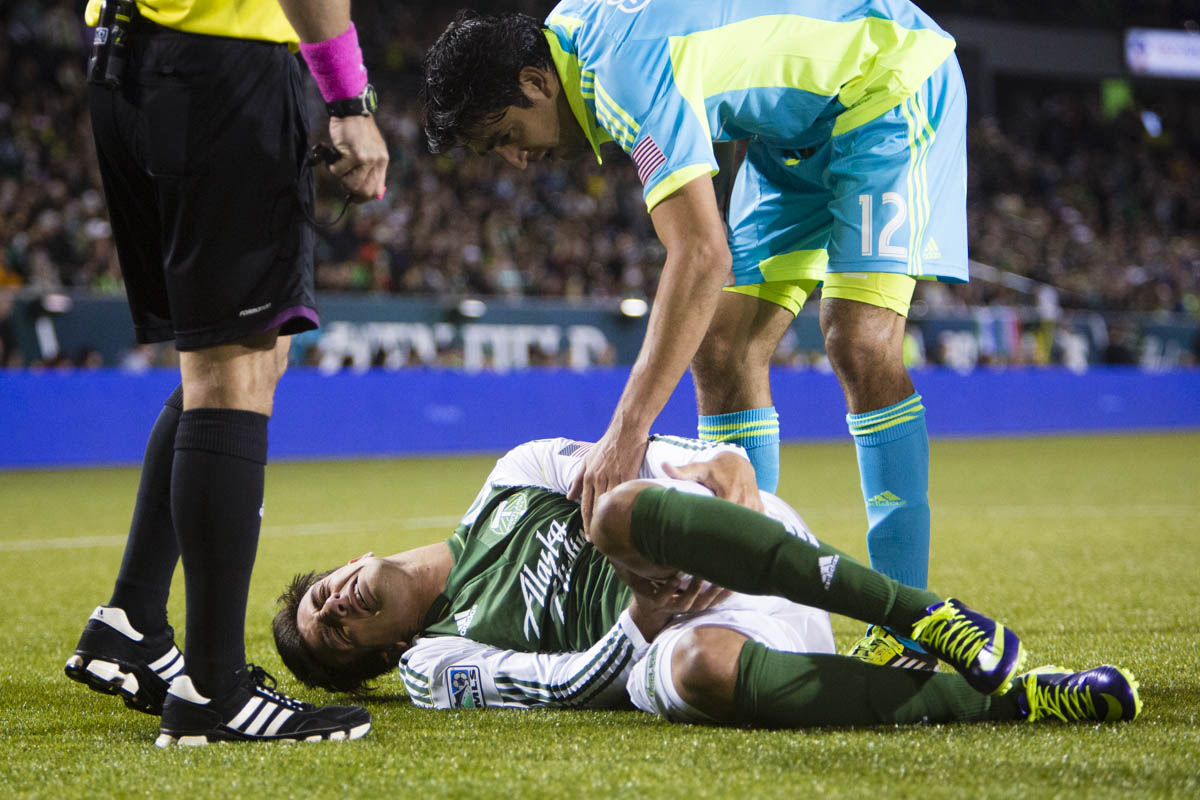







Vamping or "The One where I get under the Covers with a 15-year-old"
Man I love my job. In what universe is it your job to hang out with a 15-year-old boy in his bedroom at night while he makes beats on his laptop? Mine. Thank you Owen Lanahan, for letting me invade your haven of teenage mystery. For whom else but teenagers could come up with the term #Vamping? And who else but the New York Times would cover it? Well them and TeenVogue. As Owen so eloquently put it, "“Sometimes I look up and it’s 3 a.m. and I'm watching a video of a giraffe eating a steak,” he said. “And I wonder, ‘How did I get here?’ This my friends, is Vamping. Teens up to all hours of the night on social media. I remember in college calling it, "Riding the Vampire Express," where you would stay up working or partying all night and sleep all day, never seeing the sun. But Vamping is just so much better. And just in case you're thinking this blog contains zero informational material, here is a recent poll conducted by the National Sleep Foundation. Look, I just made you smarter. You are welcome.

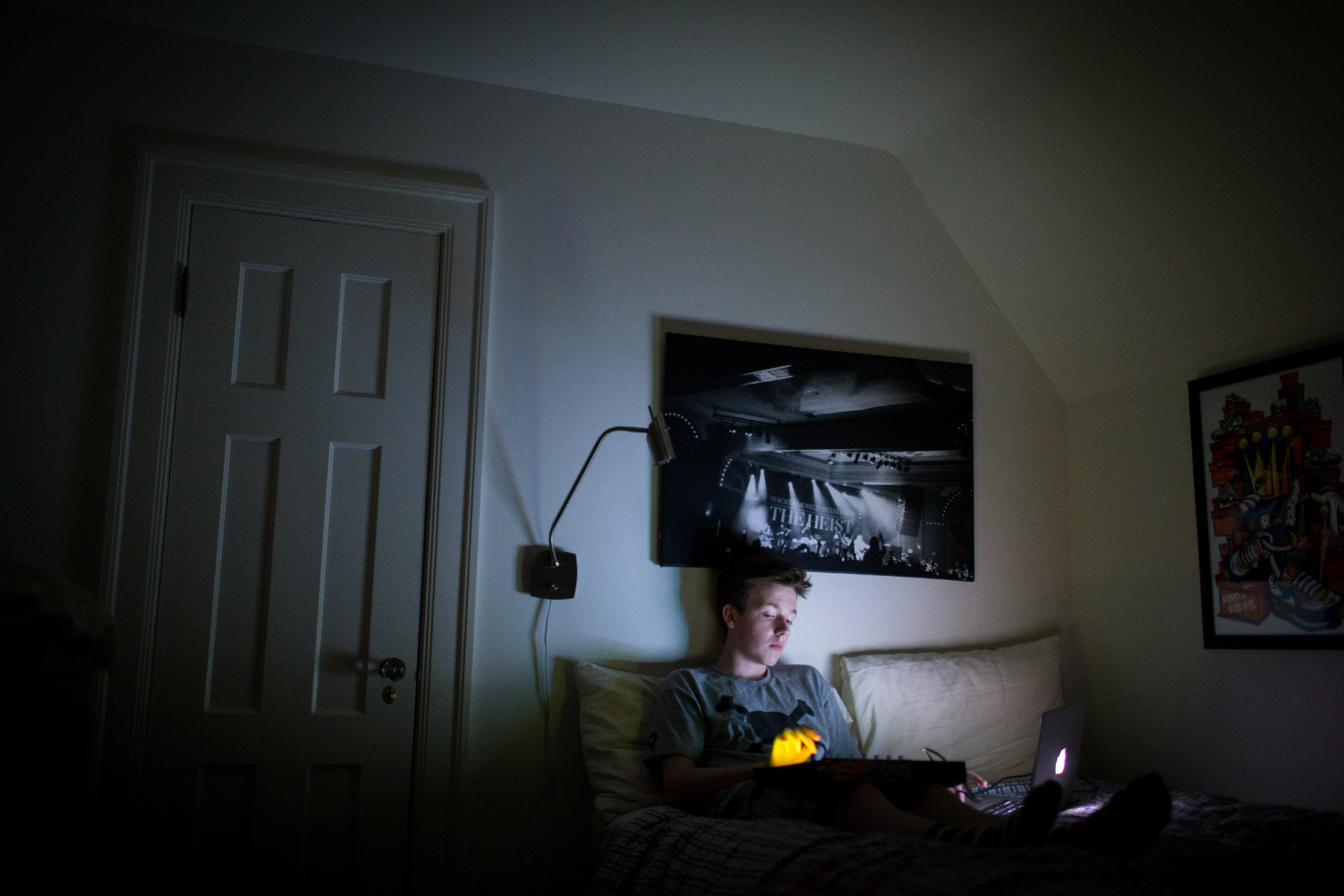
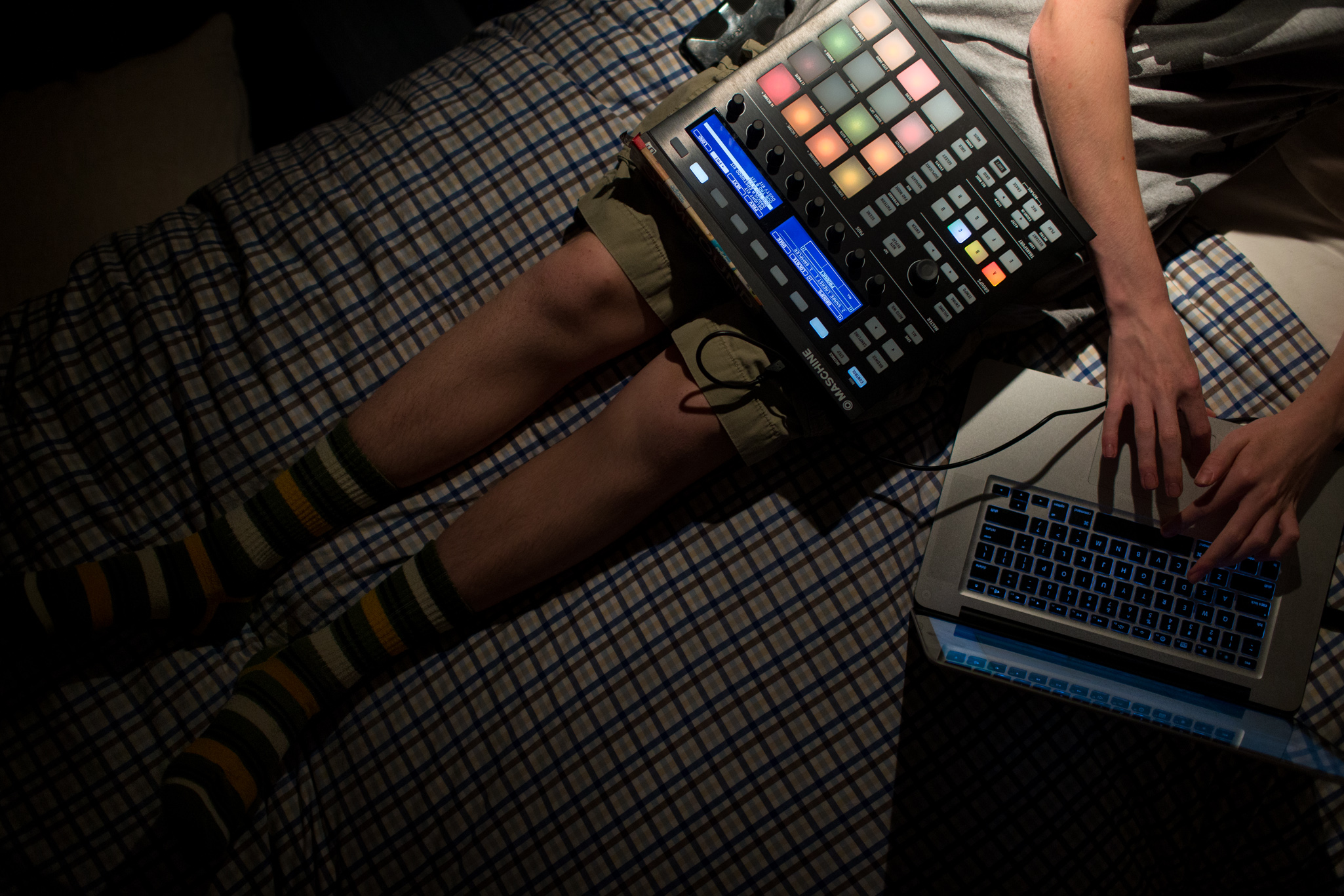
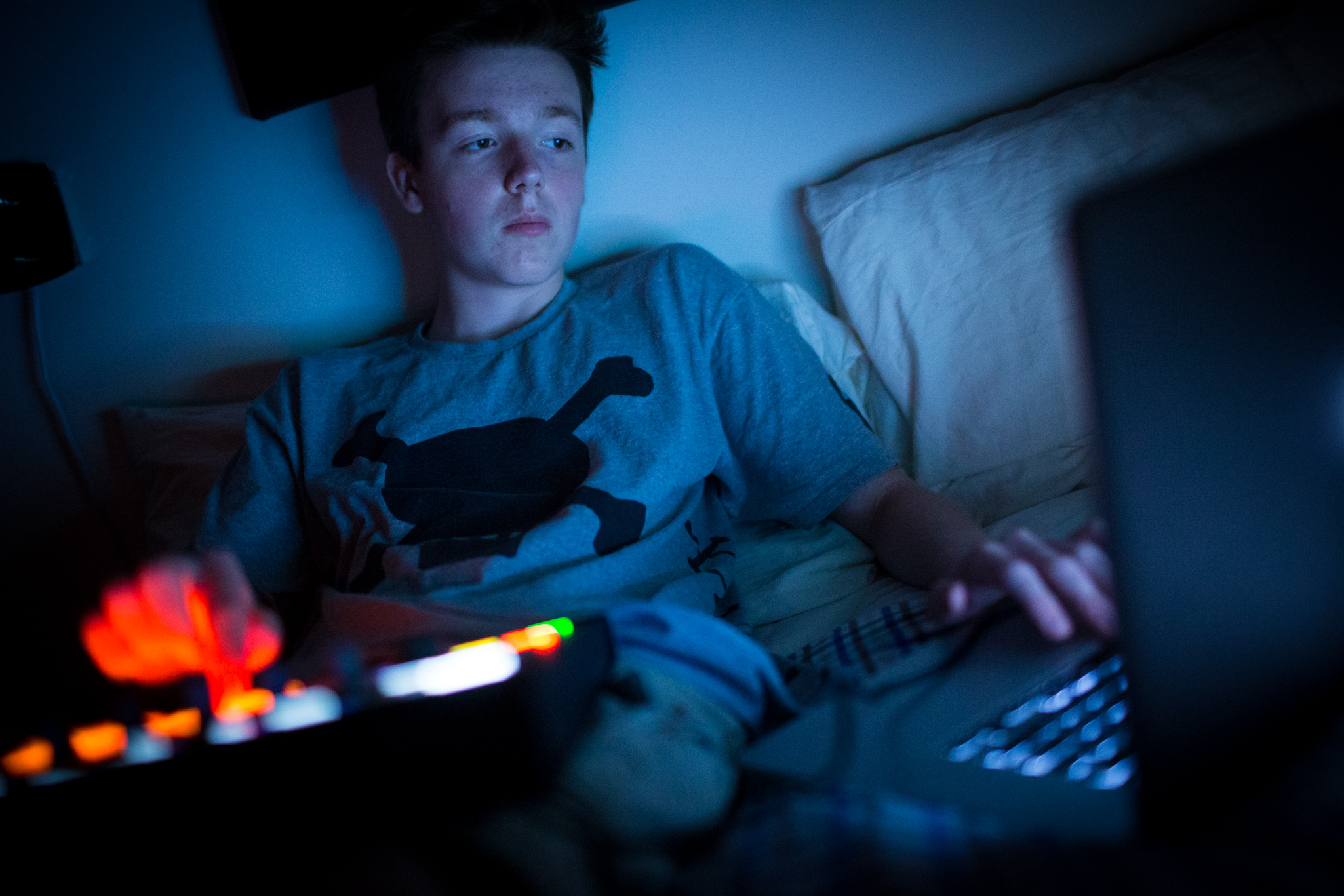

Little-Known Health Act Fact: Prison Inmates Are Signing Up
The New York Times and moi recently did a story about how for the first time ever jails and prisons around the country are beginning to sign up inmates for health insurance under the law, taking advantage of the expansion of Medicaid. This sent me over to Inverness Jail to chat with inmate Devon Campbell-Williams. Photographing in prison is always a bit nerve wracking, trying to establish rapport, trying not to break any rules, trying to act cool when you are freaking out. Being a woman at a men's prison can help, for just the reasons you think it would. Devon was charming and sweet and in our allotted five minutes we talked about his plans to open a food cart based on carnival fair food and the fact that, due to the Affordable Care Act we both had health insurance for the first time that either of us could remember. All this while I danced around him, my finger remaining steadily on the shutter release.
Devon is one of more than 1,200 inmates in the Portland area alone that have been enrolled through the infamous state exchange, Cover Oregon. The biggest benefit of this is that enrolled inmates have coverage after they get out. People coming out of jail or prison have disproportionately high rates of chronic diseases, especially mental illness and addictive disorders but few have insurance. Oh, irony. As most things dealing with health insurance are, it is a tricky story. It comes down to who is going to pay the bill and whether more money could be saved over the long term if connecting newly released inmates to services helps to keep them out of jail and reduces visits to the ER, the most expensive form of care. 
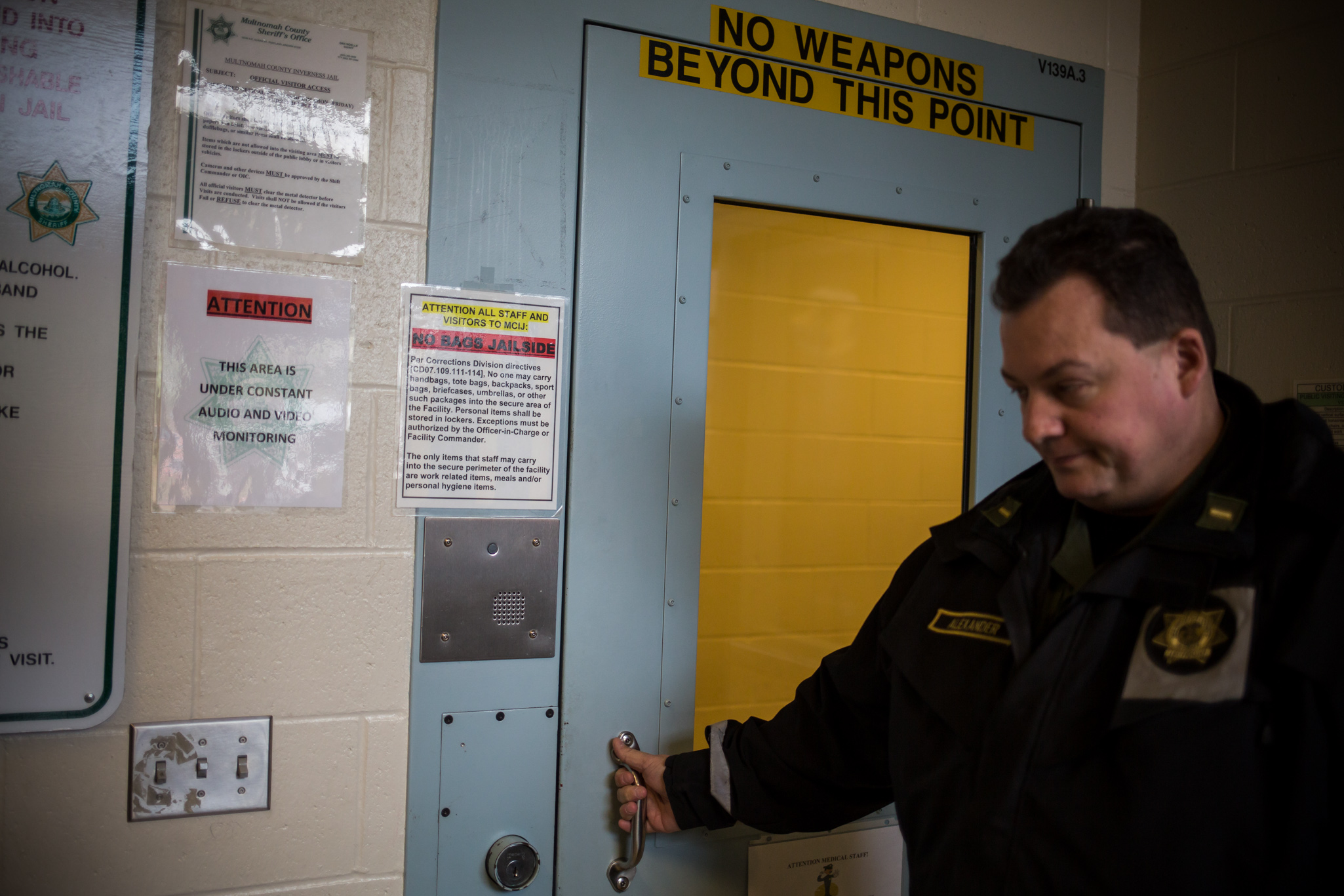
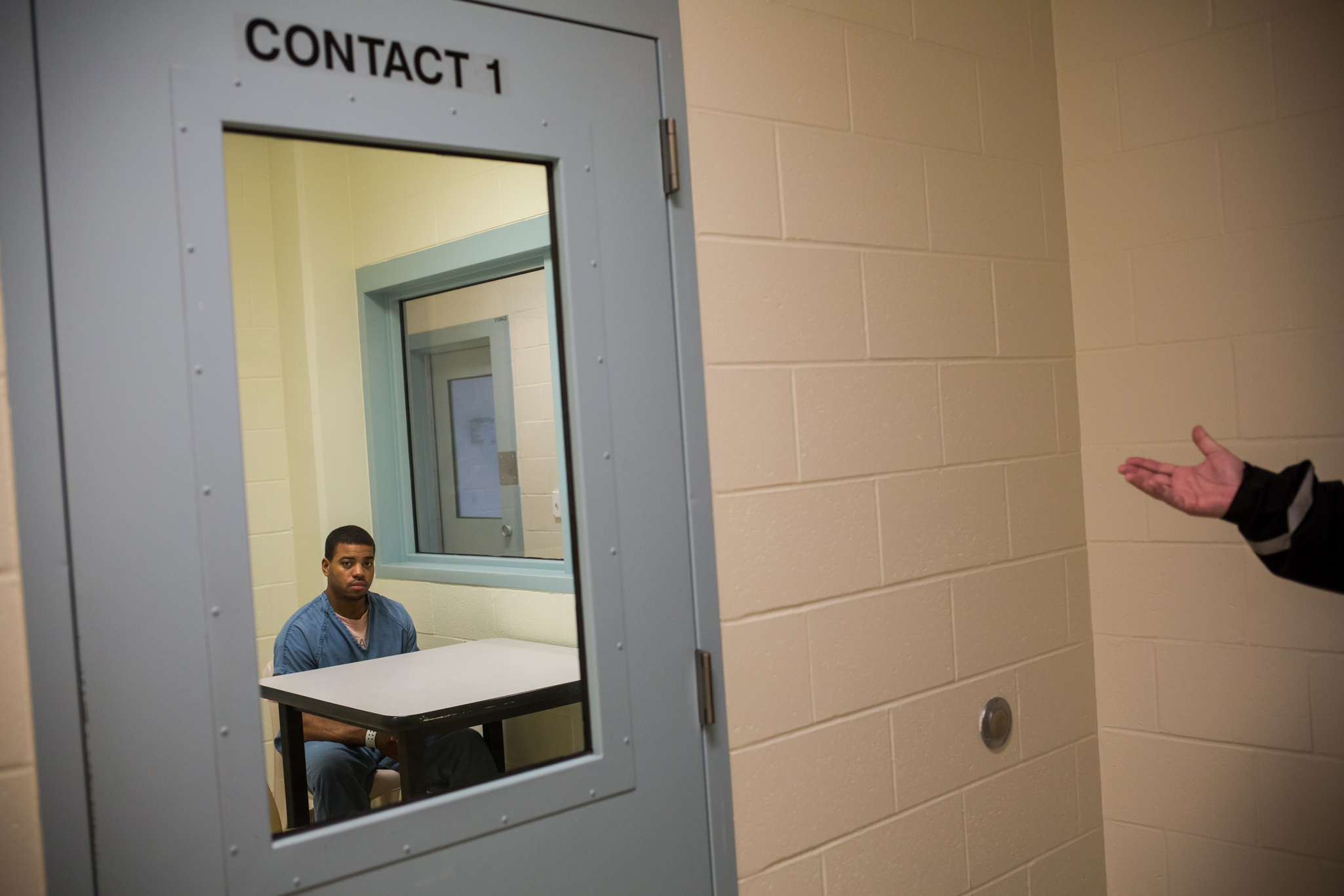
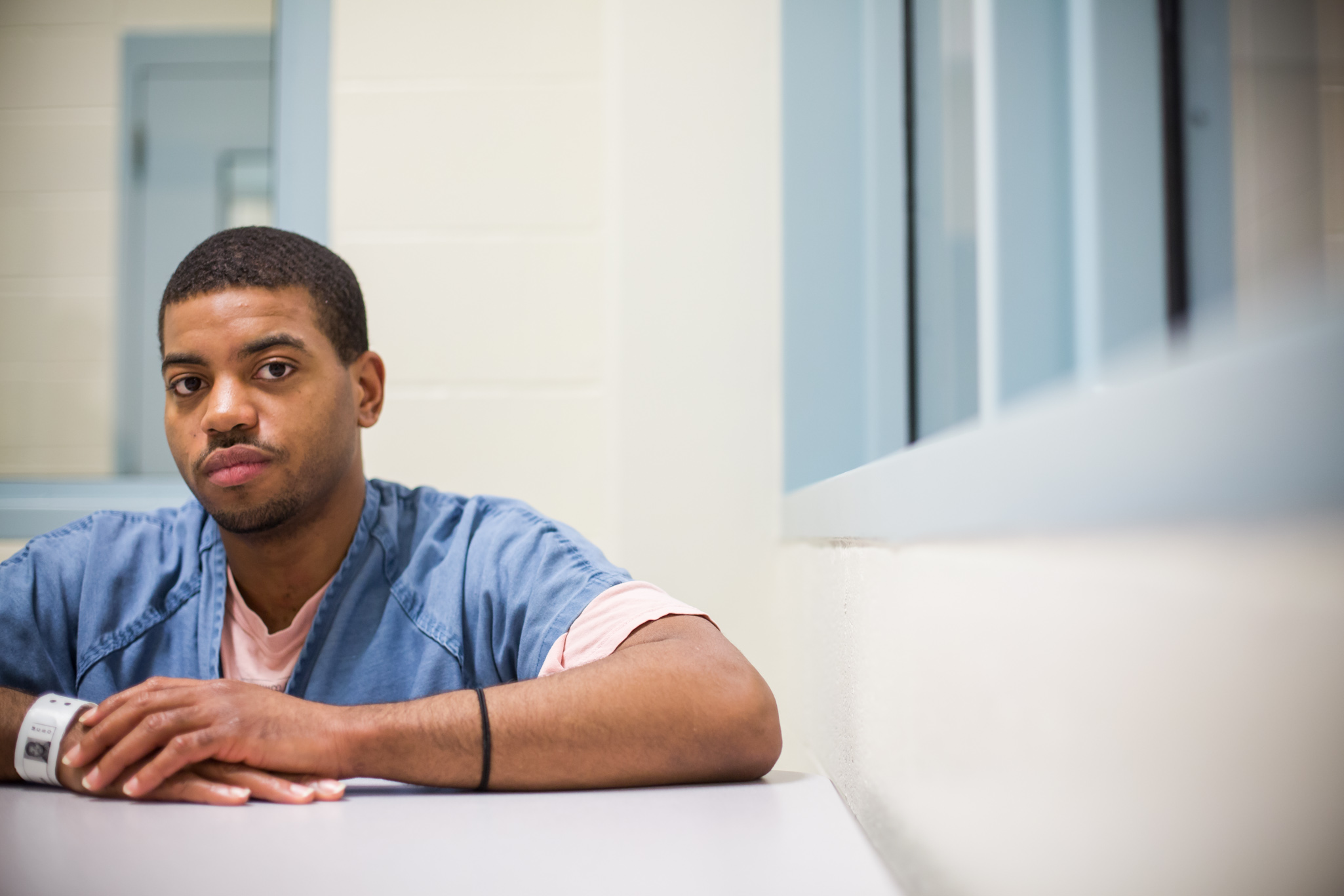
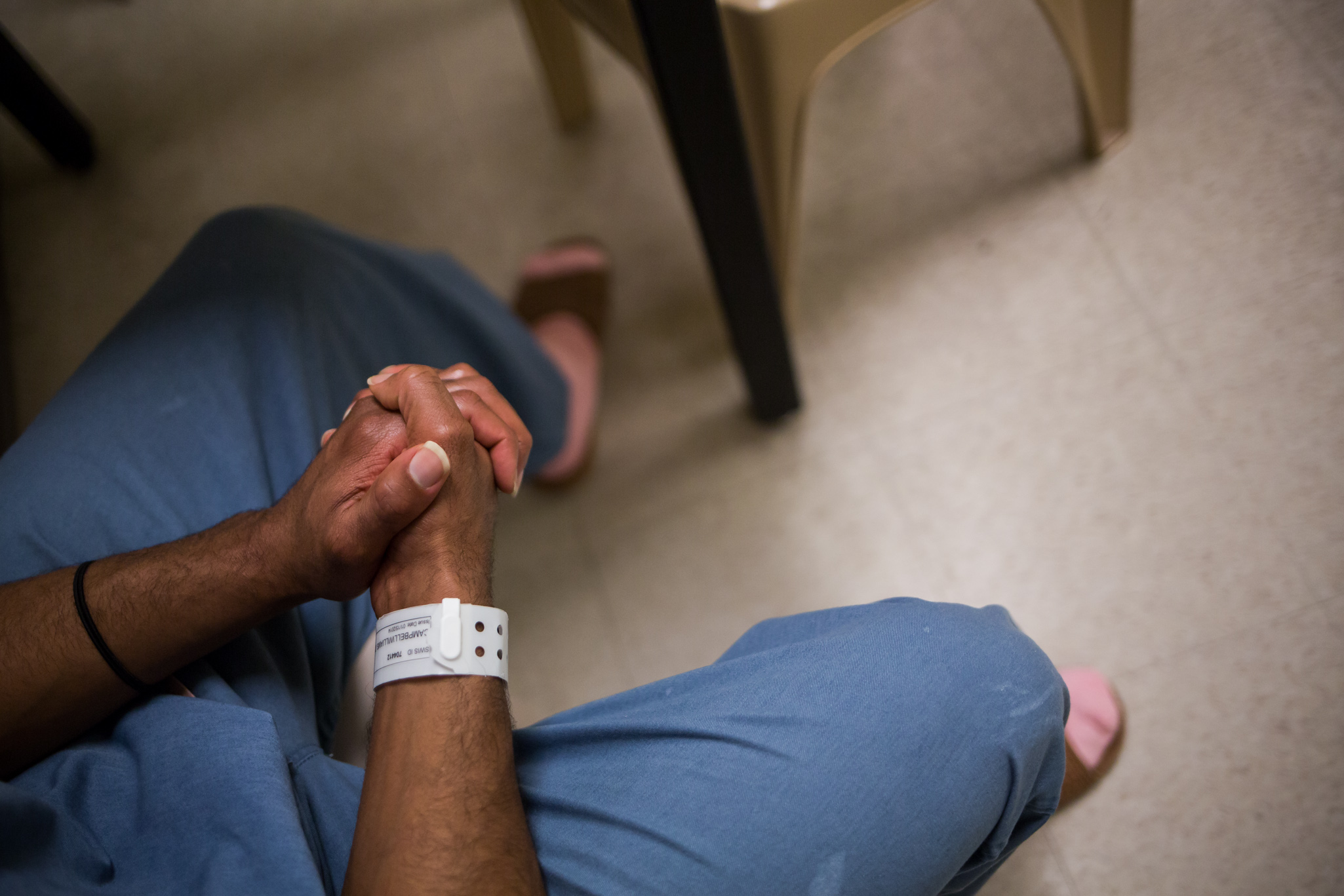
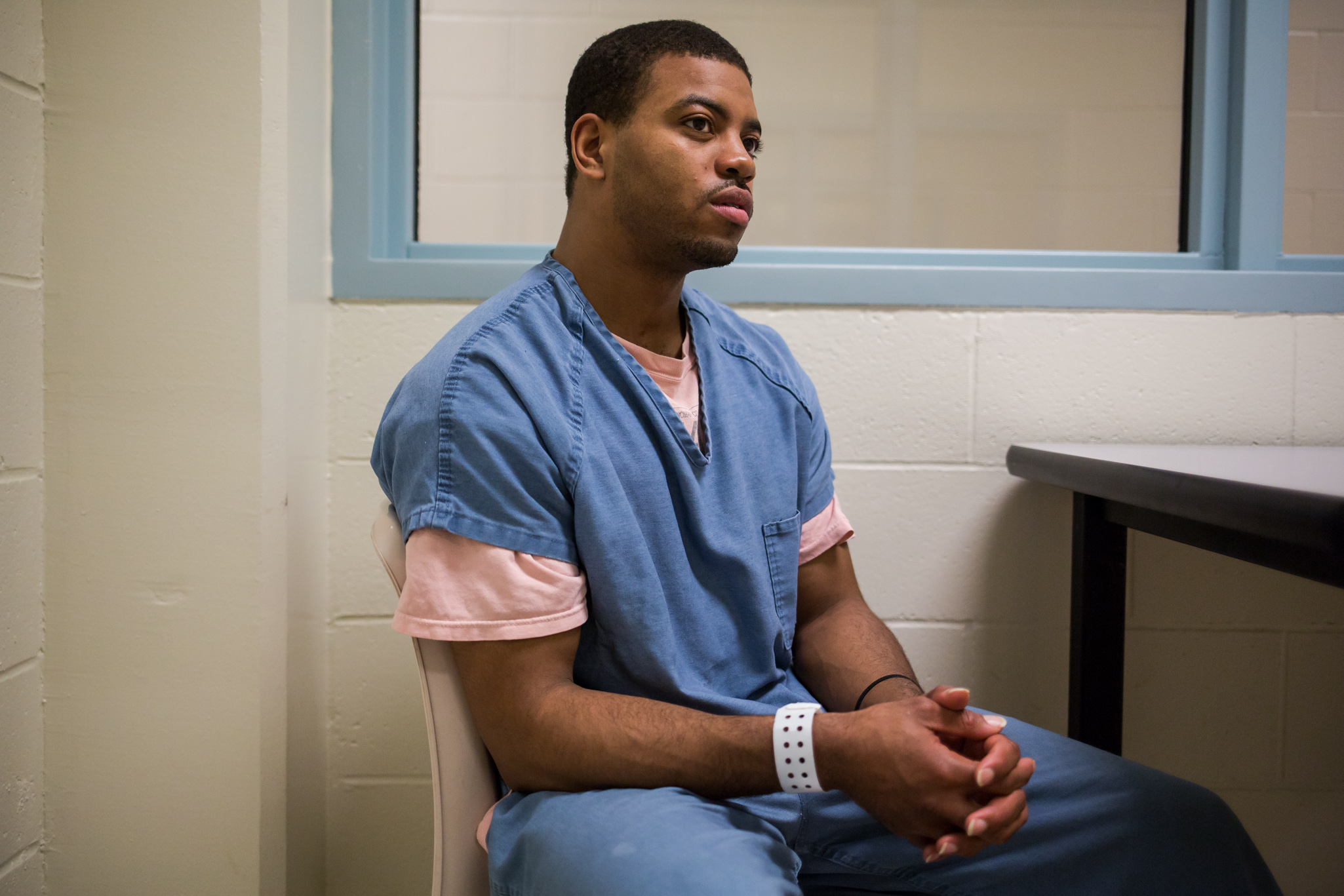
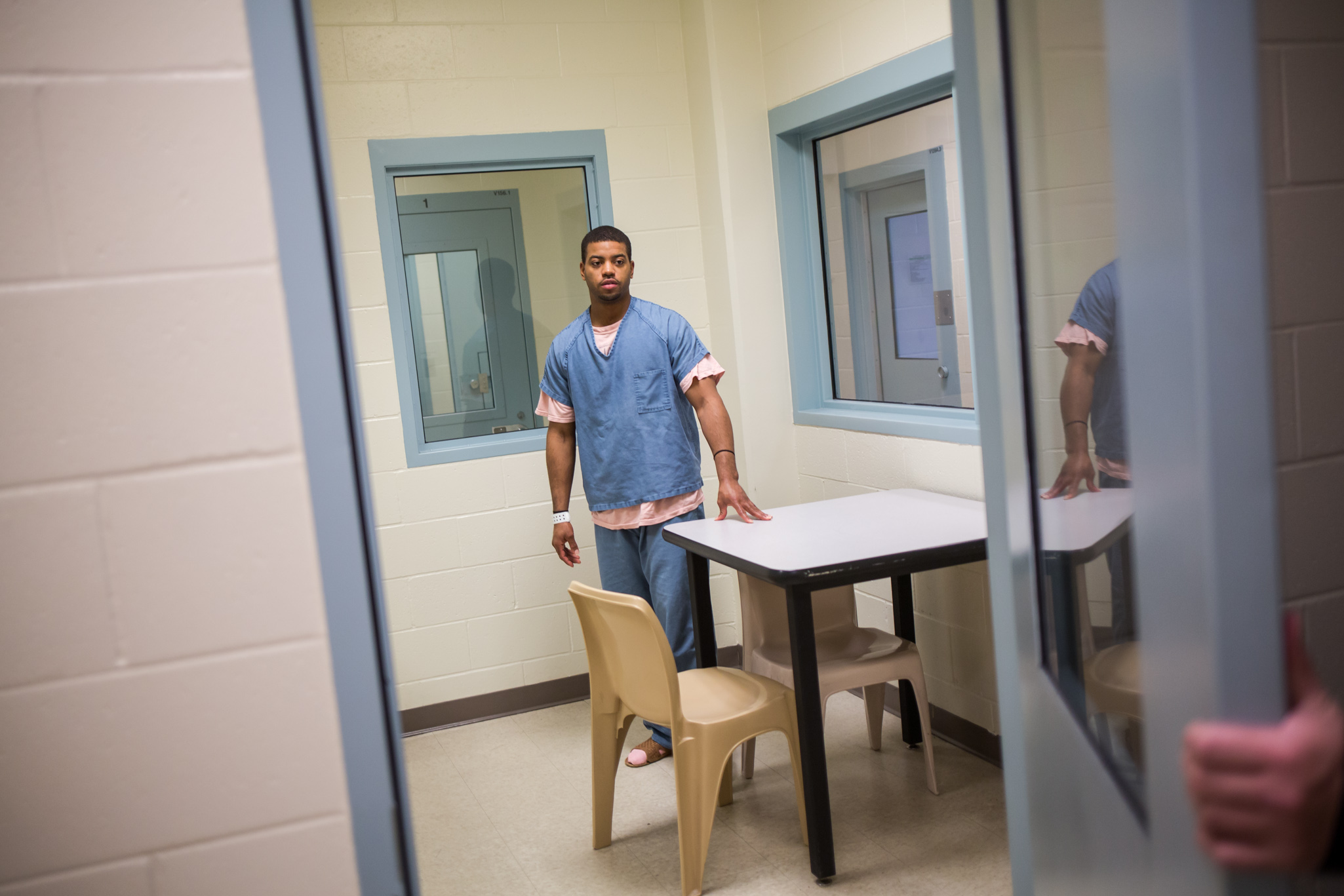
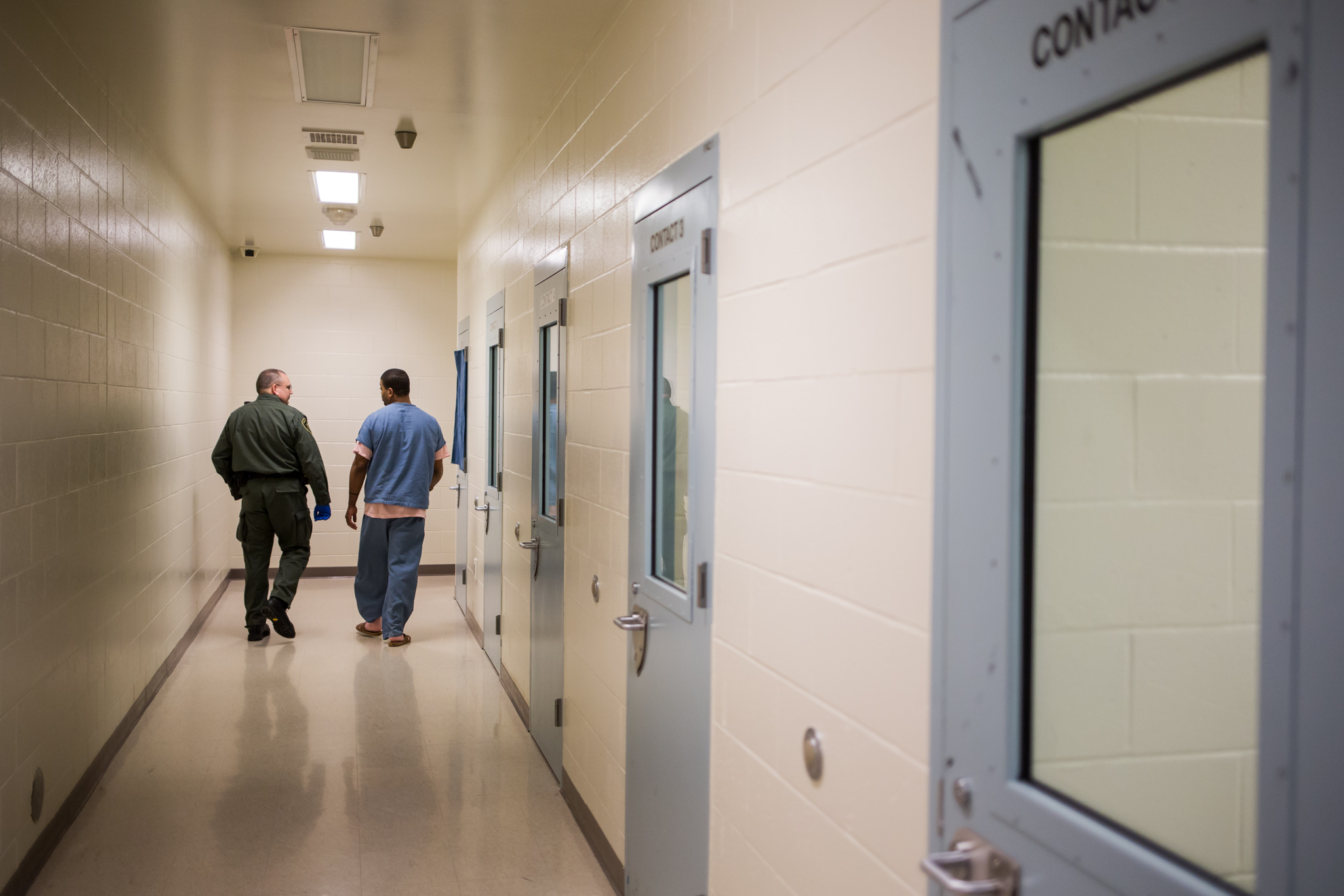
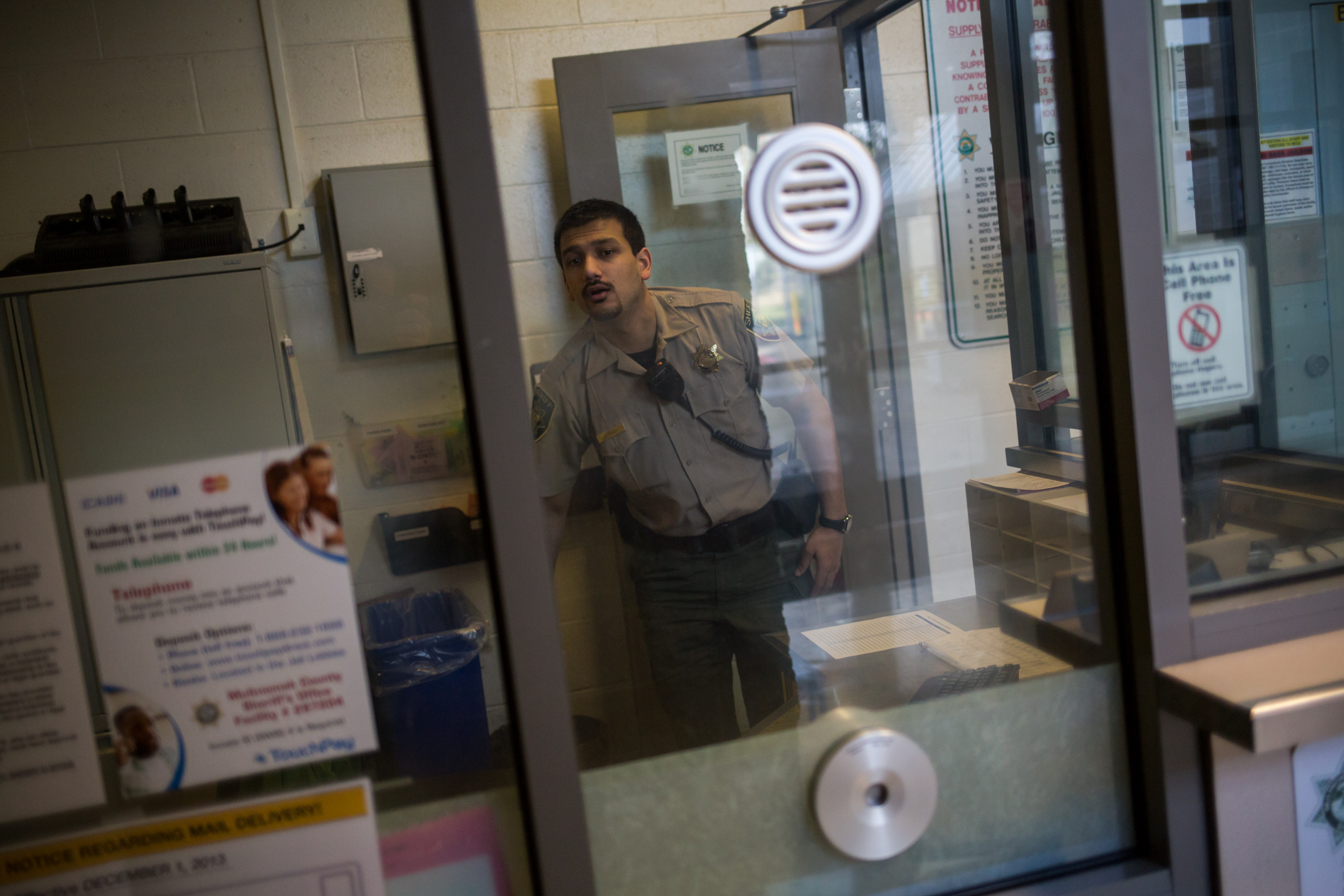
Willamette Week's 2013 Restaurant Guide
Love the bounty of good eating that is Portland. Roe, Catagna, Ava Gene's are all vying for most buzz in the city these days (case in point, I have photographed all of them at least twice). But there are a plethora of others out there for those of us that hate waiting in line. So many choices in fact that it is nice that Willamette Week's Restaurant Guide helps narrow things down (or maybe simply make you aware of all the possibilities). Now go forth and chew.
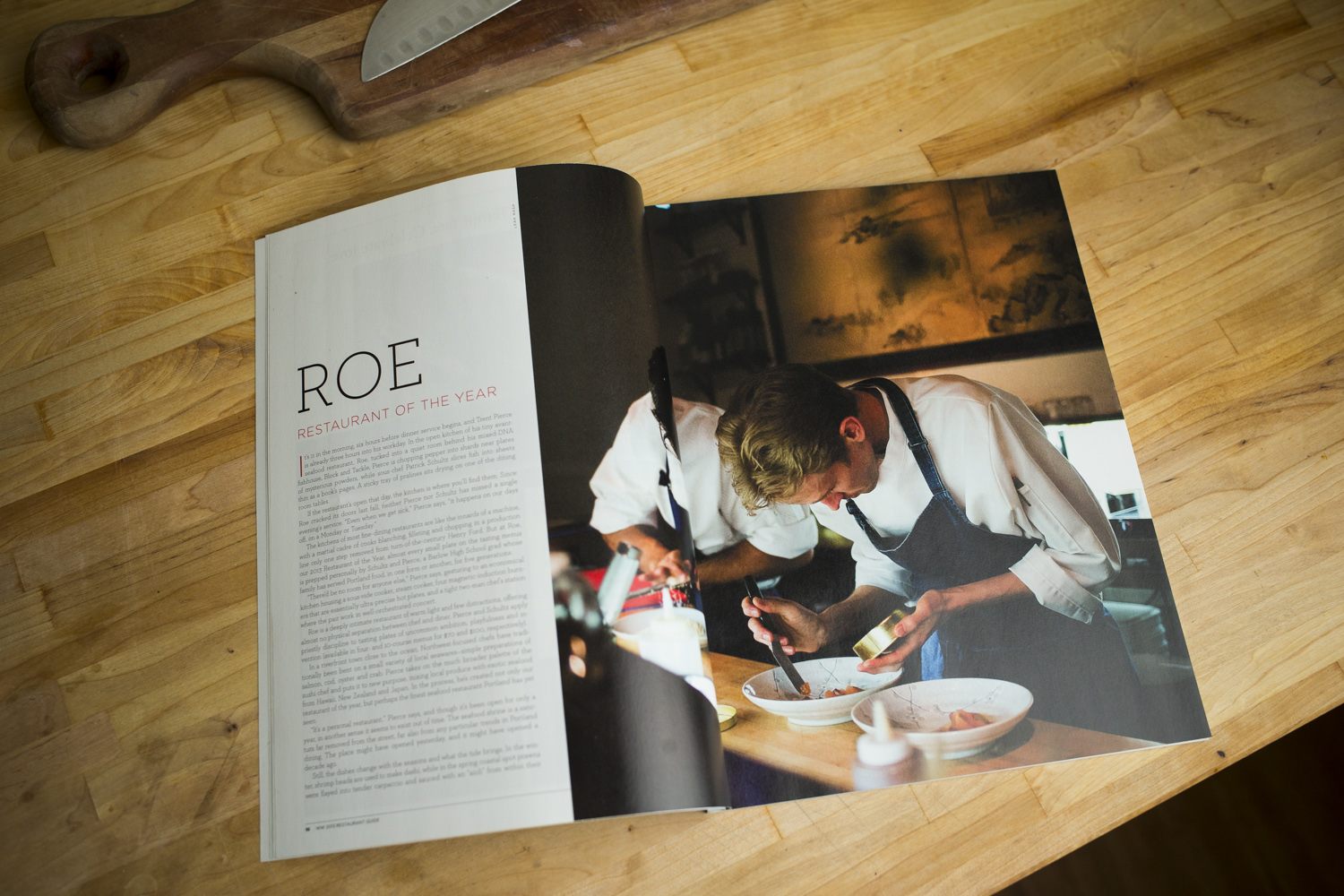
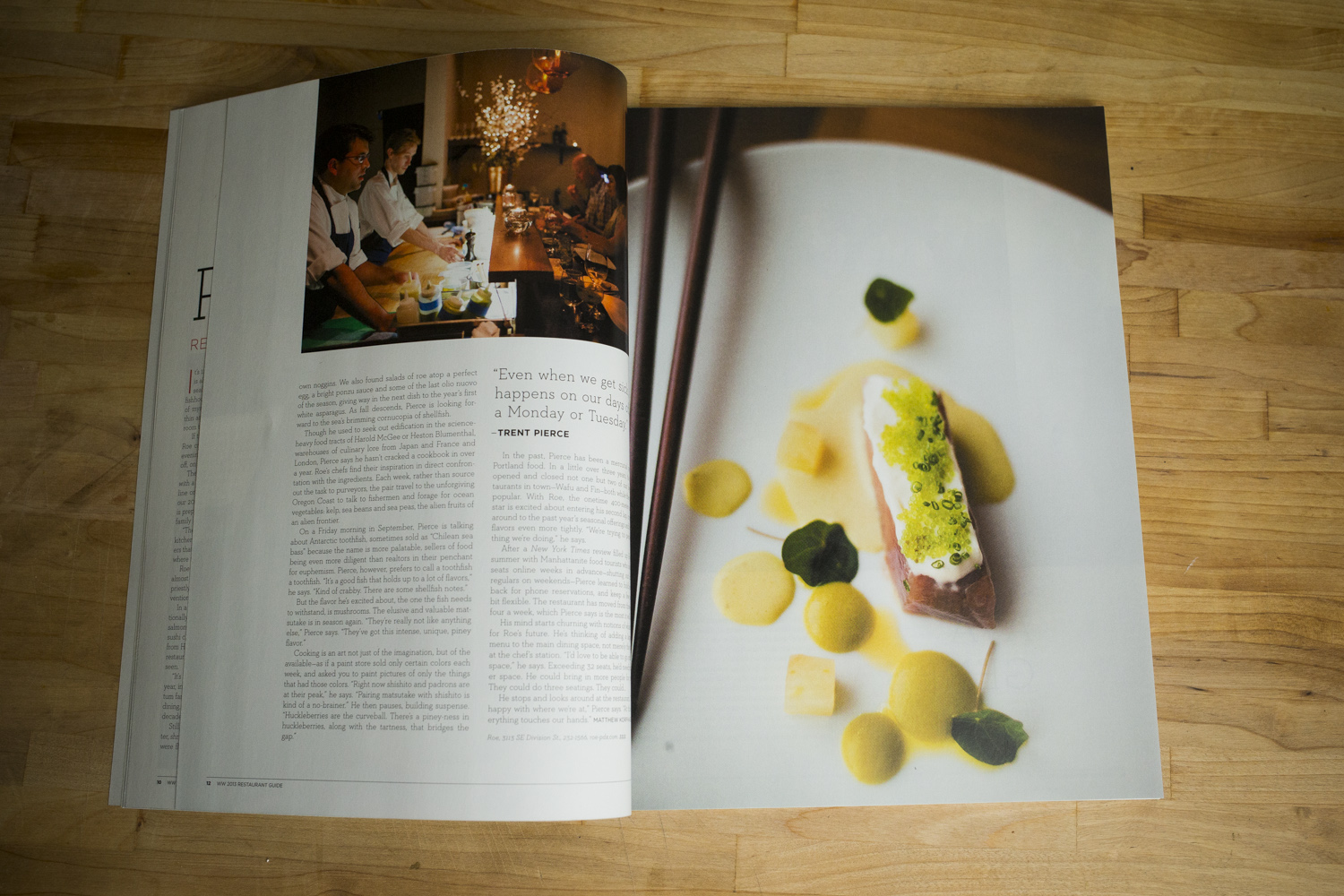

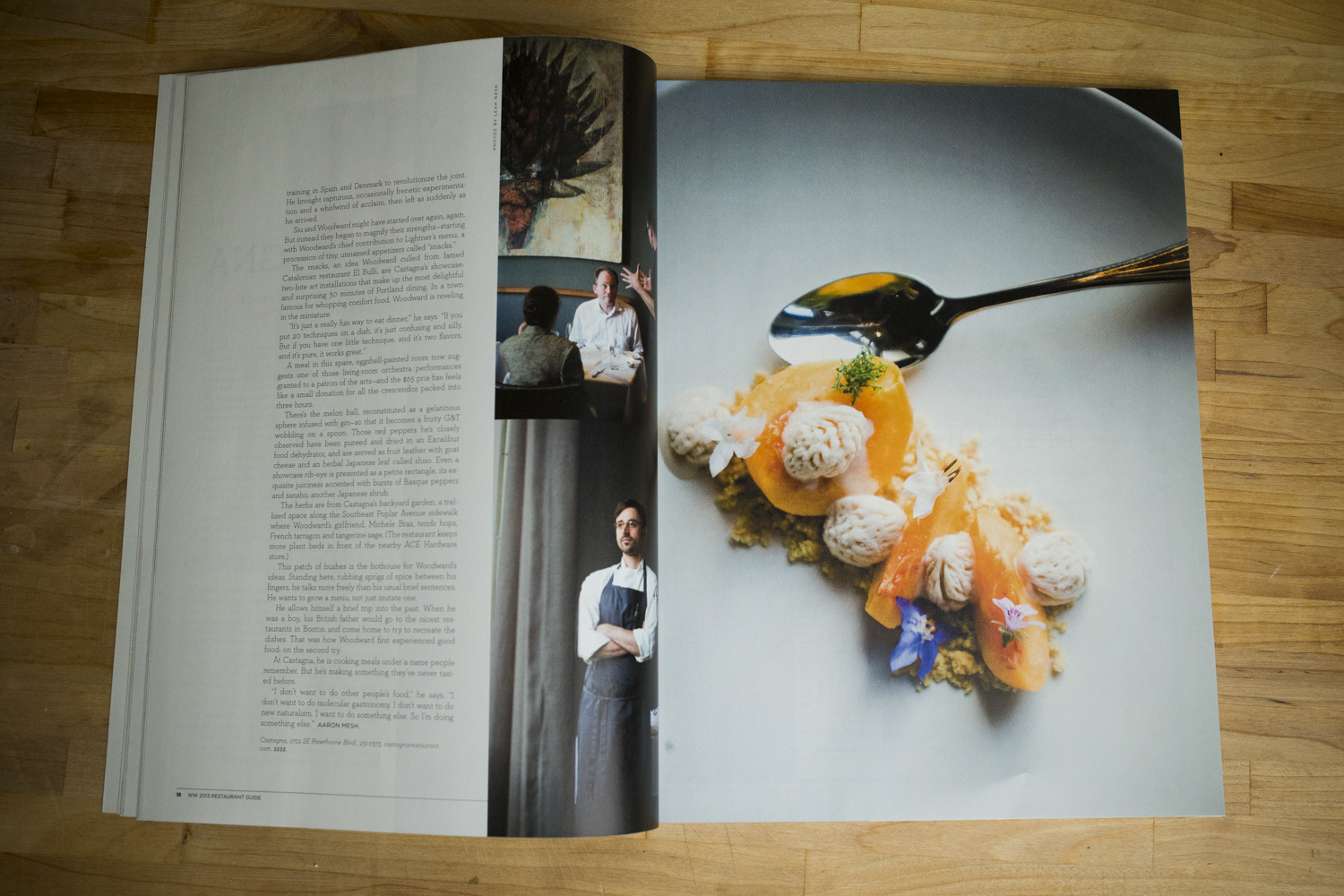

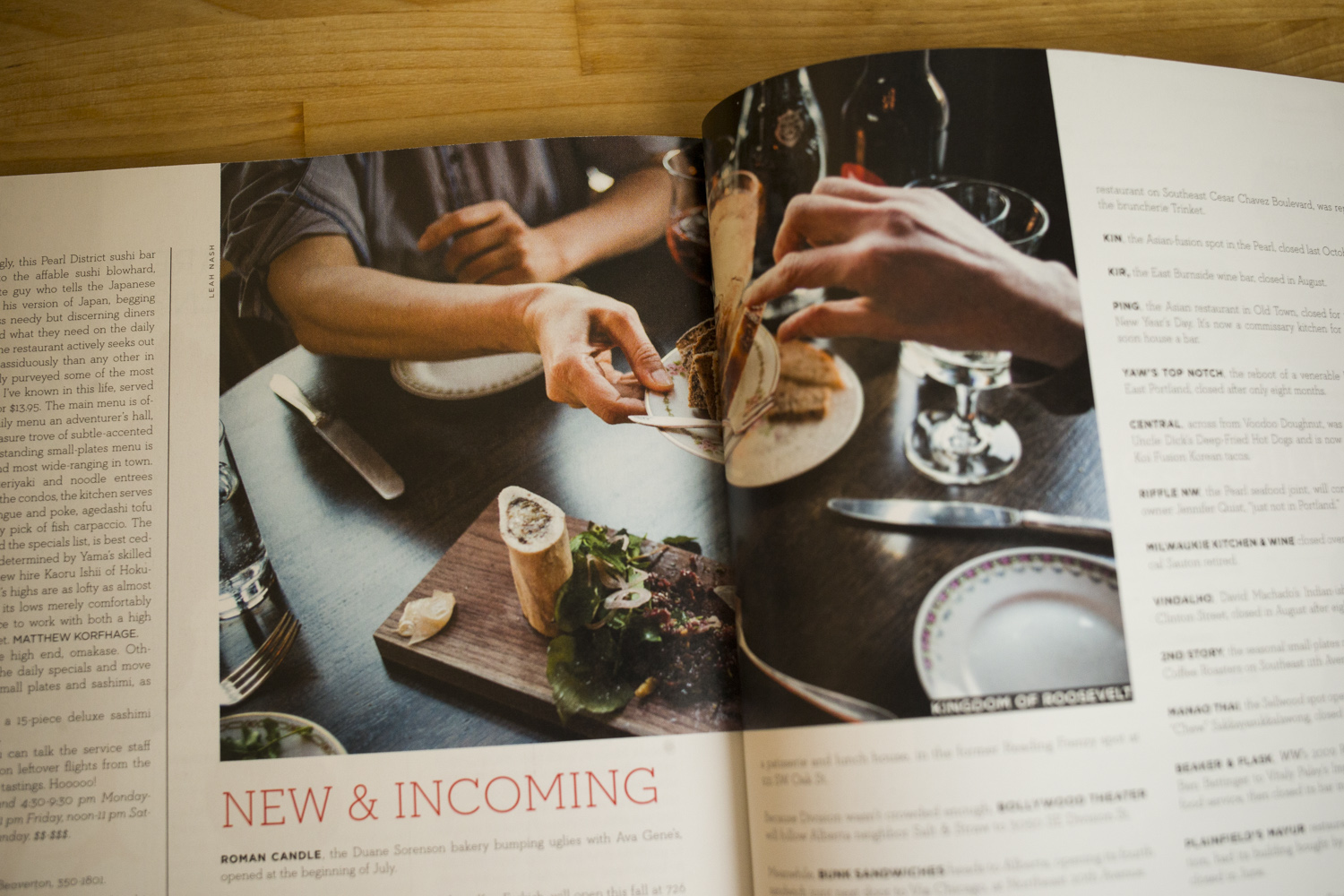
The Addictive Allure of the Steelhead's Tug - Photos for the New York Times
Spend a rainy day a few months back chasing down steelhead in the Deschutes River. My partners were fly fishing devotees, Chris Santella, author of 50 Places to Fly Fish Before you Die (guess I can cross one of them off my list) and environmental lawyer Dave Moskowitz, the Executive Director for the Deschutes River Alliance. These gentlemen spend 40 to 50 days on the river each season, knee deep in the rushing water, waiting for the fish to get irritated enough to make their move. For steelhead rarely feed once they are in the river, rather they seem to take a fly as an act of aggression. Even if they are present where you are fishing, they have to be in the mood (presumably, a bad mood) to bite. For these reasons days will sometimes pass with not a single acknowledgement of even their presence, making their elusivity all the more attractive to those that seek a challenge. This was much of the case on our day in the water, broken up by beer and a variety of fish tales from both men. As the sky grew dark, and I grew cold, Chris got the solitary respite of the day, a sharp tug on his line. He lifted his rod, exactly the wrong thing to do, and the fish was gone, never even seen. As we headed home, both men planned their next trip out. For myself, thwarted from even a single glimpse during an assignment where that was the only goal, I declined, and tried not to curse the fish. You can read the full story of our adventures, here in the New York Times.
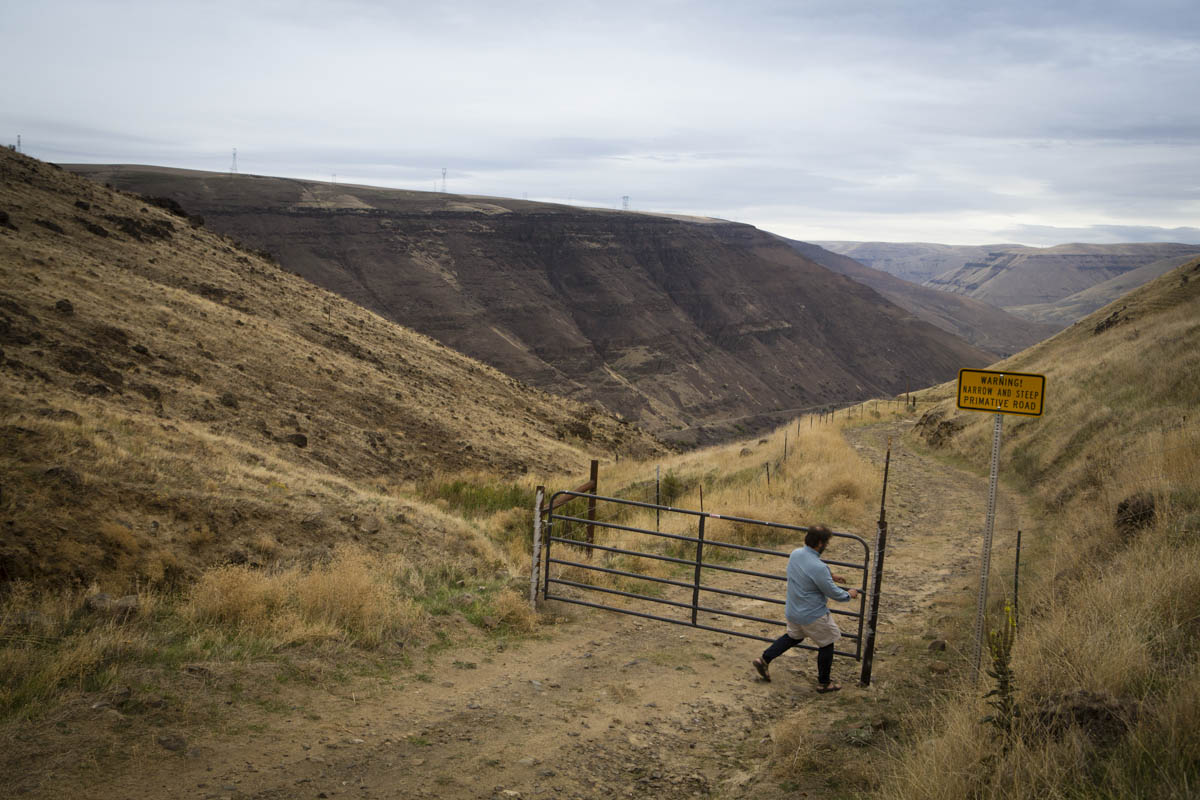


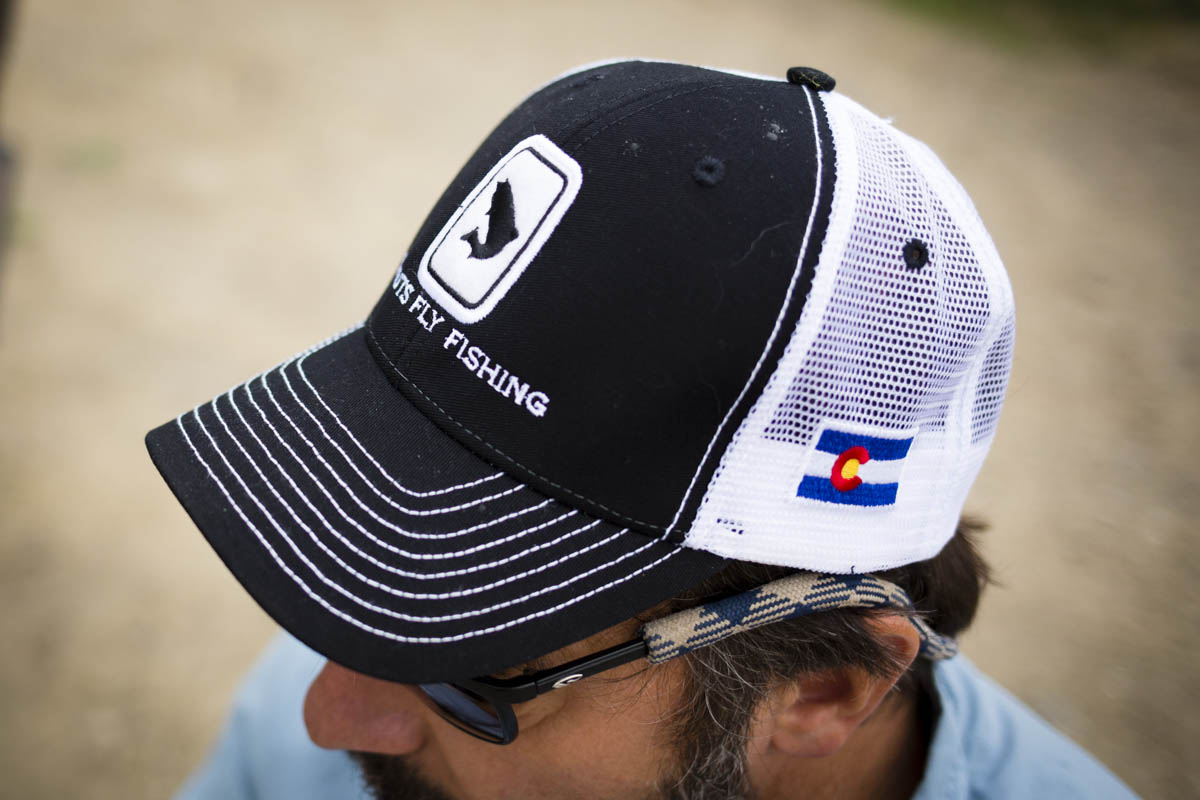


Snow and Science Double Dip - On Assignment for the NYT's
A funny sort of twist of fate that I ended up on two section fronts for the Sunday New York Times last week. One was the Travel Cover, which ran a story I shot last year about backcountry skiing in Oregon. This involved me learning to backcountry on the job, while attempting not to kill my cameras (this is a mission I failed). Huge thanks to Three Sisters Backcountry for ensuring I didn't die. The second was for Sunday Business, a profile of intel's director of user experience research, Dr. Genevieve Bell. Not everyday you get to a bond with a robot and roam the halls of Intel.
Two very different projects, both ones that pushed me as a photographer. Which is what I love about working for The Grey Lady. Plus, I'm not gonna lie, seeing your pictures printed huge is kinda cool too.
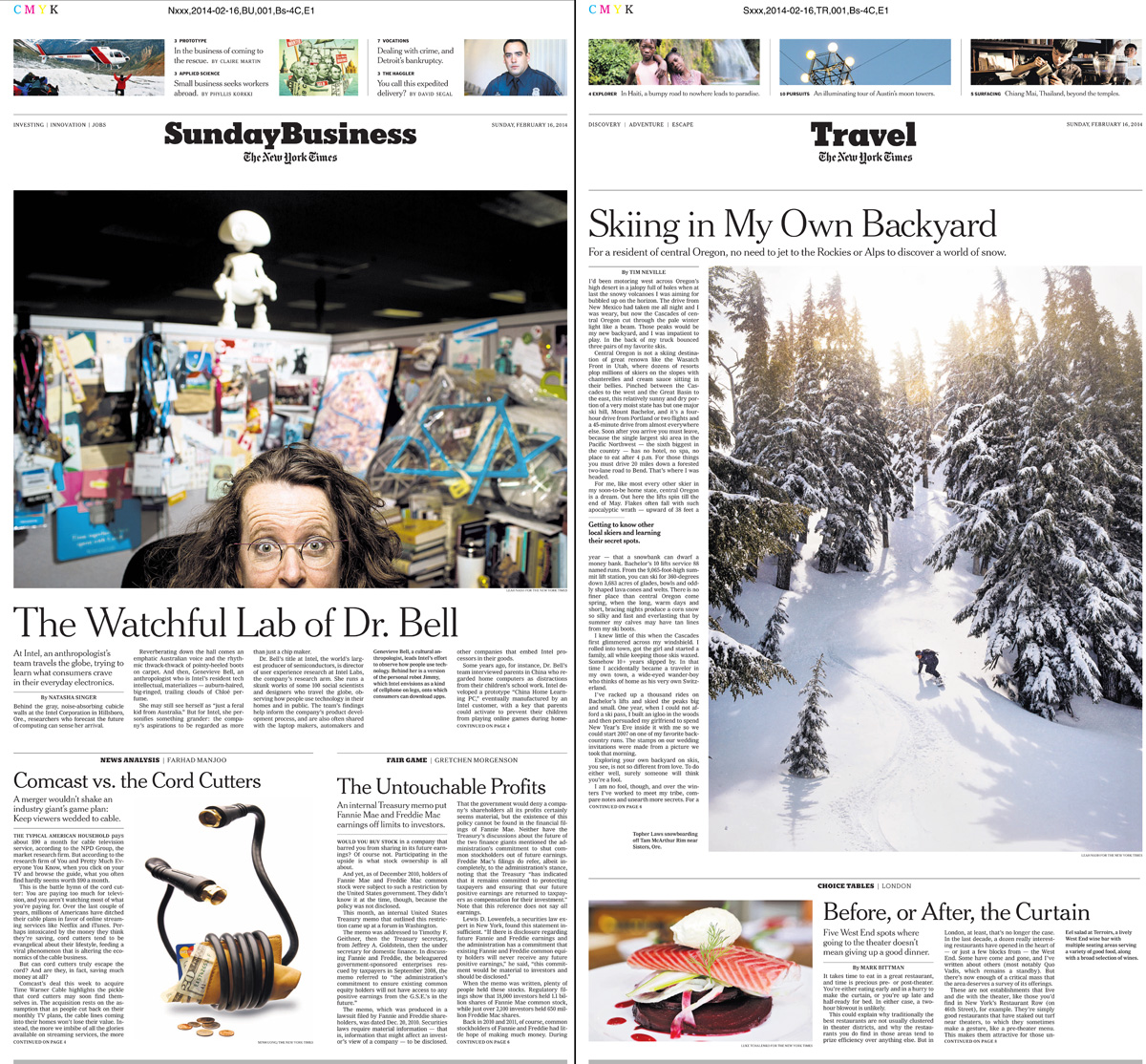
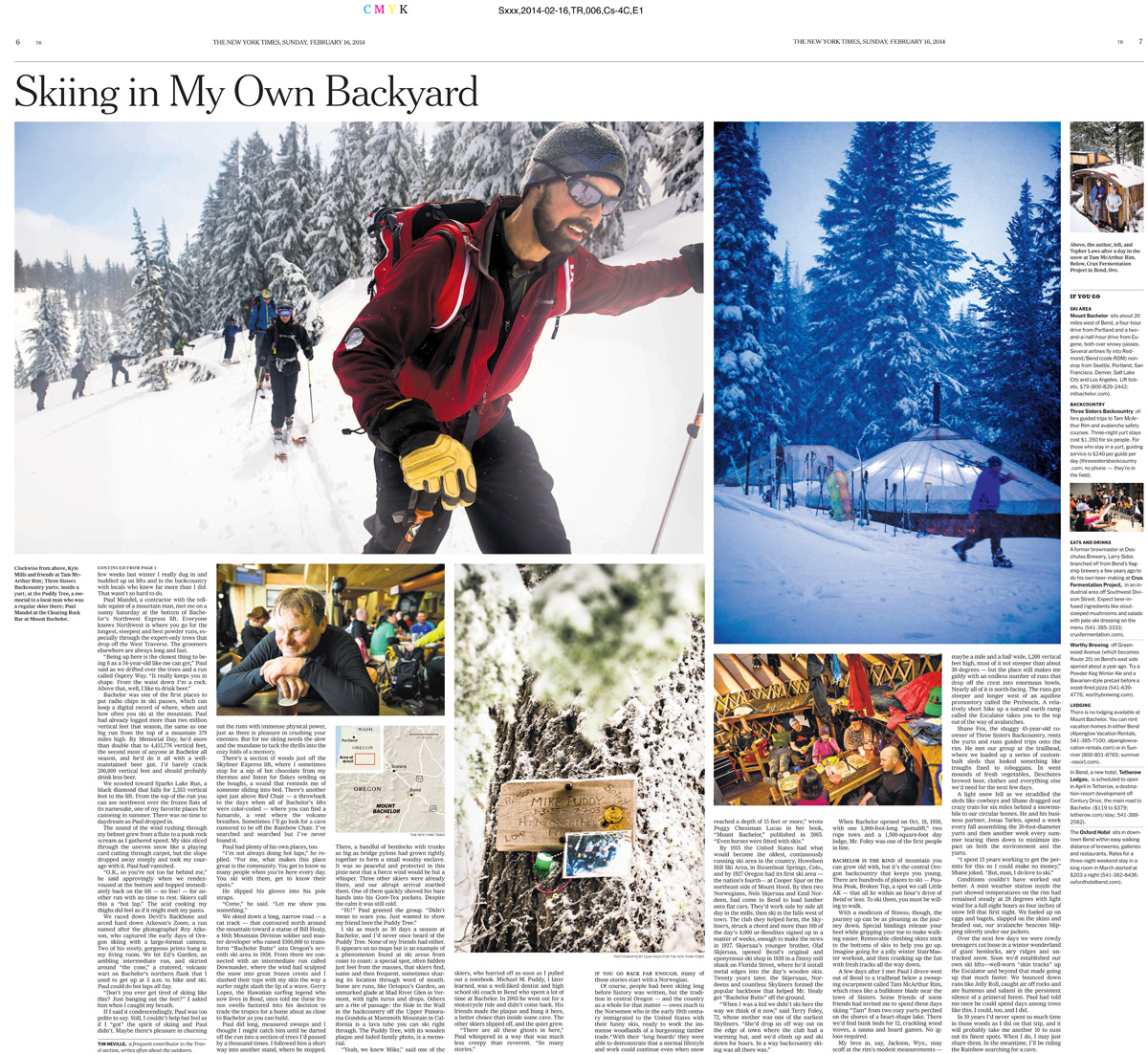
The Traveling Cantor, Jack Falk - For the NYTs
Photographed the charming Jack Falk for the New York Times for a story on traveling cantors. Congregations that are too small to have their own will bring him in for the High Holidays. Jack kept me entertained with jokes and even sang for me a bit. I was basically loving life until I was dive bombed by wasps. Clearly camera shy, they were not interested in having their picture taken. My hand blew up to about hulk size. Fortunately, Jack's wife was nice enough to give me a poultice to take the swelling down and I was able to carry on. It's rough out their sometimes, even for God's chosen people.

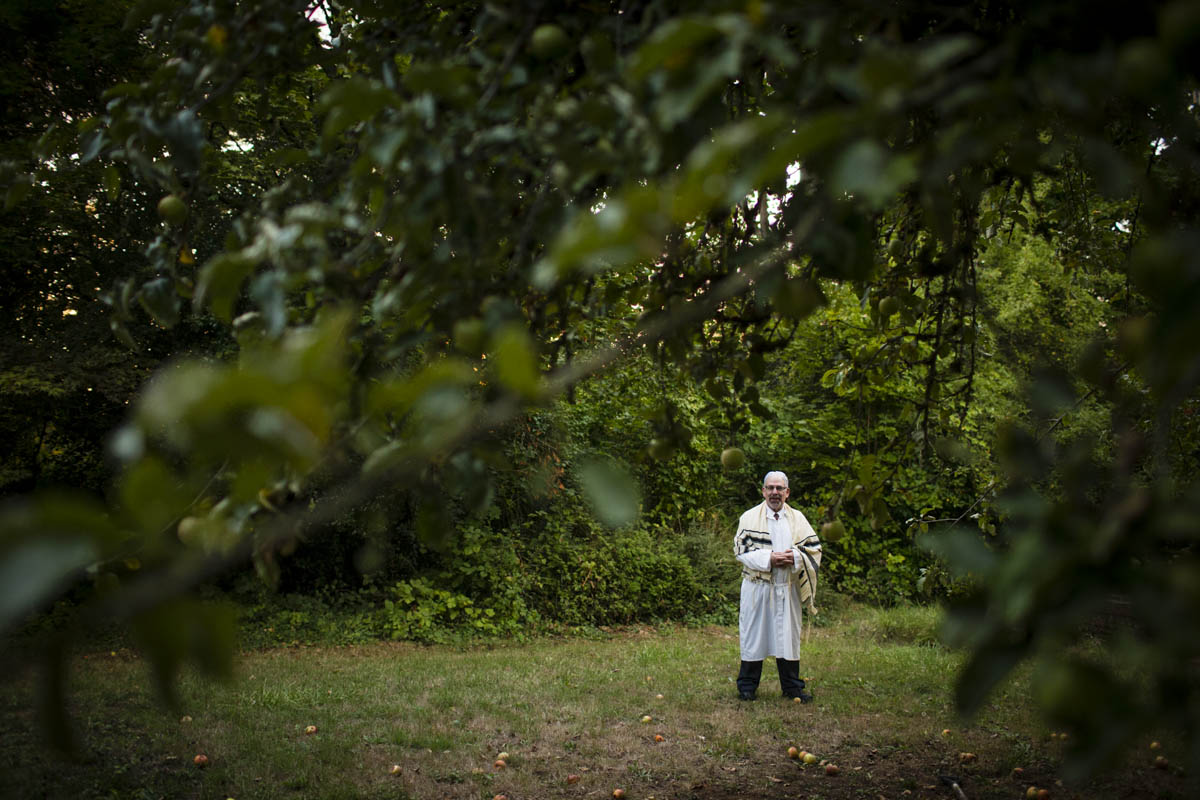
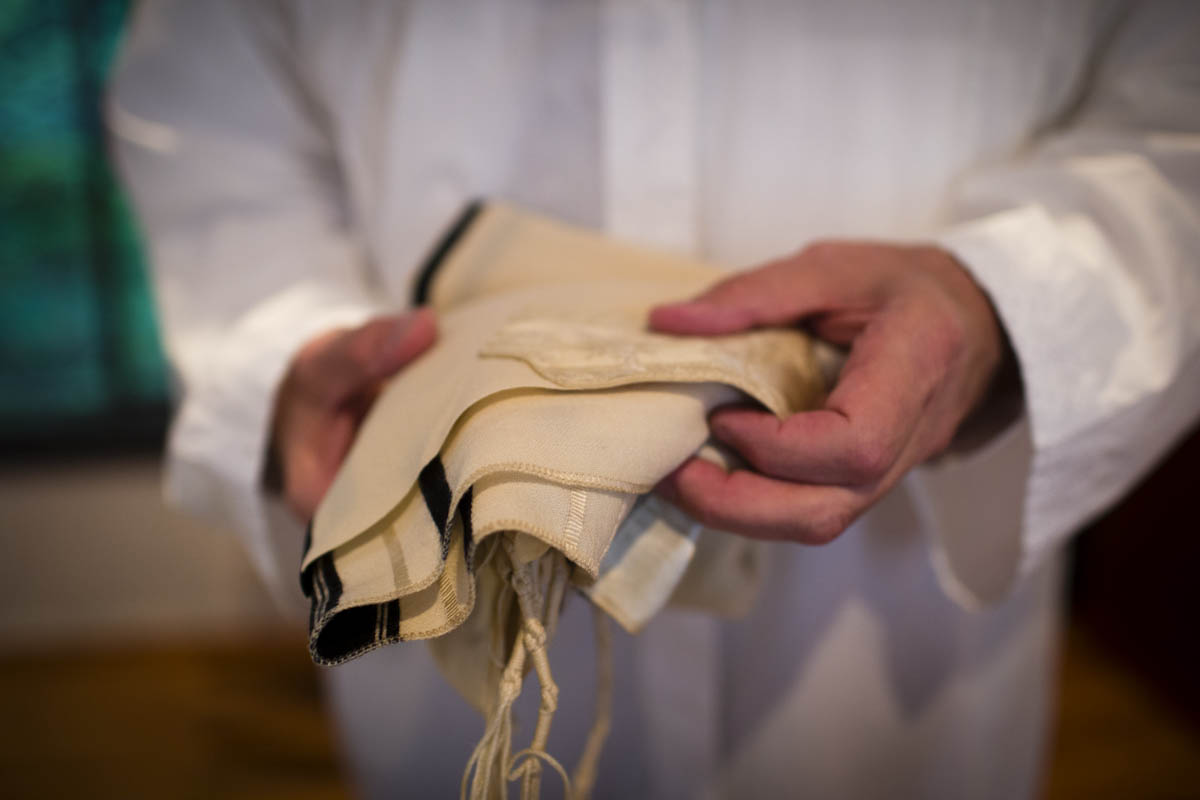
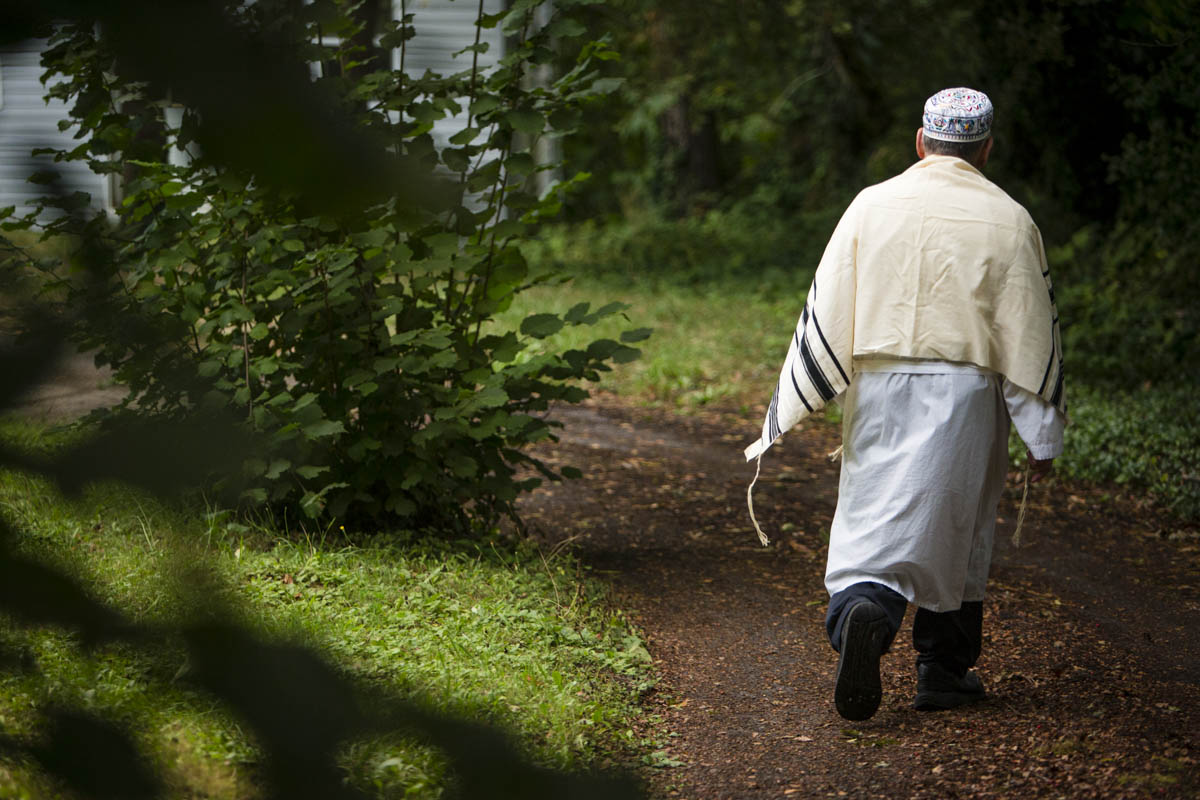

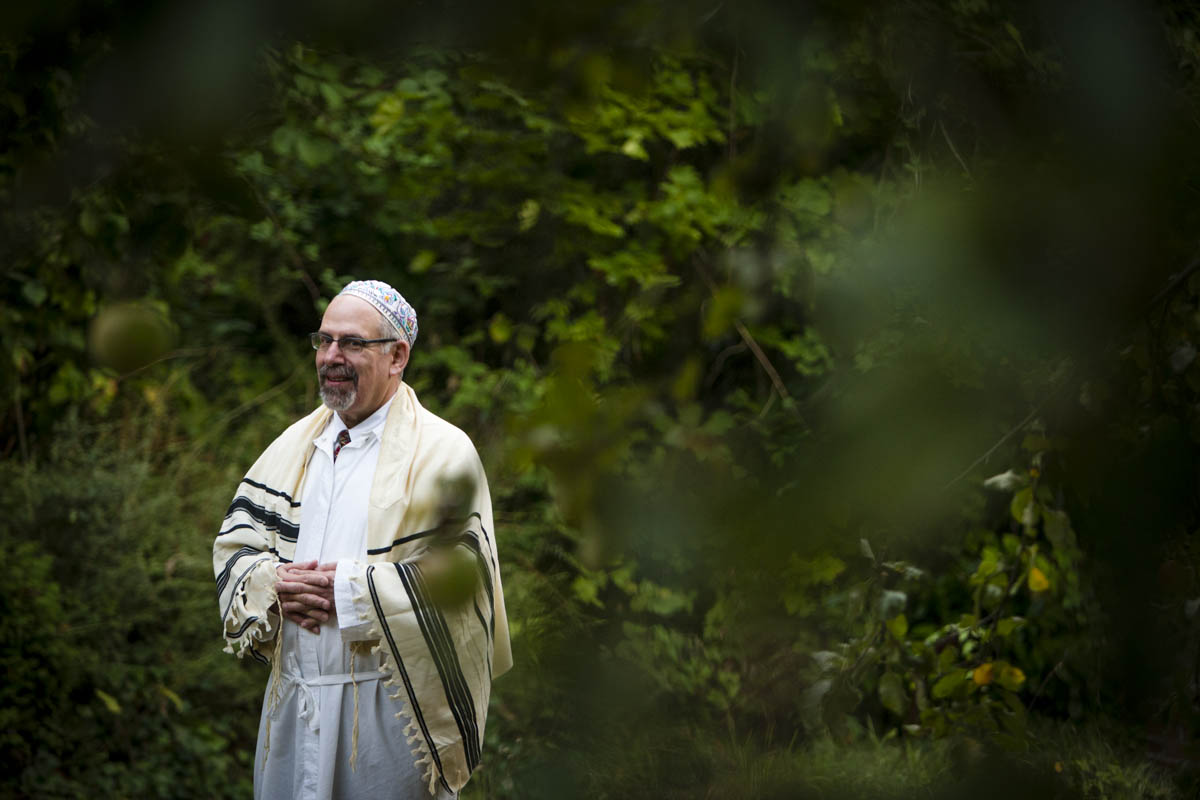



NYT - Artist Chris Johanson
Artist Chris Johanson posed at home for me, and the New York Times. Chris is low key but is making big waves with a monograph out this year on his work out from Phaidon. Such an interesting guy, sweet, quirky, with a knack for saying things unlike anyone I'd ever heard. Example. Instead of saying, "Should I smile?" he says, "I'm feeling happiness now, would you like me to show it?" Perfect. His home was crammed with art (a man after my own) most of which he had swapped with his fellow countrymen, all of which had a story. Spent about 45 minutes with him and then an extra 30 with that cookie cutter, figuring out the best way to shoot the damn thing (note: kitchen background most successful). When I finished and am out the door, Chris peeks his head out of his front door and says, "You have a nice way about you. I had fun."
Aw schucks.
Astoria...all the cool kids are doing it.
I love Astoria...I really do. This is REALLY where hipsters go to retire, or at least this is where they go to open up cool restaurants and breweries and coffee shops and vintage stores where you can furnish your très cool 1910 Craftsman Bungalow. And did I mention it is where the film, The Goonies, was shot. I mean, really. The New York Times apparently also agrees, such a smart group of folks. I would worry that this place is gonna get way overrun with tourists, but the often, uh...wet weather takes care of that, with sunny days making you wonder if you've done something good in a past life.
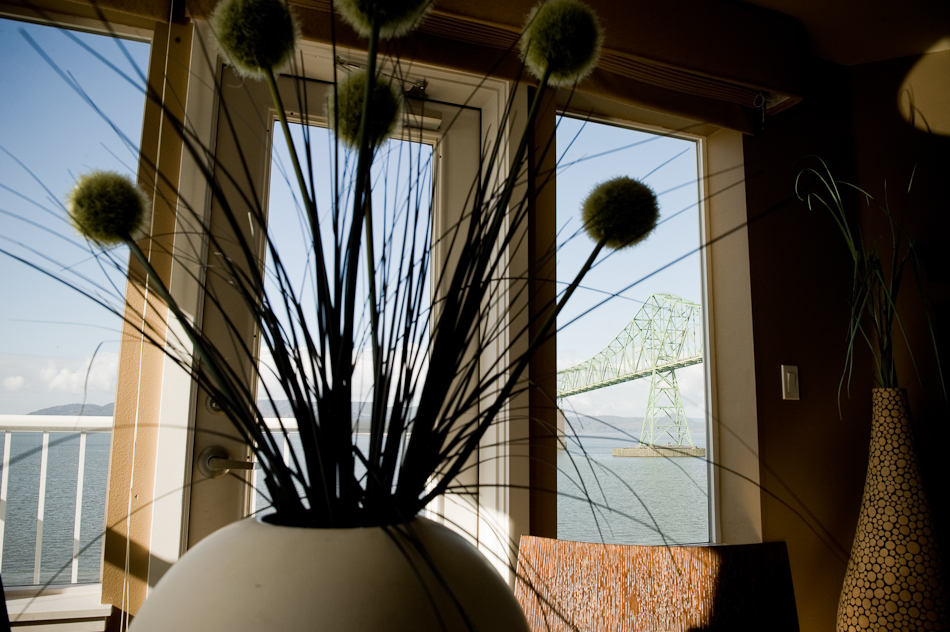






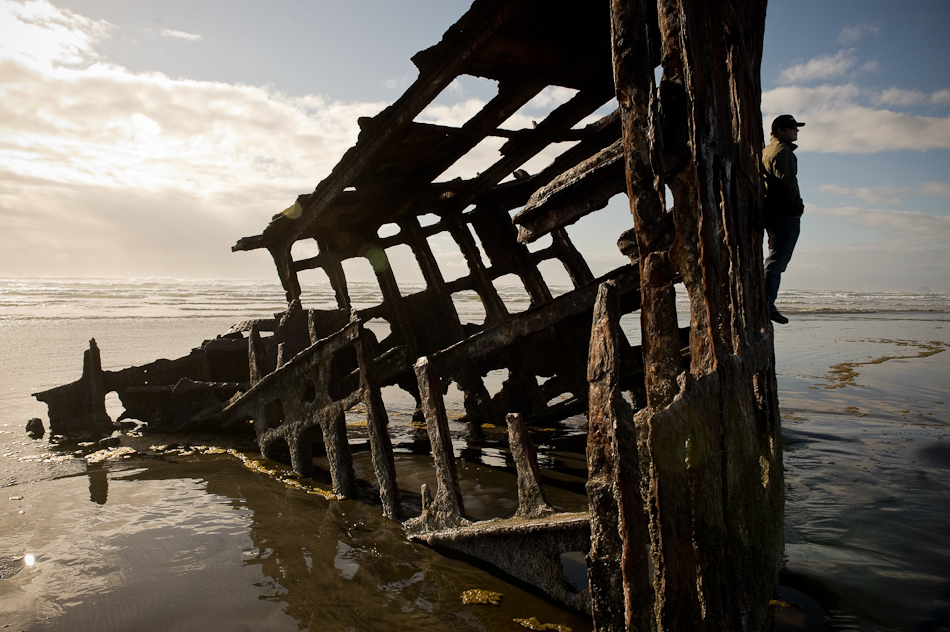
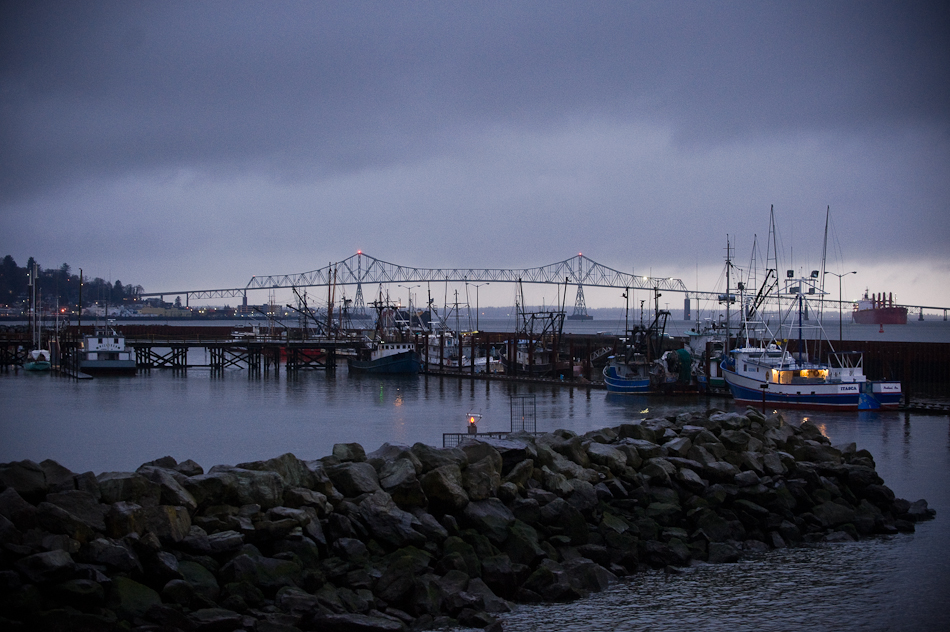
Does this monkey make me look fat?
Spent the day at the Oregon National Primate Research Center for the New York Times. The whole facility is immense with more than 4,000 monkeys on site. One thing I learned was to never show your teeth to a monkey or look then straight in the eye...it makes them aggressive, perhaps good advice for the world of dating. I was there to photograph the fat monkeys, the ones spending their days on the couch, eating chips and drinking soda. Ok, not really. But for the last several years researchers there have been doing tests to mimic the average American diet and lifestyle and the results aren't pretty (though they did end up on the front page of the Sunday paper). This colony of monkeys have been fattened up to help scientists study the human epidemics of obesity and diabetes.
I left the assignment feeling all sorts of things, like:
"Wow, that was amazing and fascinating and I love my job."
"I am never drinking soda again."
"Do we really need to be caging a bunch of cute monkeys to study how messed up humans are?"
But mostly I felt kind of sad. Being obese is not an easy thing, it is bad for your health and your esteem and your career, but it is also not something easy to fix, no matter how many monkeys we fatten up.
And so I was sad. For the fat monkeys, for the number of times a week I weigh myself, and for America.
Lessons on Being Grateful
Recently did a pretty intense shoot for the New York Times. I work for the paper probably once a week, as they seem to have a love affair with Portland, OR. And while I enjoy shocking people with how low their day rate is (don't ask) they do give me amazing assignments that take me all over the Northwest. Last week I spent a couple of days with some folks in danger of losing their home aid service. As states are trying to balance their budgets anyway they can, it has come down to slashing care givers for the disabled and elderly. Unfortunately, the result is that many of the folks who could get by with 20 to 40 hours of help a month are going to end up in nursing homes once that help is gone. It's a pretty sad and ironic tale of dealing with budget cuts in a no-win situation.
Enter Ken Poe, a former pilot who suffered from Polio as a child and as a result has trouble walking and standing. His house reminded me of a episode of the TV show Hoarders. Boxes, papers, and books formed a maze while a 25 foot oxygen tube snaked throughout the room. Ken agreed that while it looked like a tornado had touched down, in reality everything had its place and it was his way of "wall surfing," using the stacks to help him navigate around his house.
Throughout the day Ken told me bits and pieces of his life, how he got sick, what he studied in school, his escapades flying around Mount St. Helens right before it blew. Everything was told in a matter of fact manner, and Ken remained upbeat while I clicked away as meals on wheels delivered his lunch and old Perry Mason episodes played in the background.
At one point Ken wanted to move to his bedroom to lie down and needed my help. He could rise to a standing position but because he can't raise his arms more than waist high he needed me to take his hand so he could stand up right. It was almost like a dance, with both of us bowing and then rising at the same time.
I think Ken had fun that day. He had someone to listen to him, someone to pay attention to him. It makes me feel like I've given something then, something to Ken who allowed me into his fragile life where being able stand is reliant upon a pile of papers being placed just so. I love the work I do, I just hope that it makes some small difference and that I leave things a bit better than I found them.
After our time together I thanked Ken and went to my car to smoke cigarettes, cry and remind myself to always be grateful.

